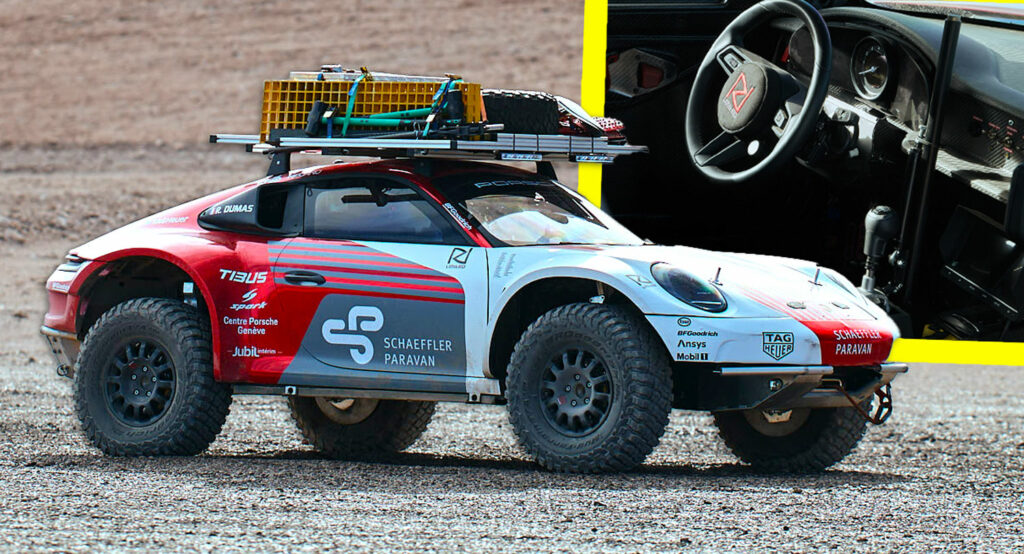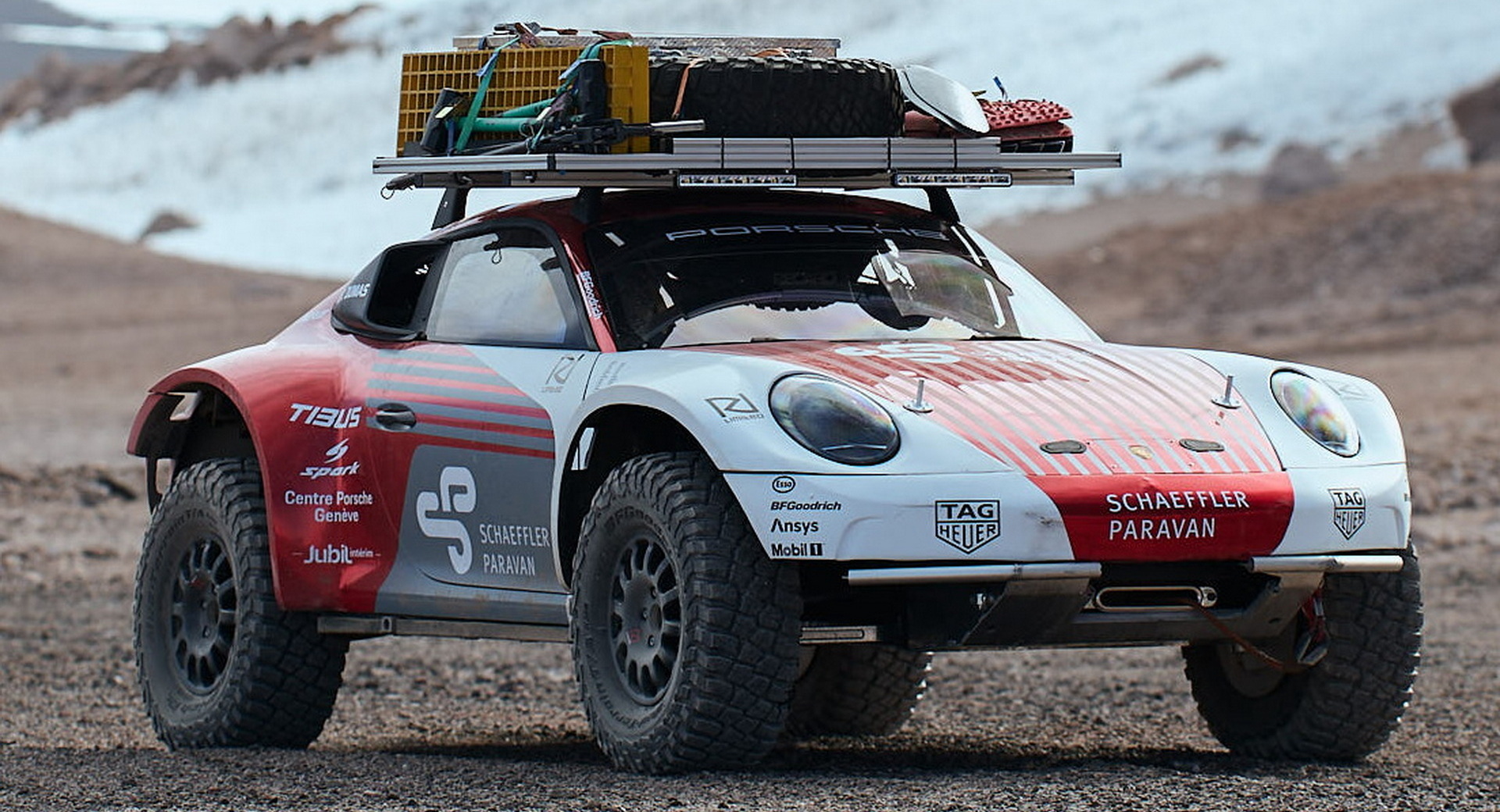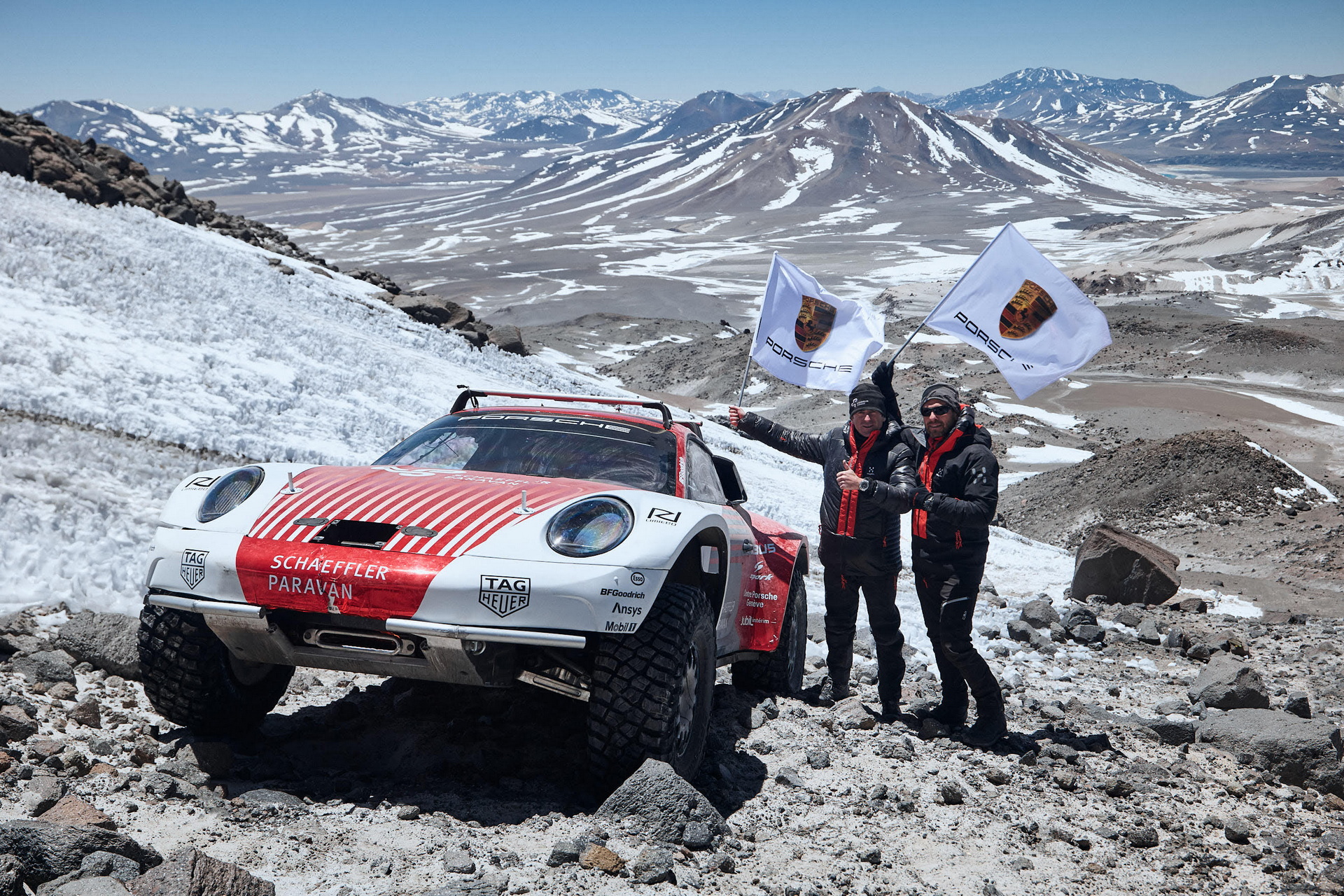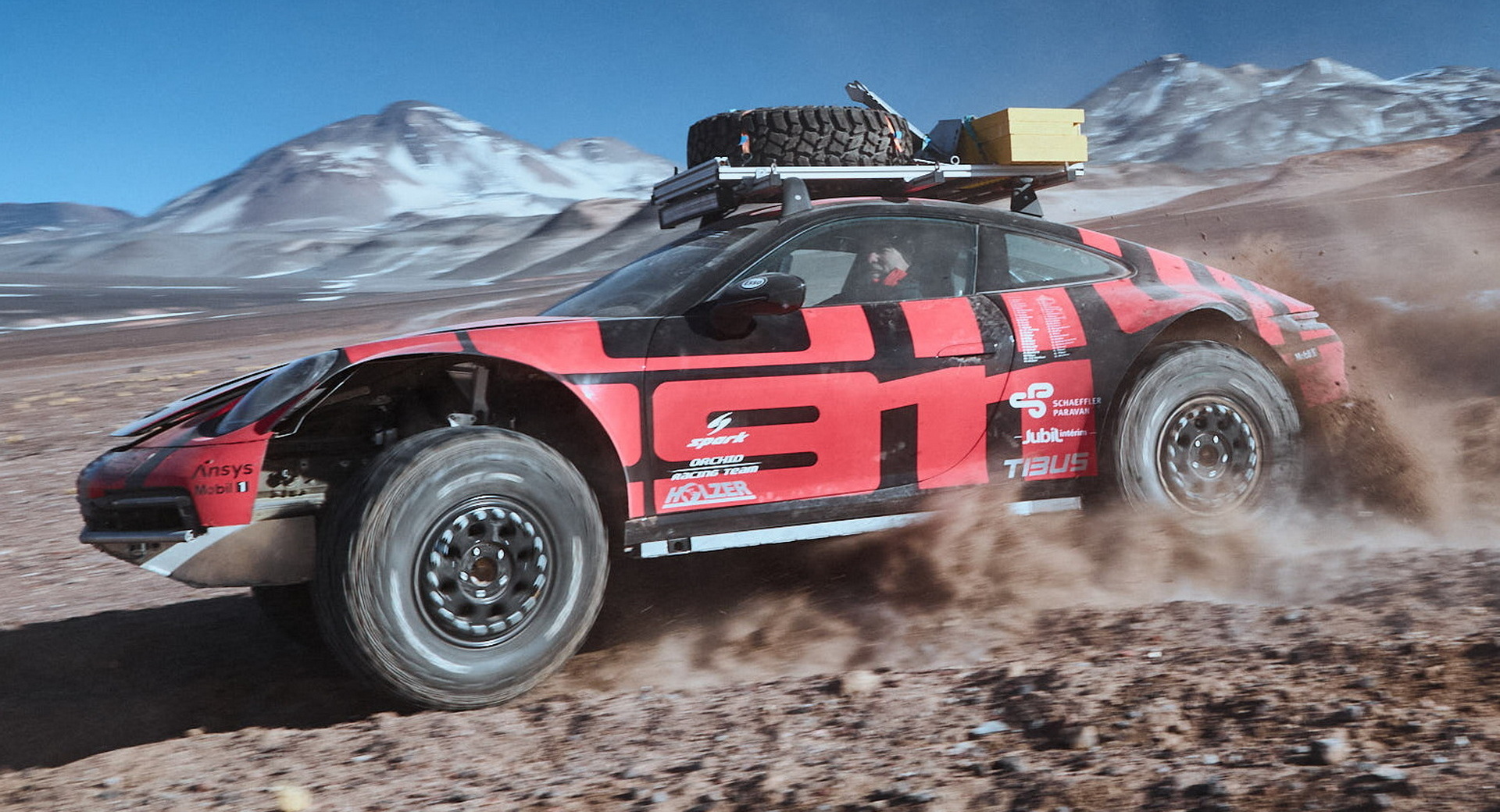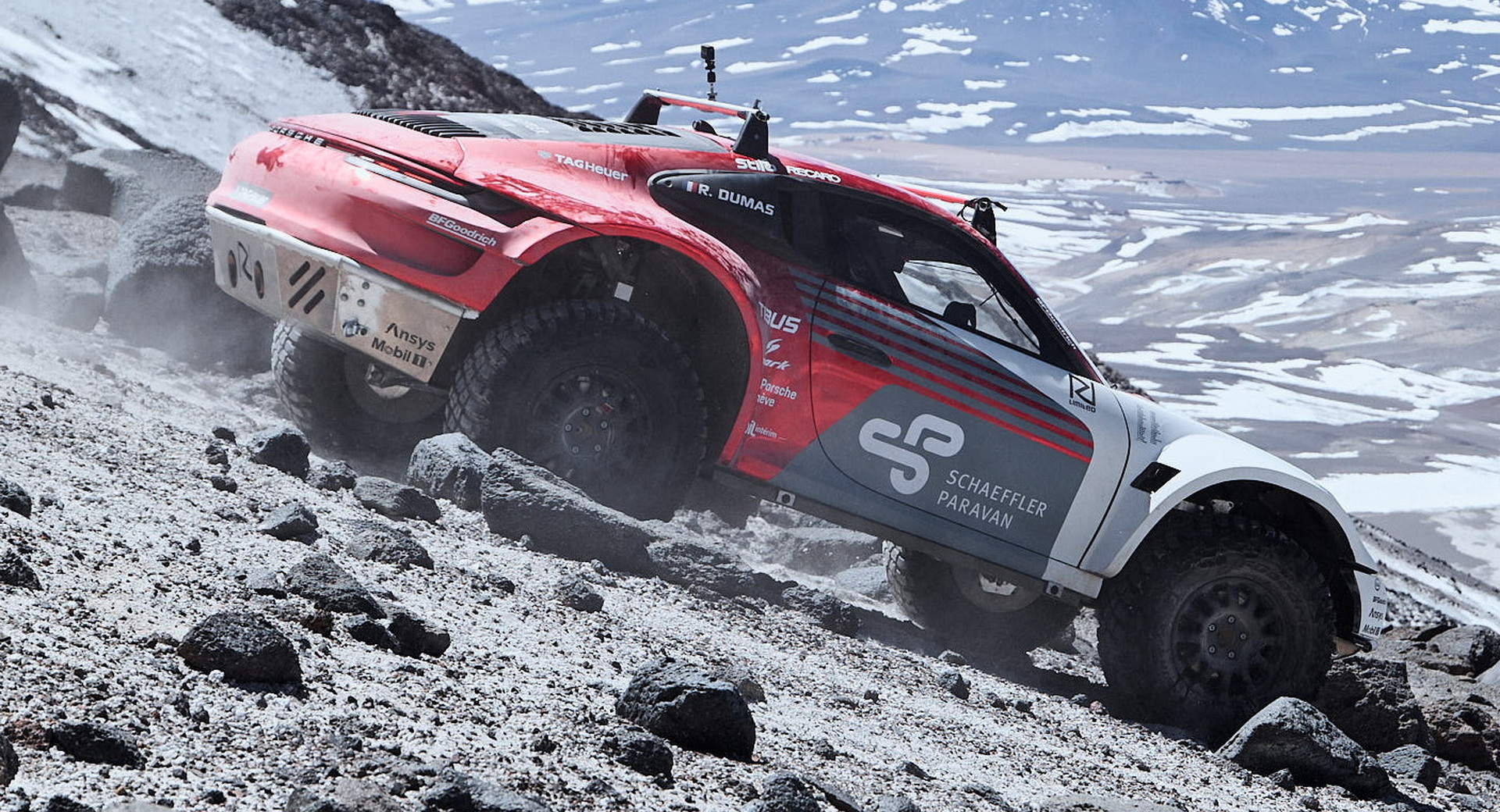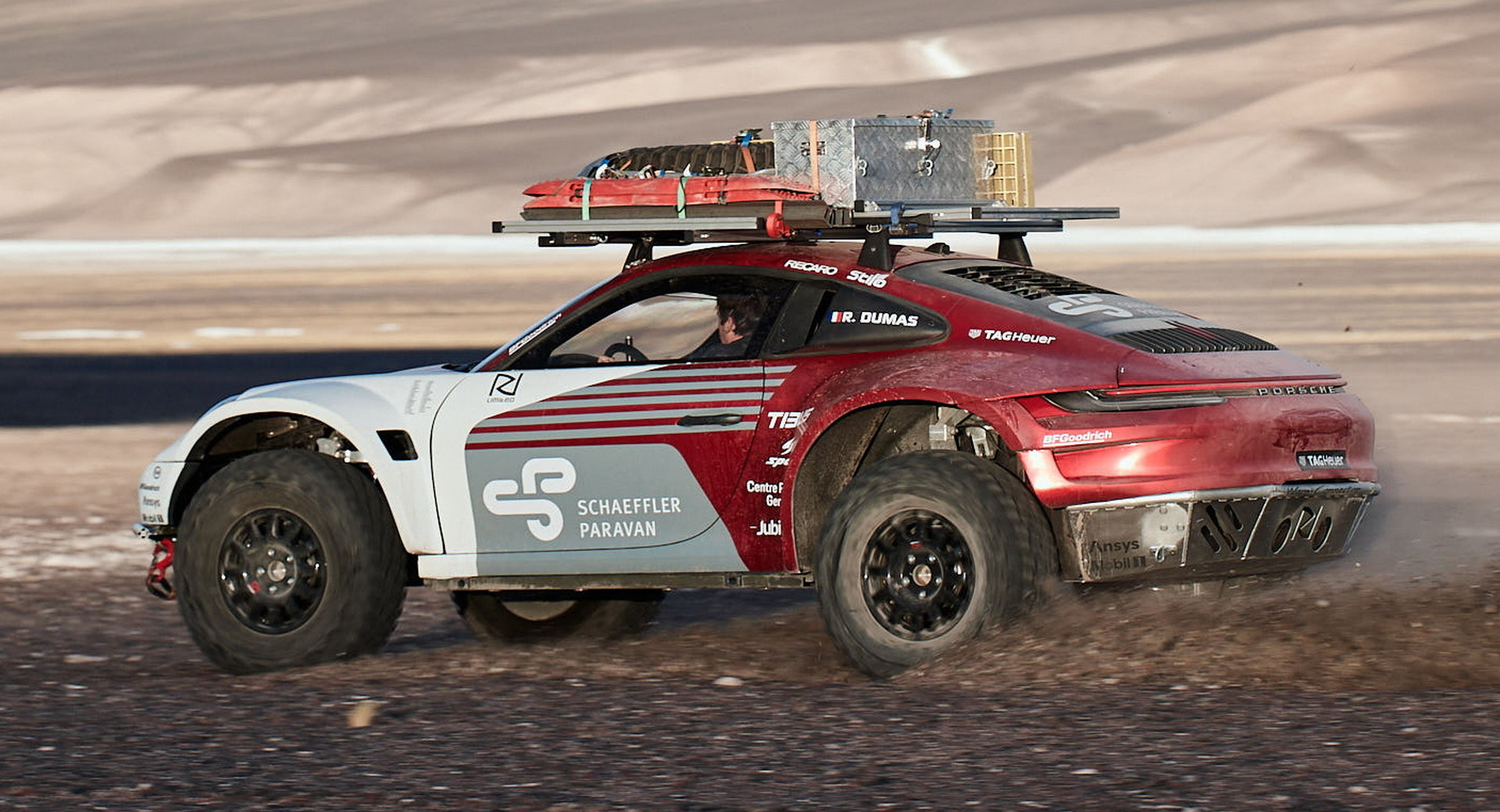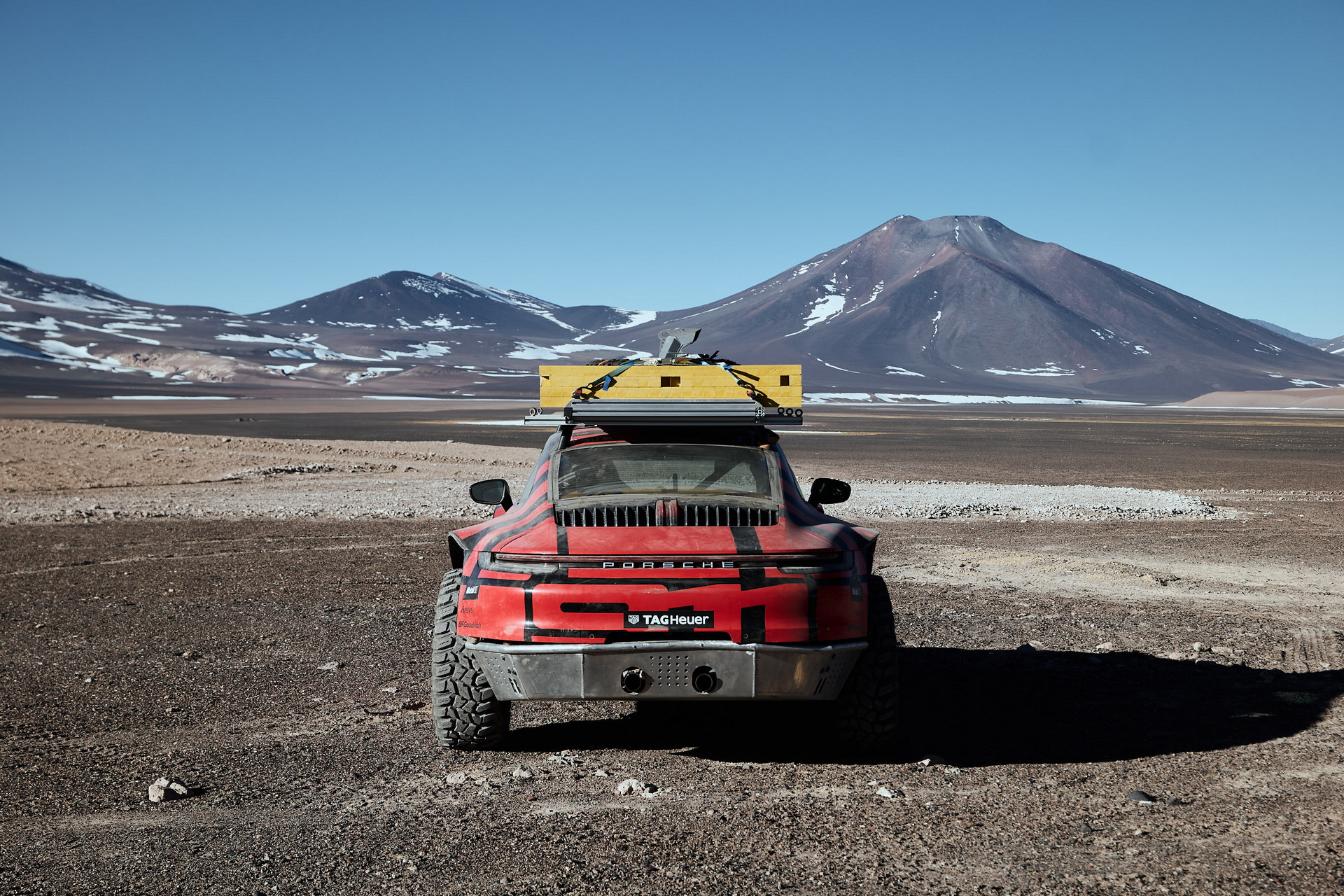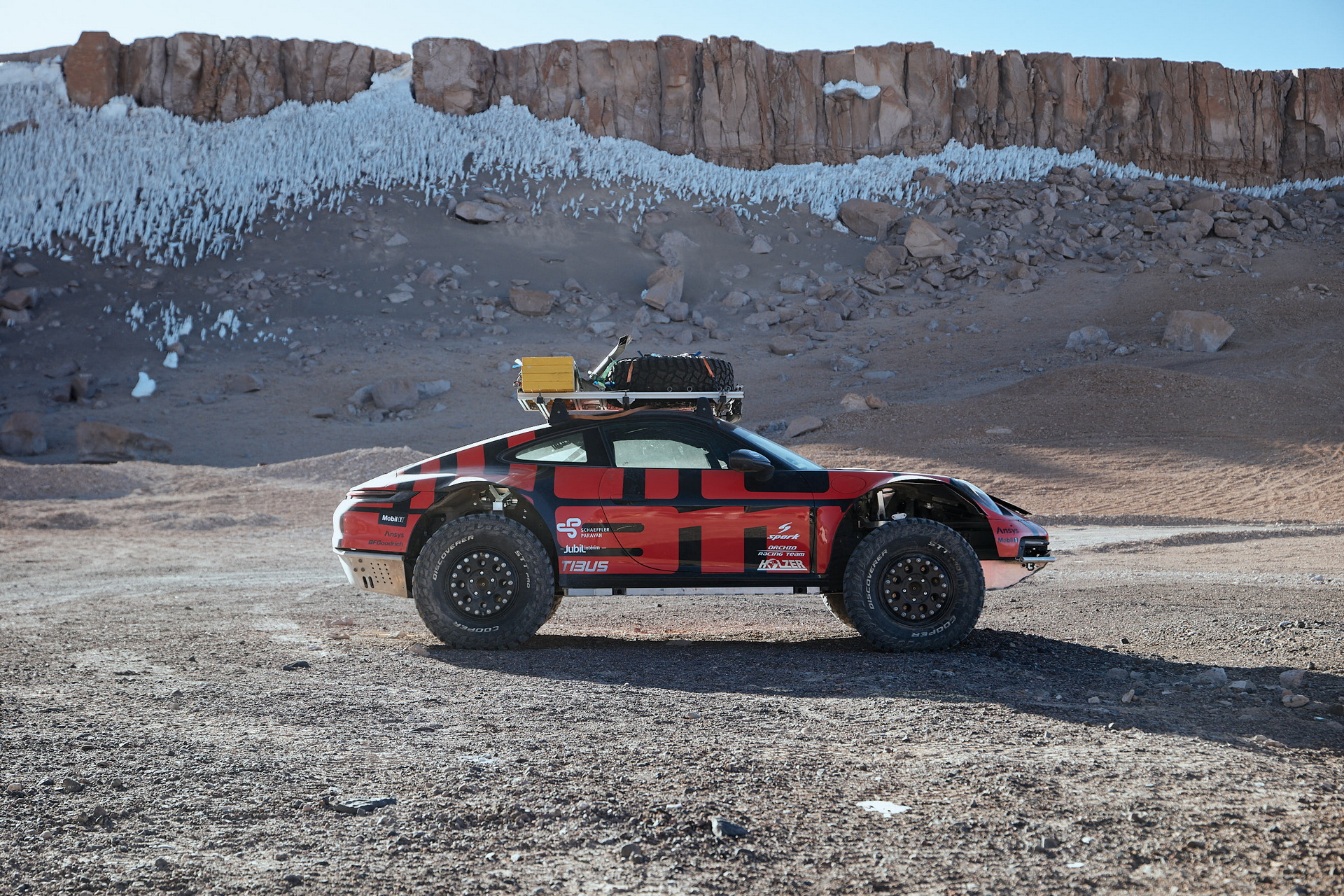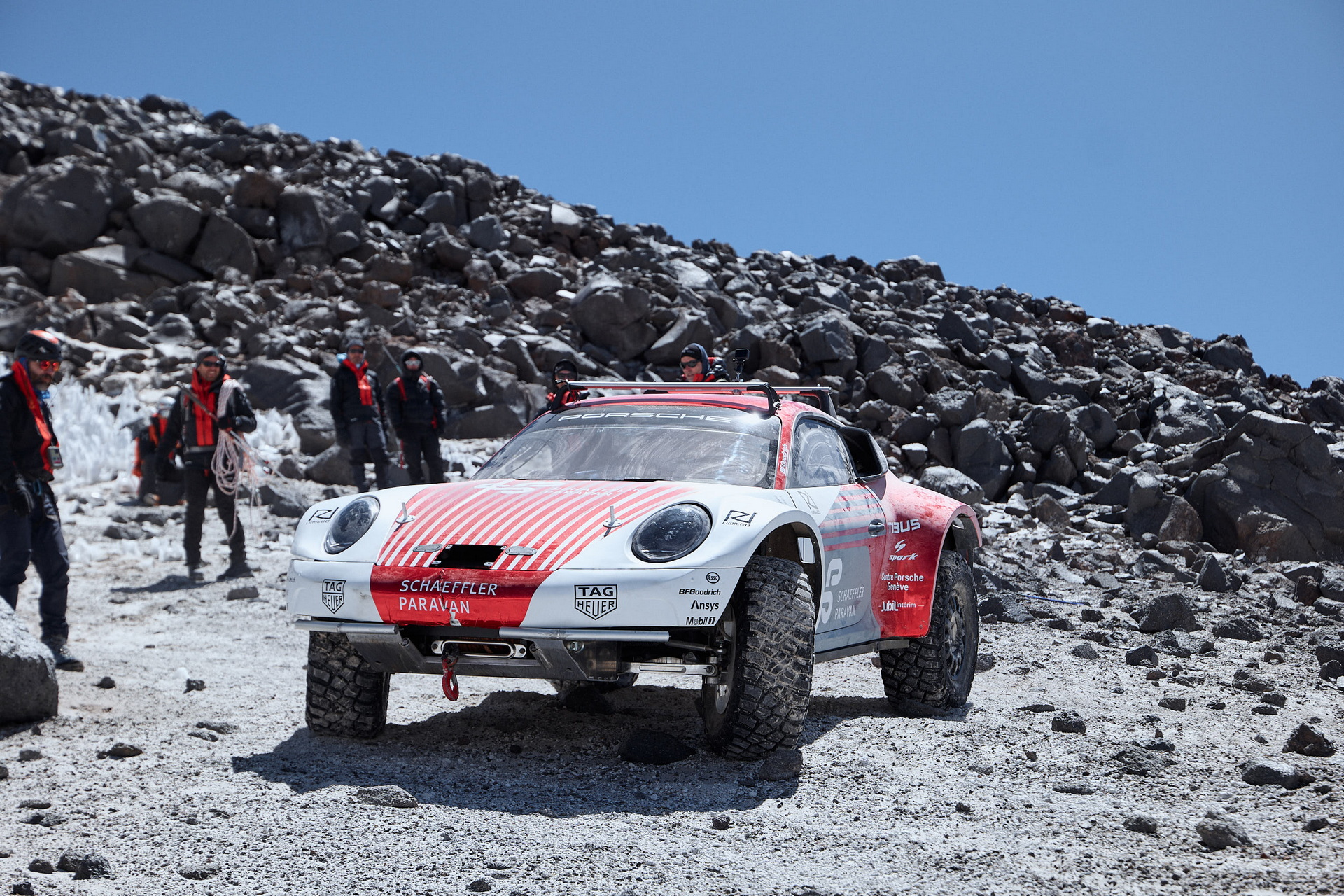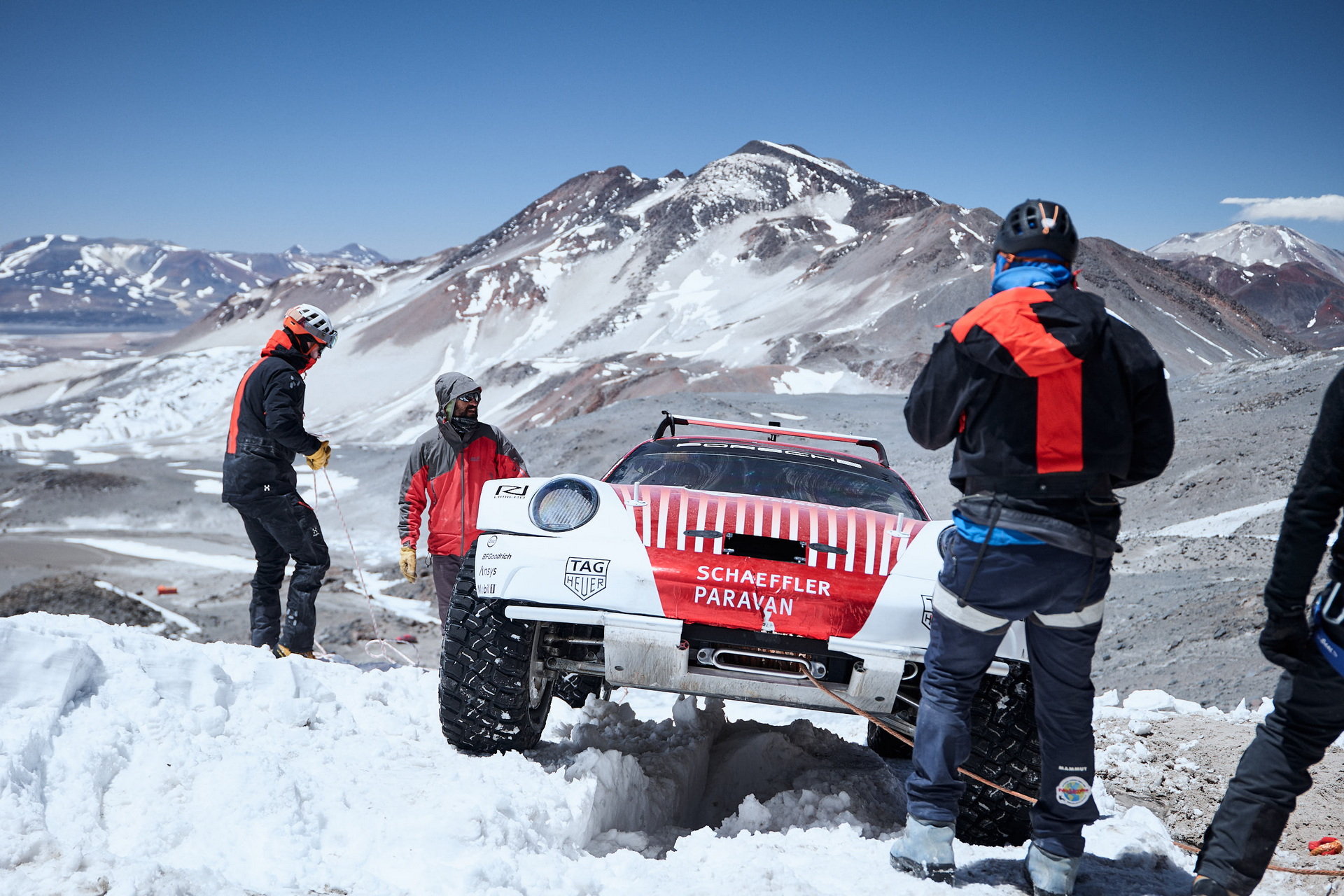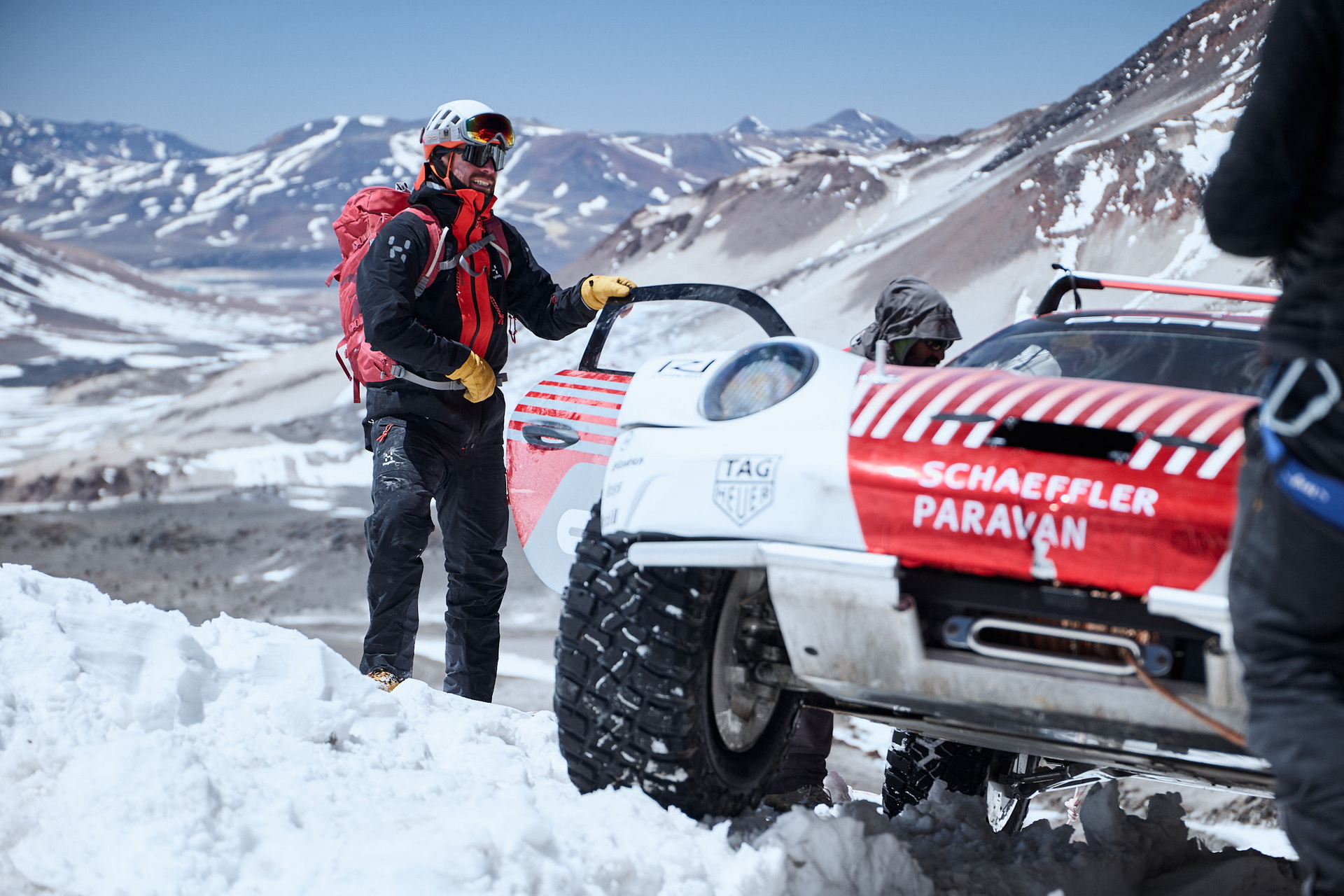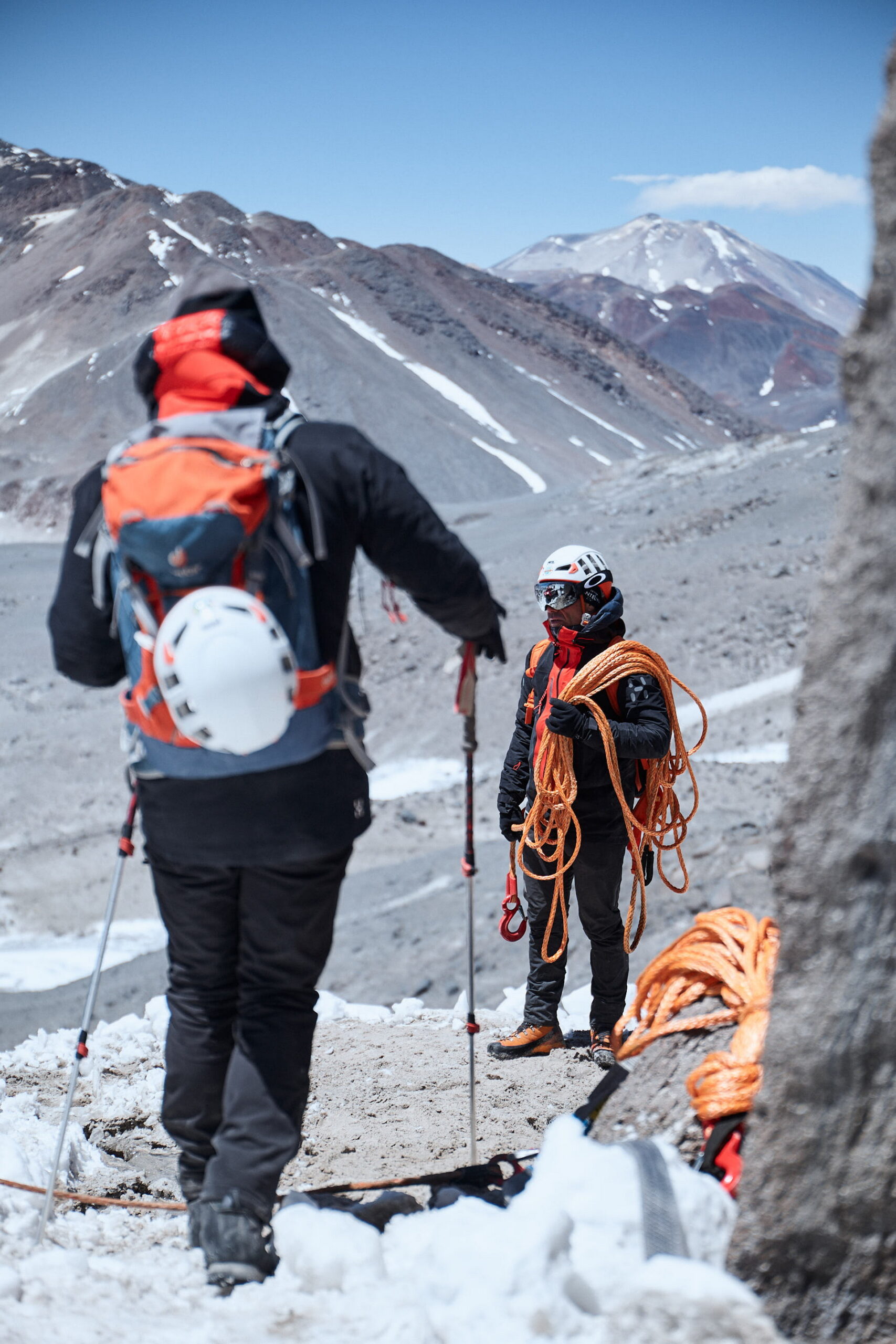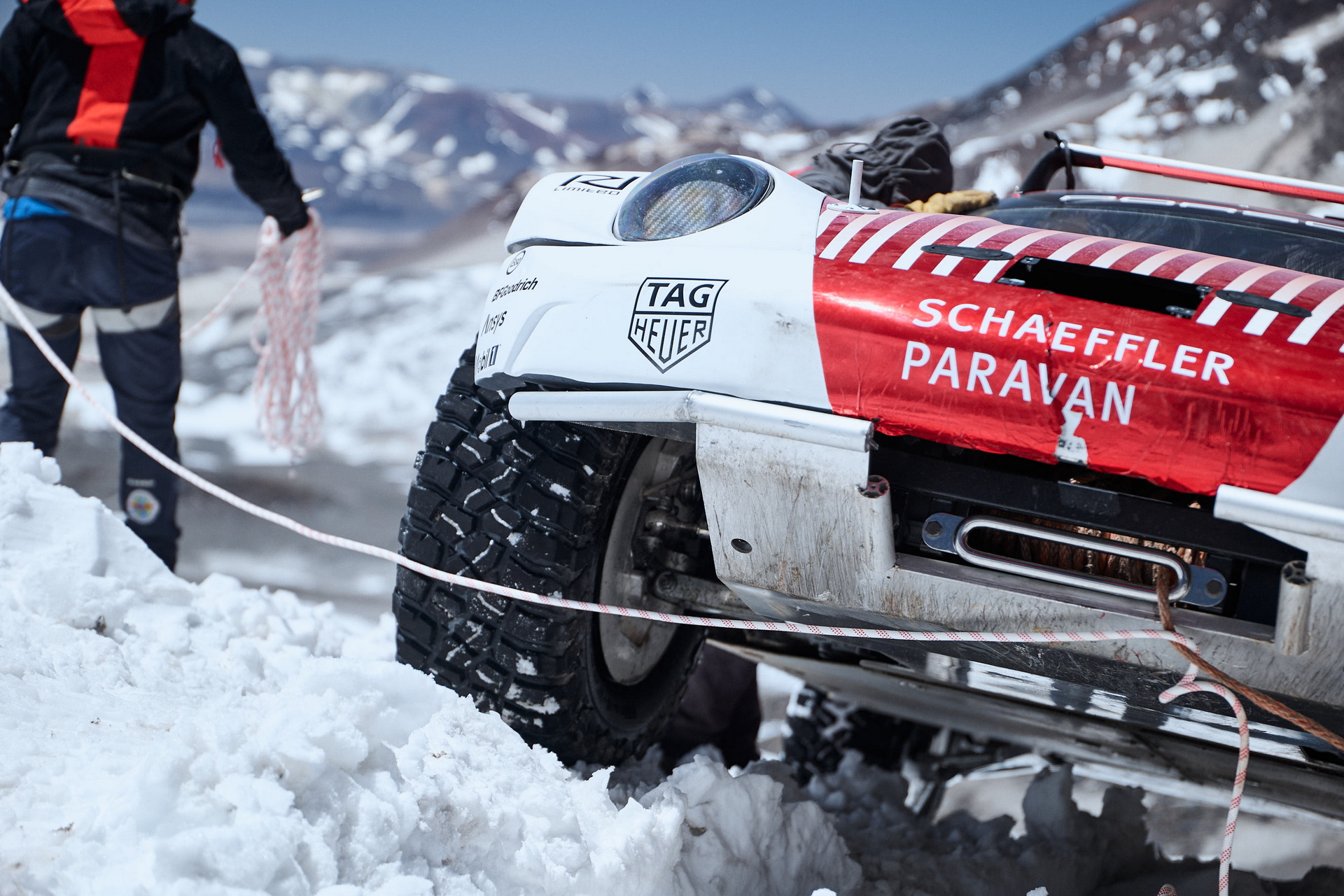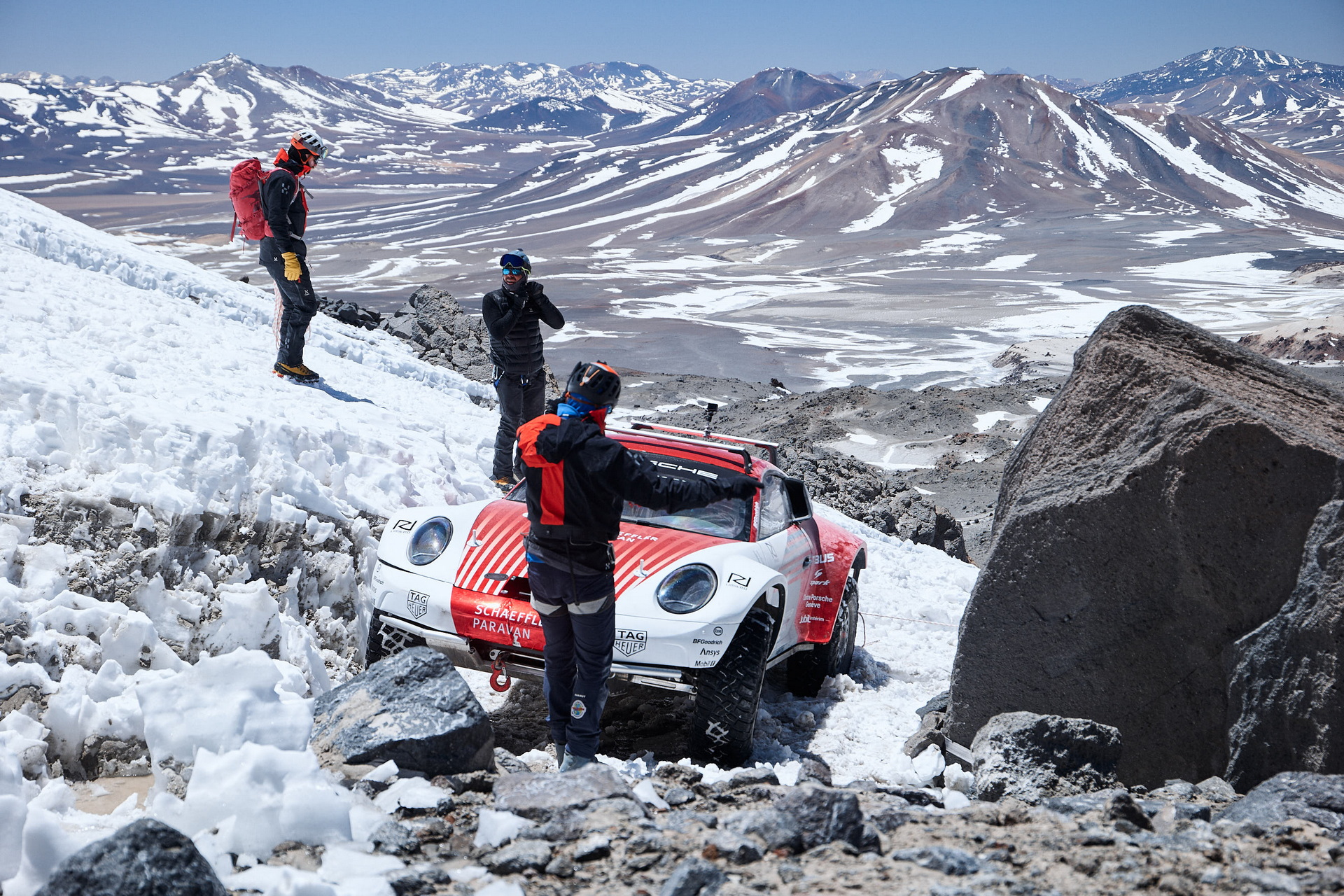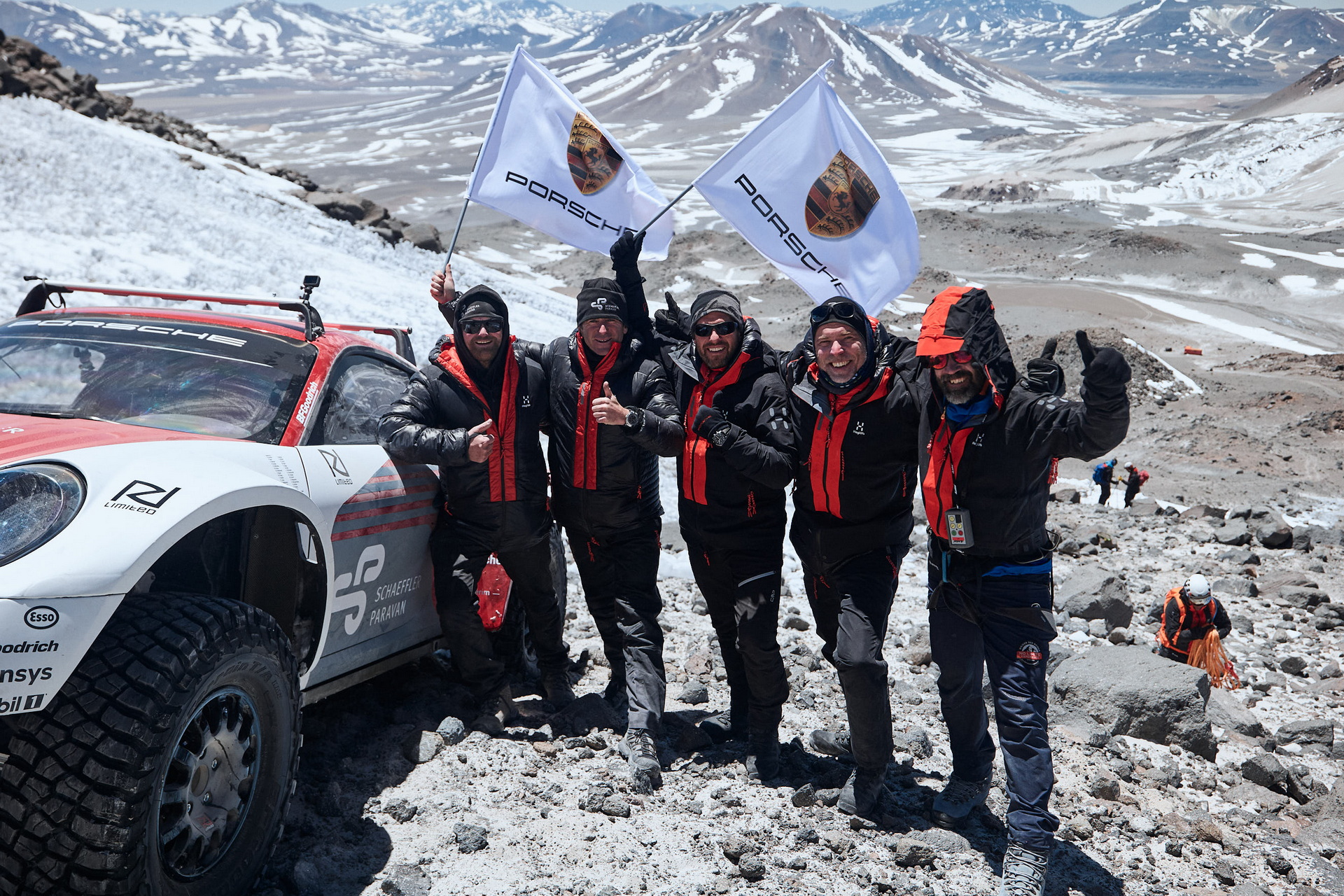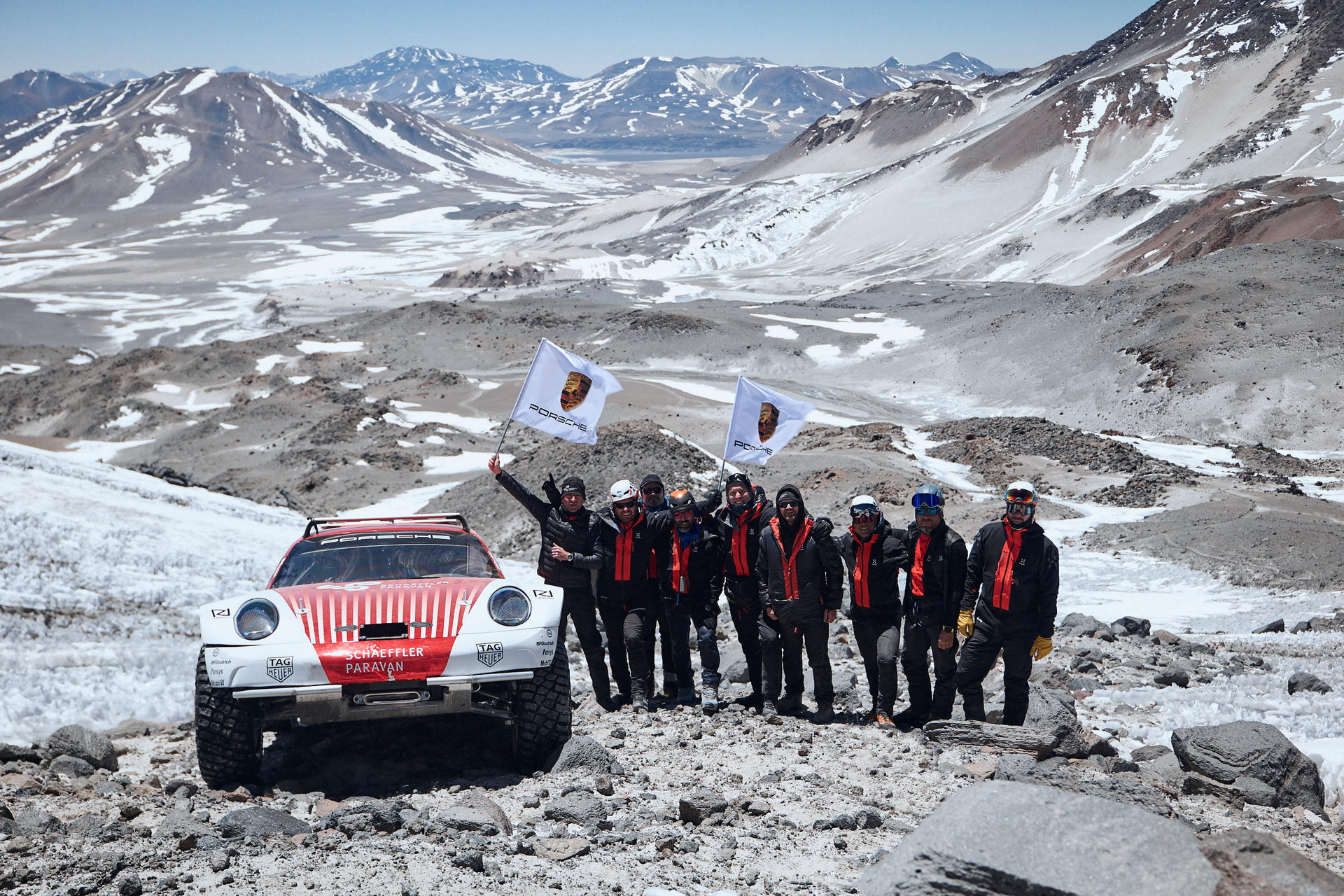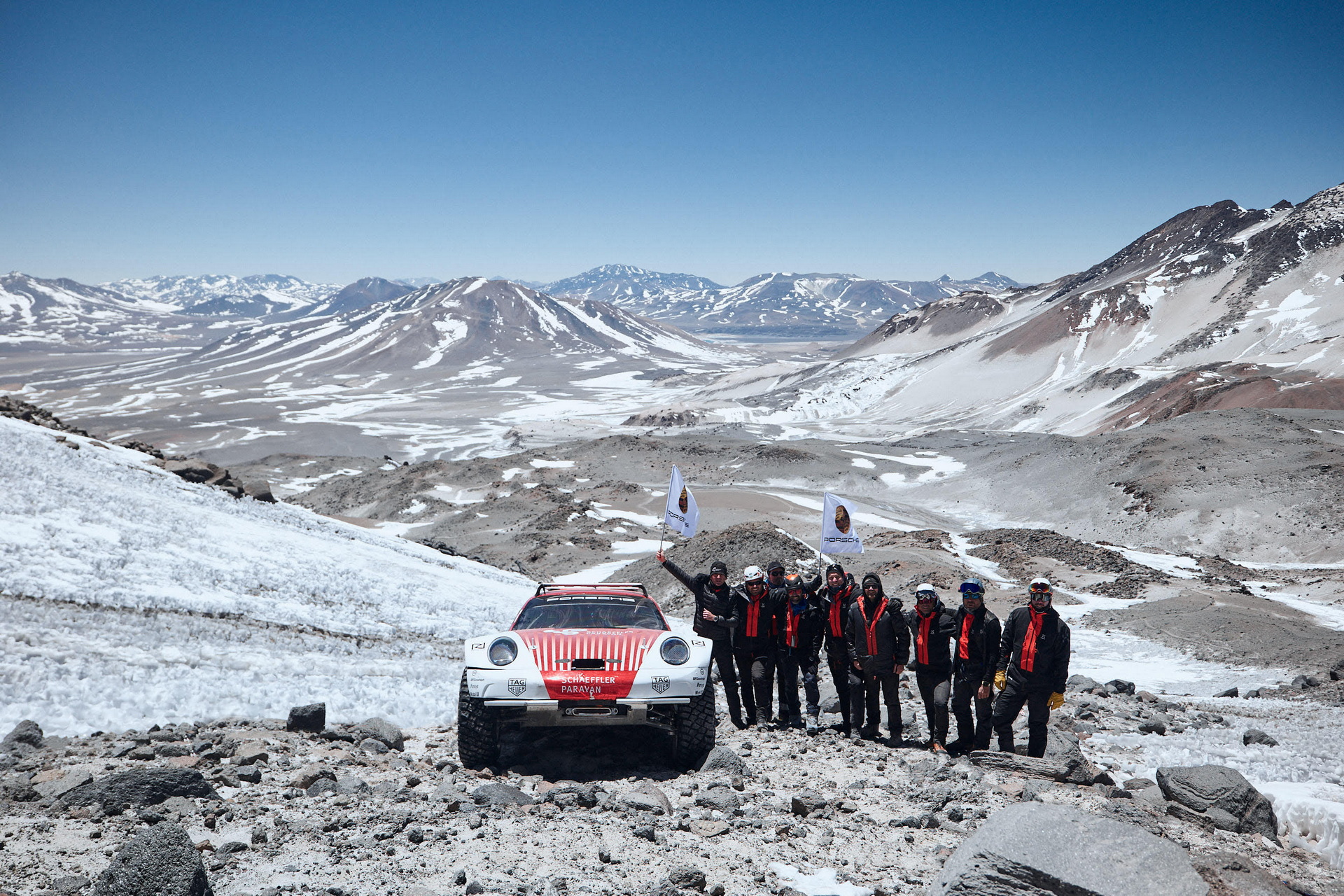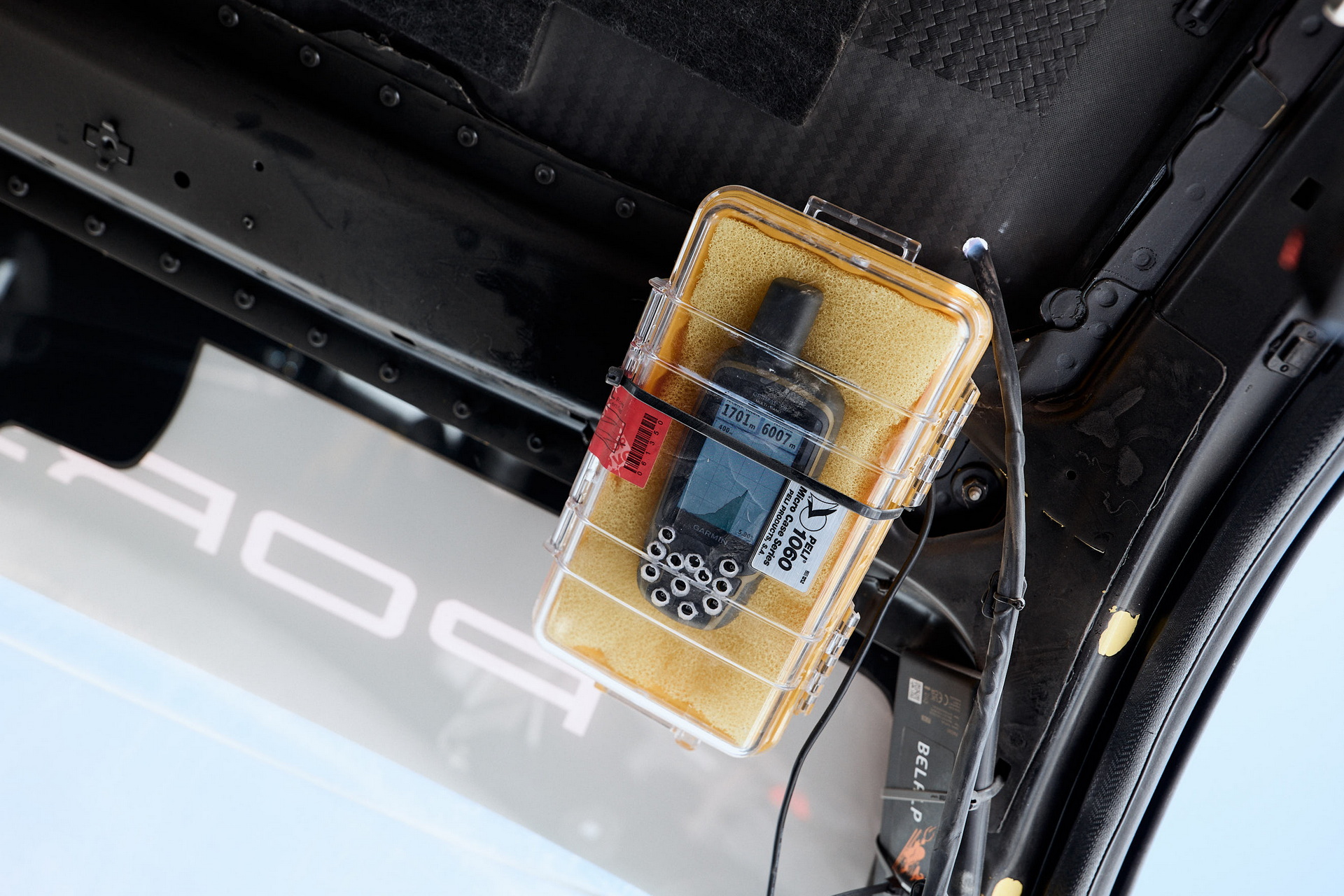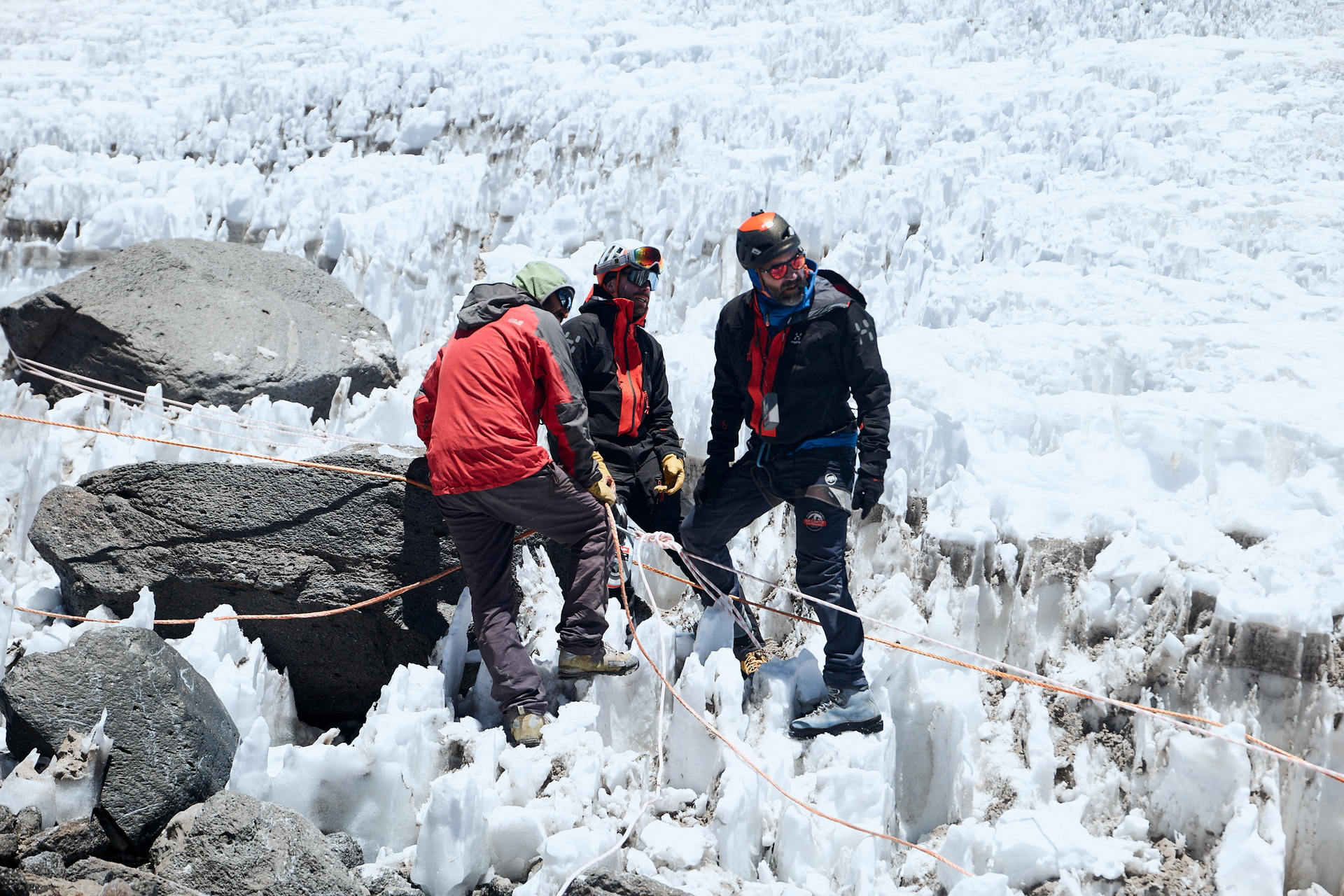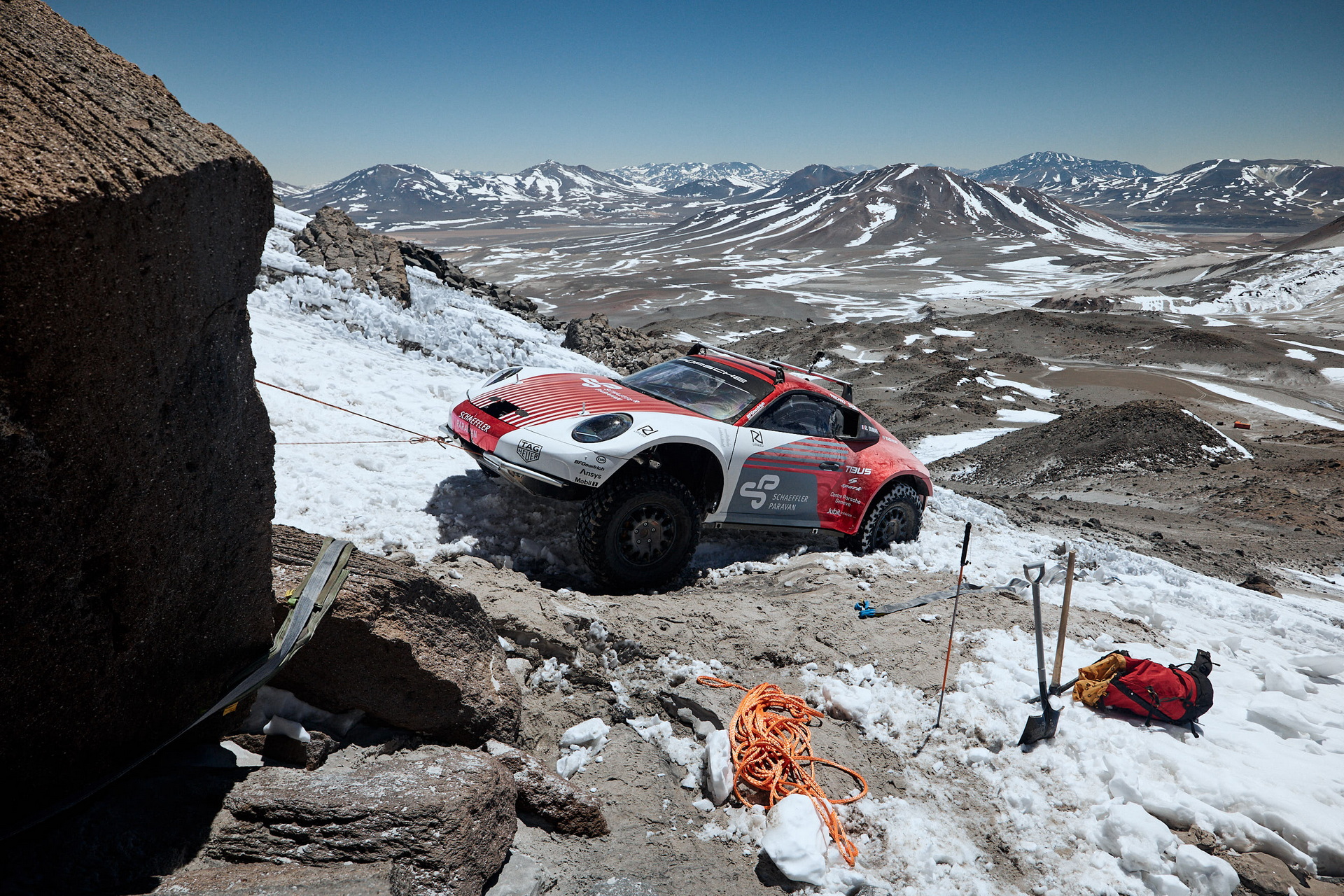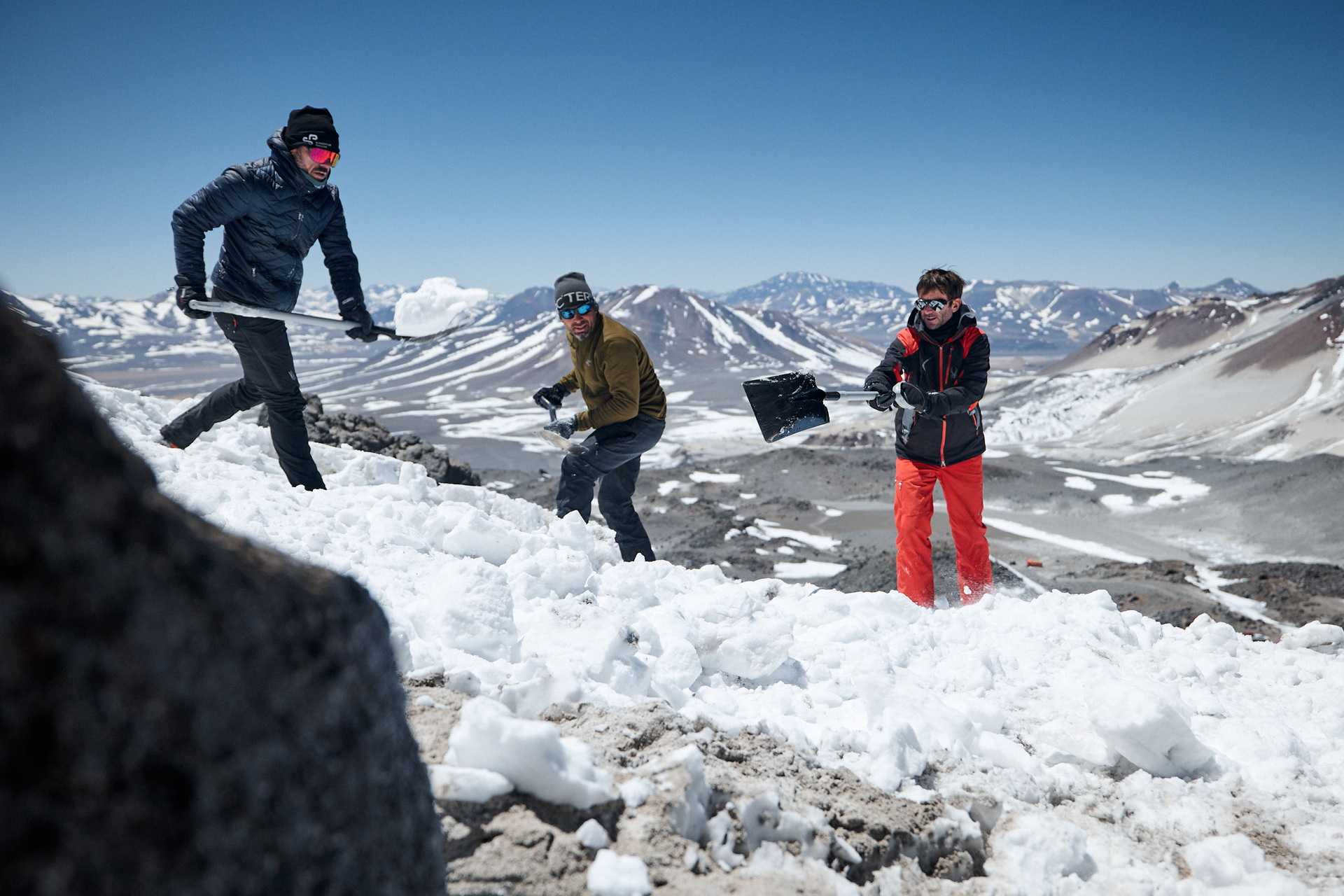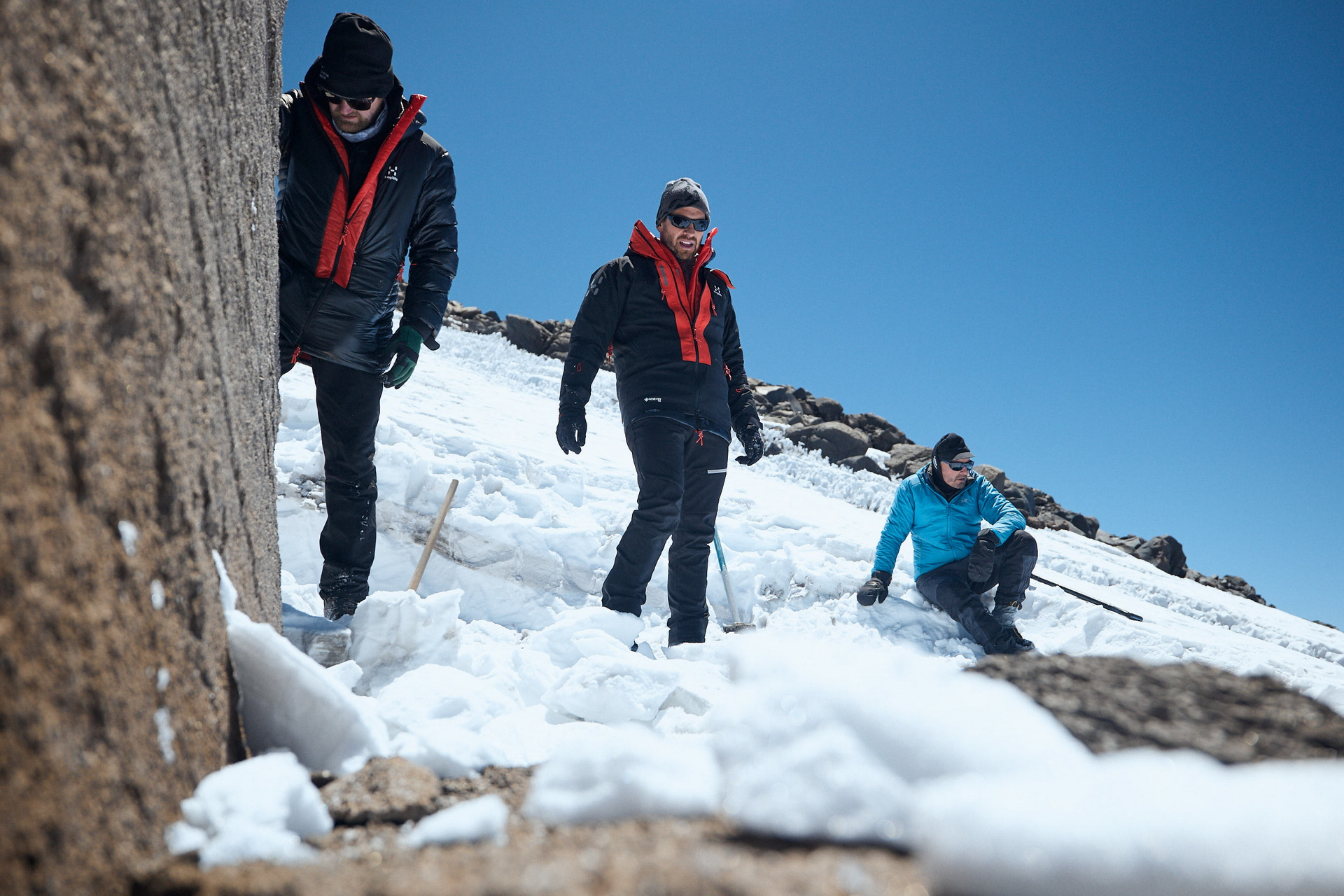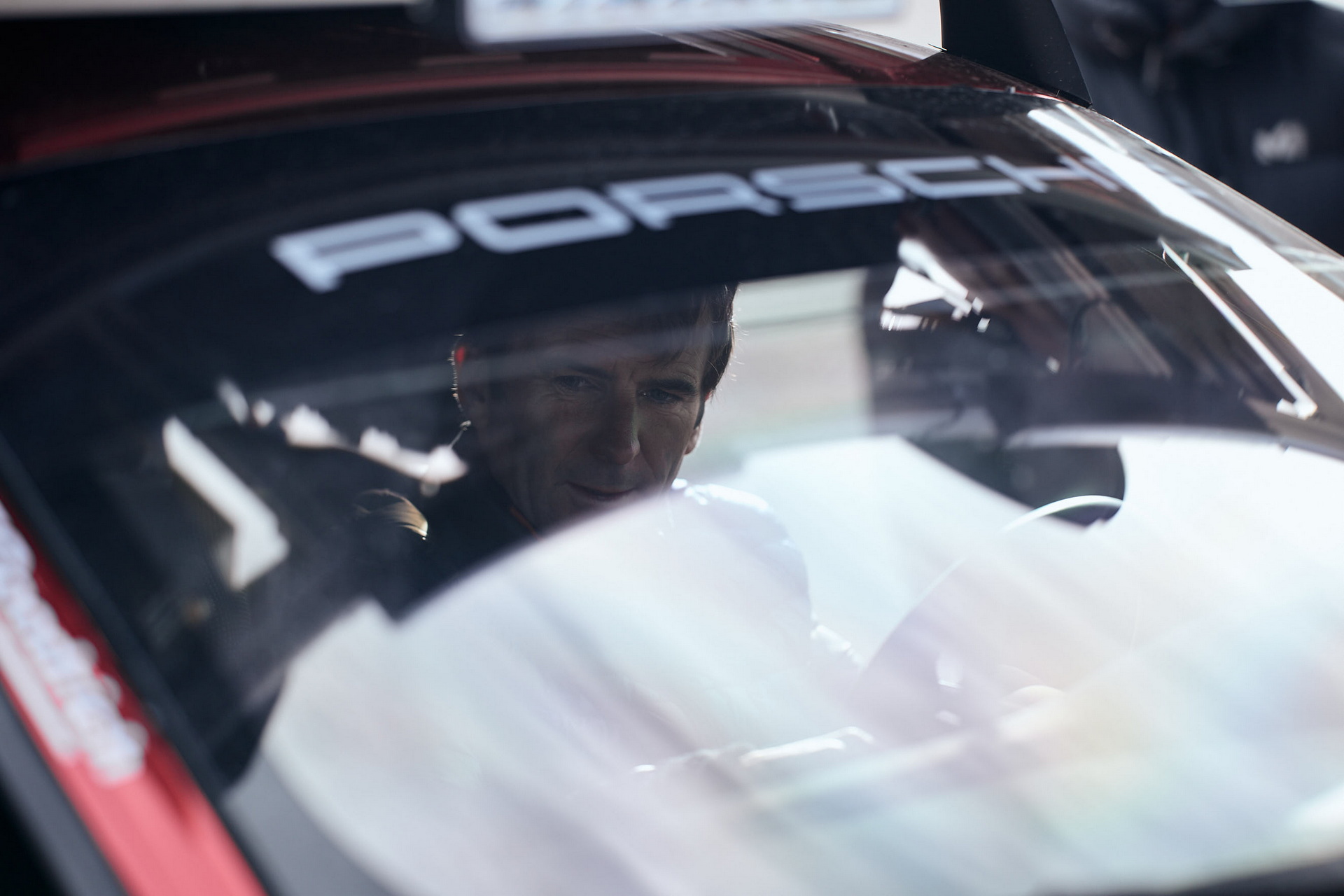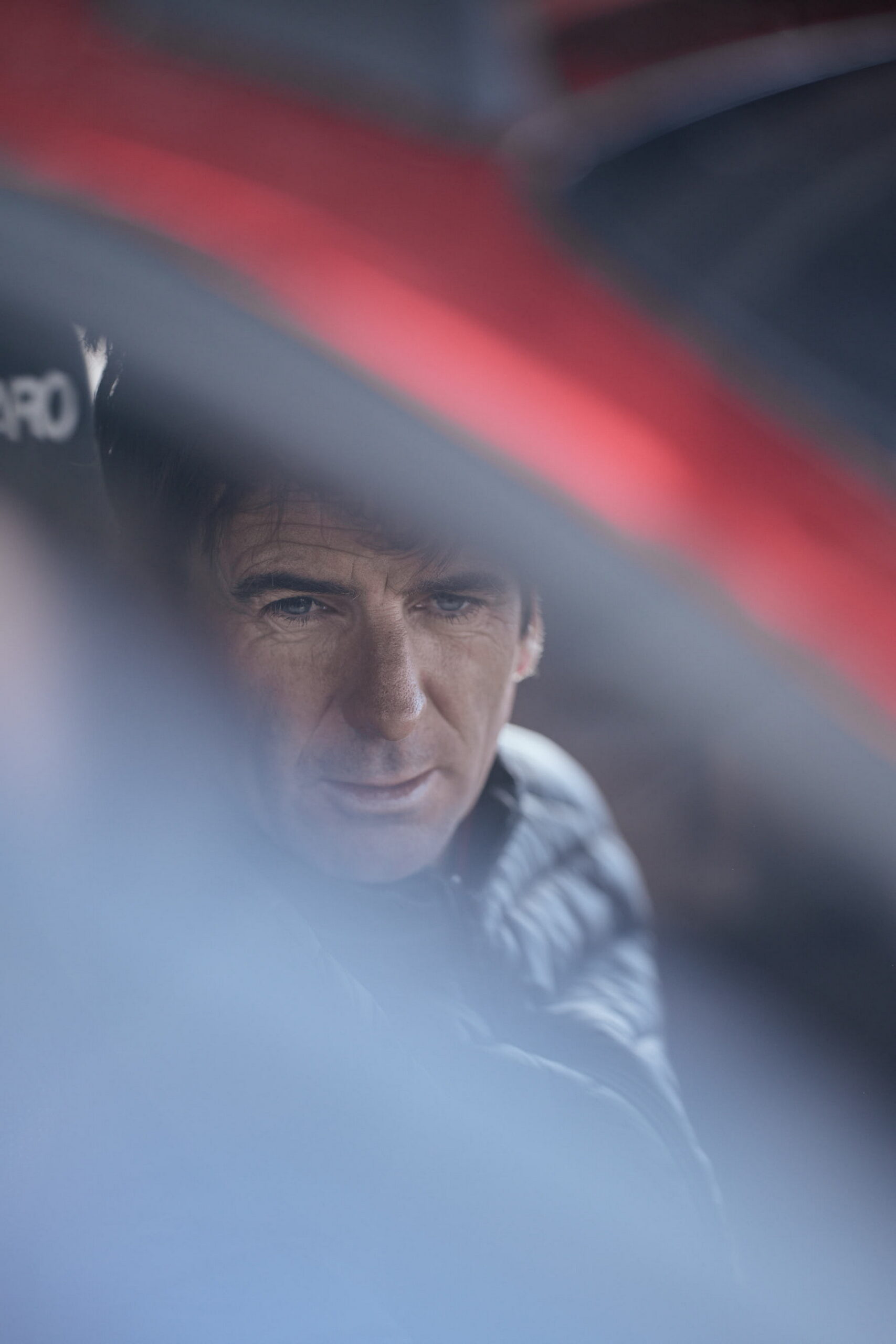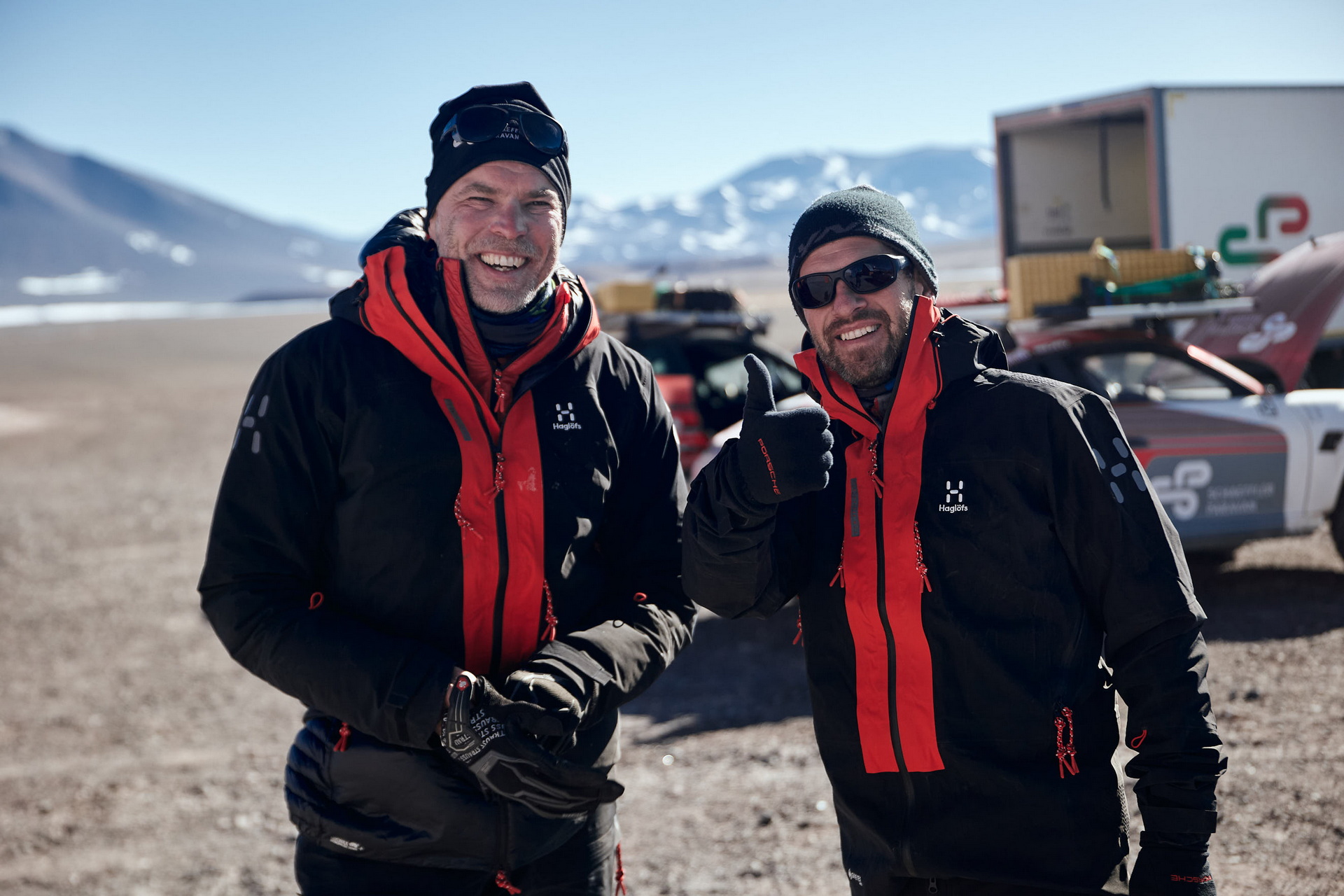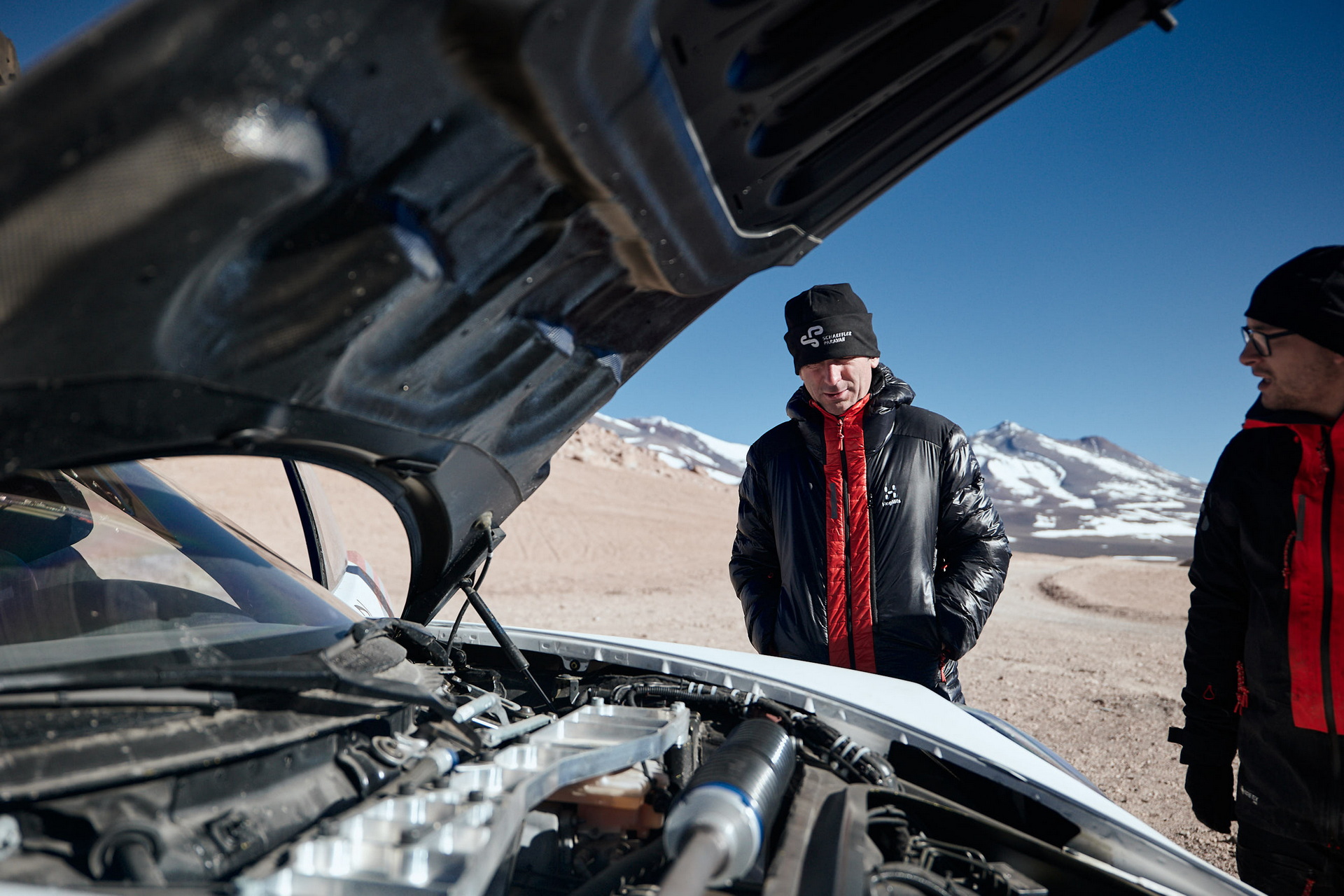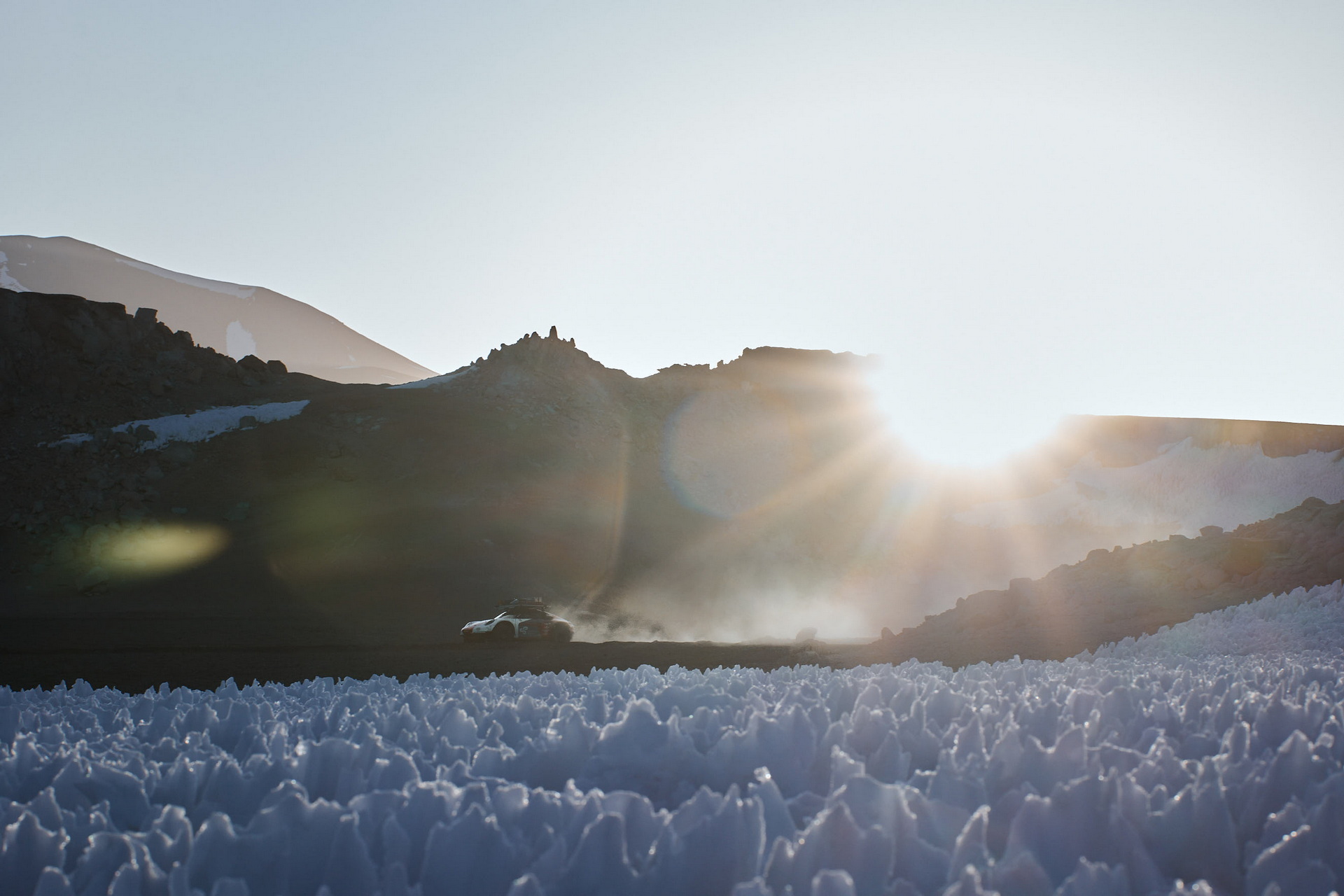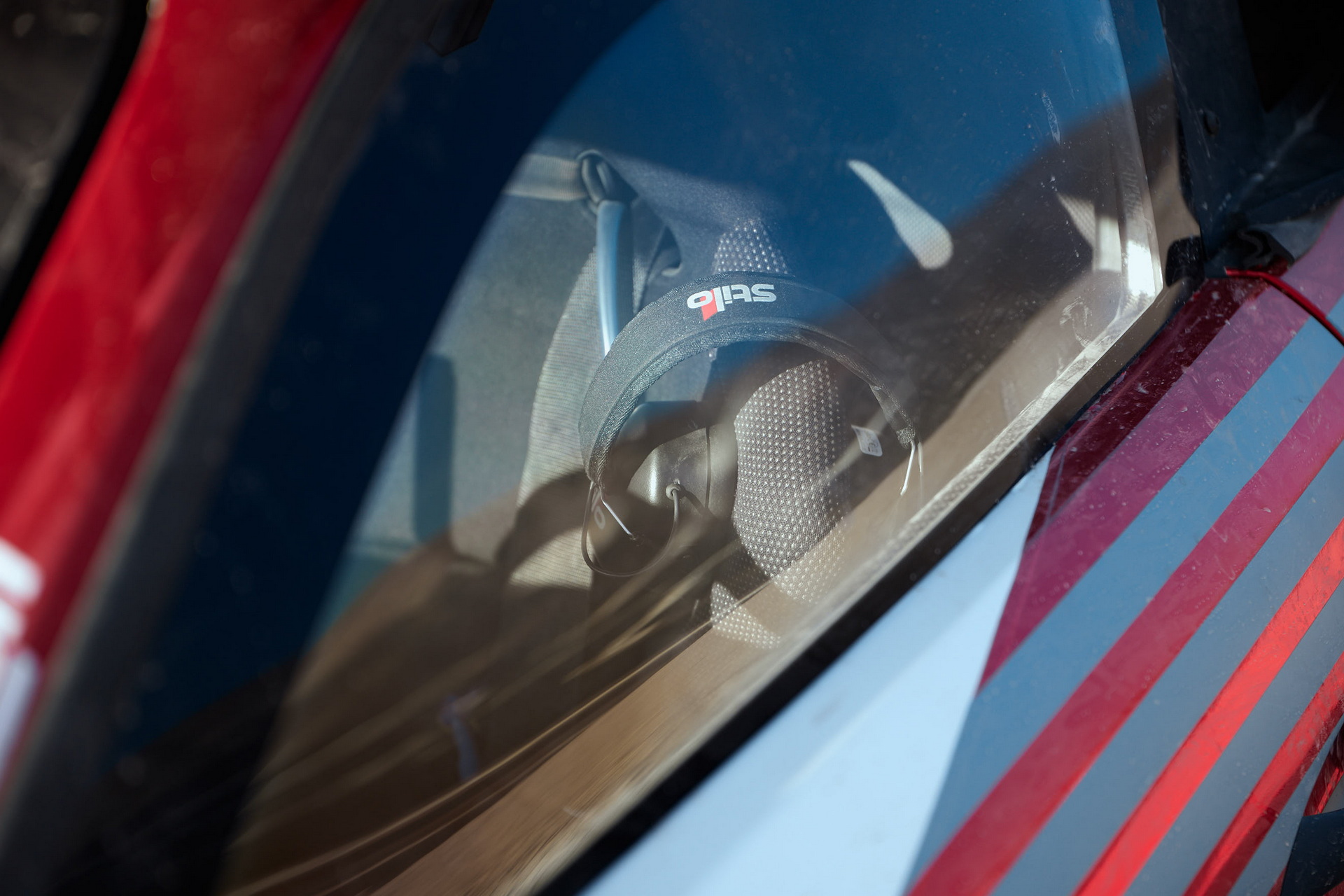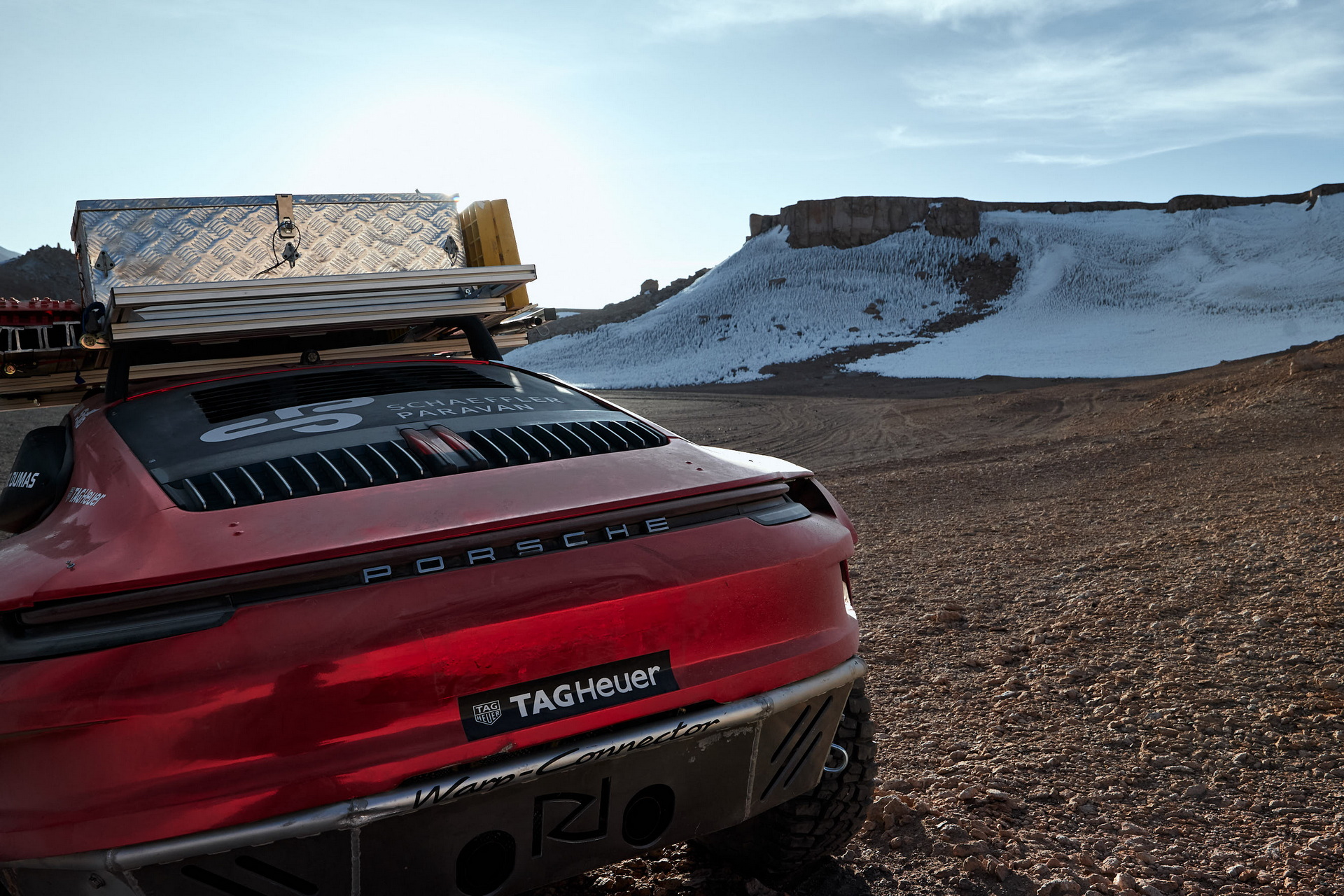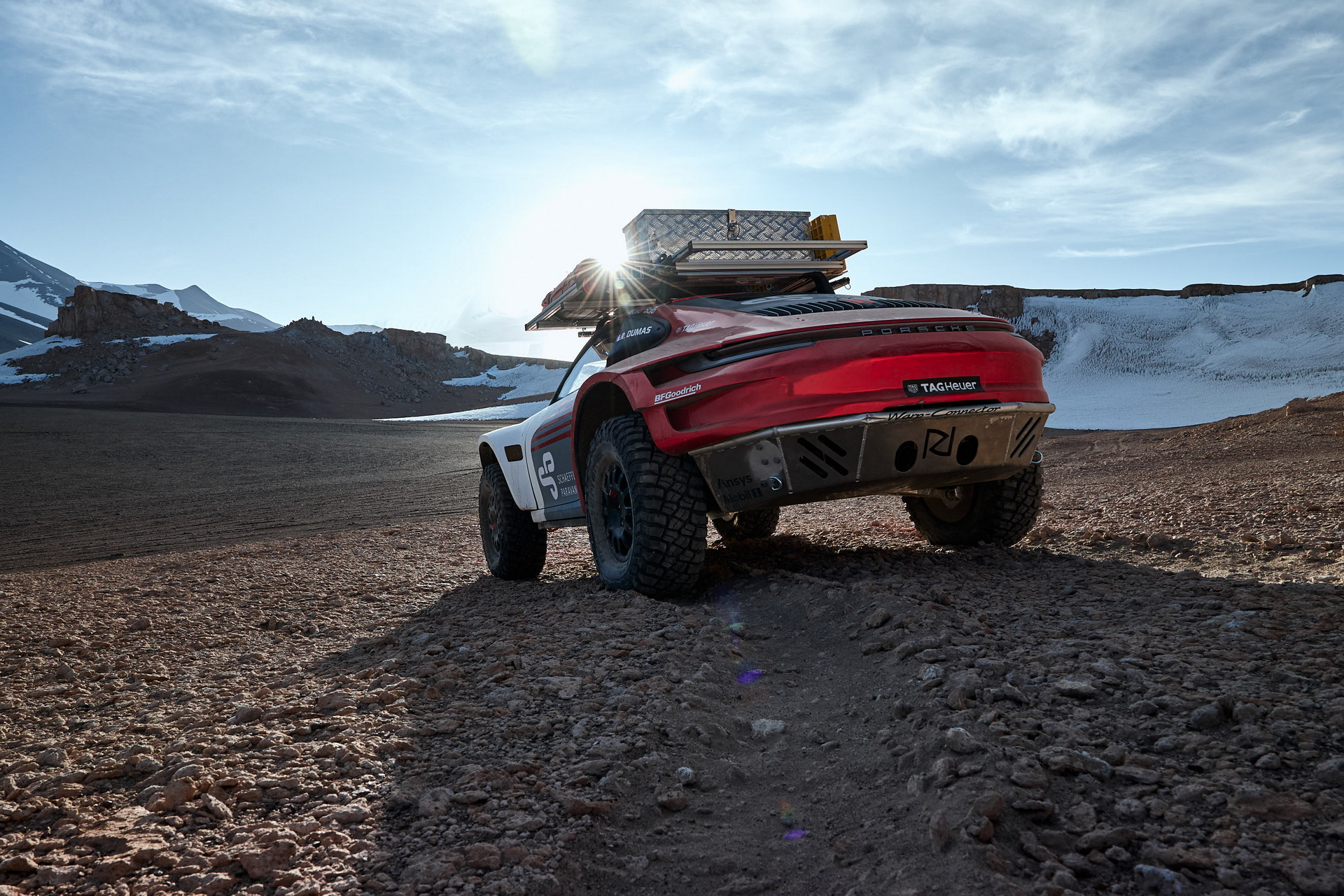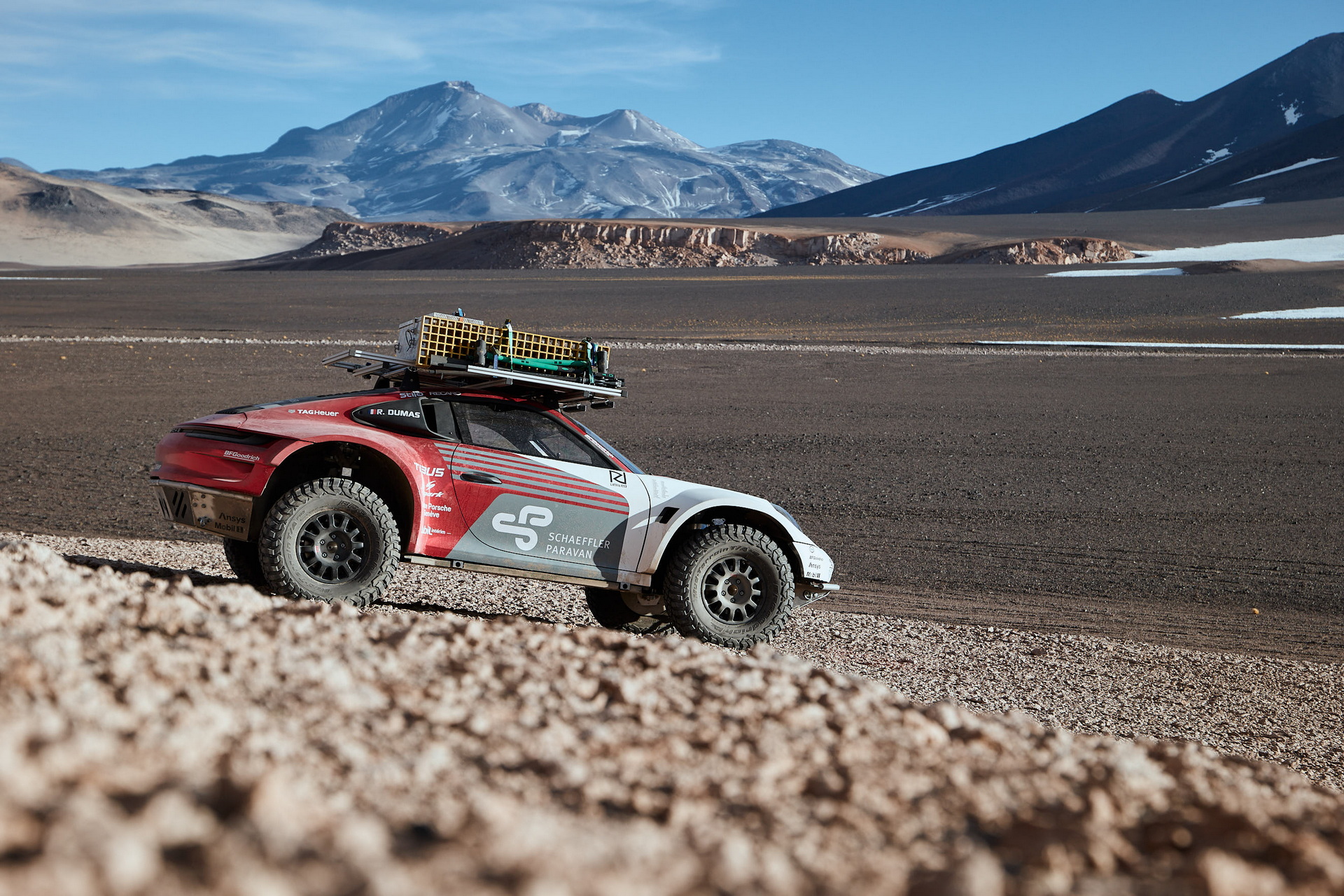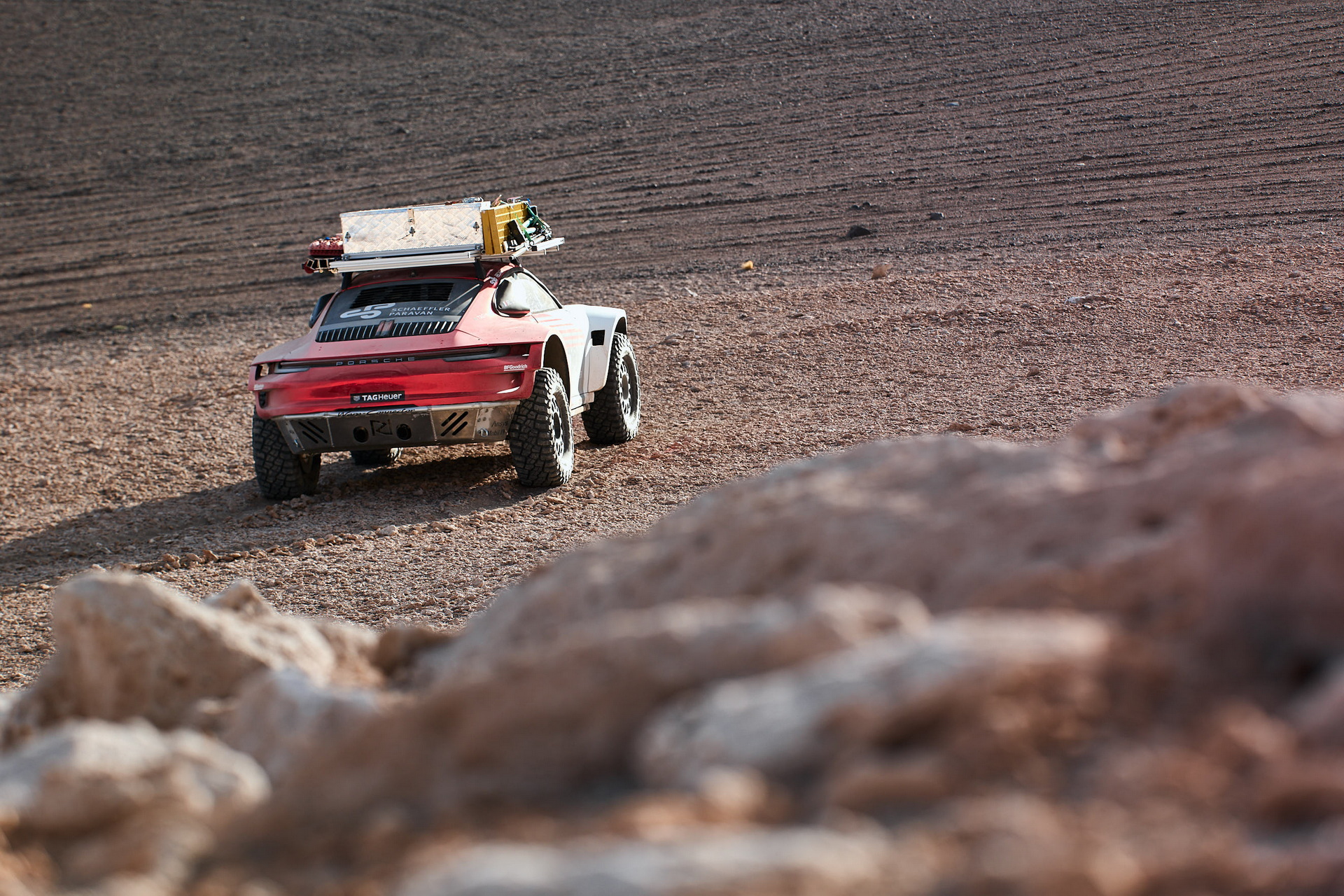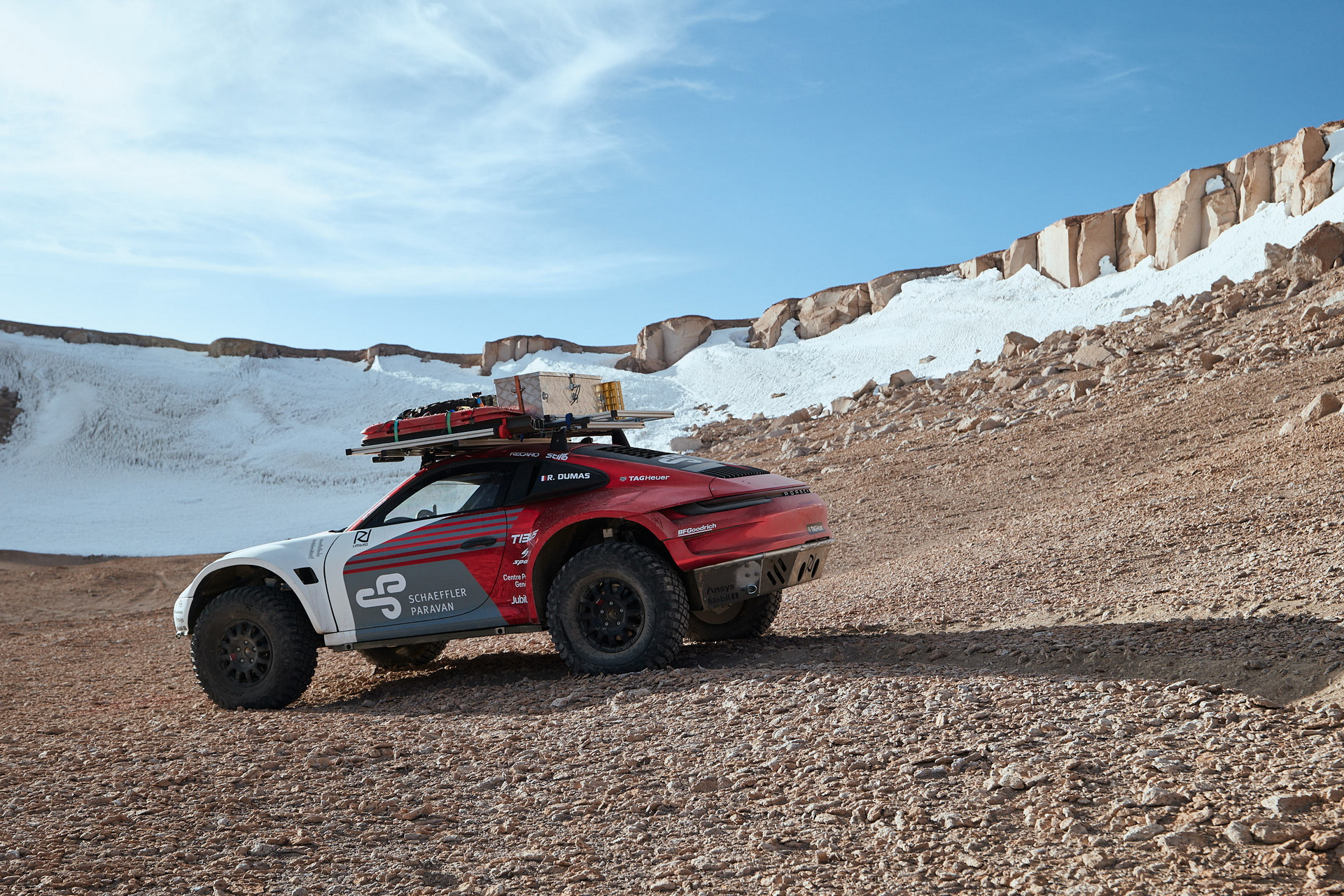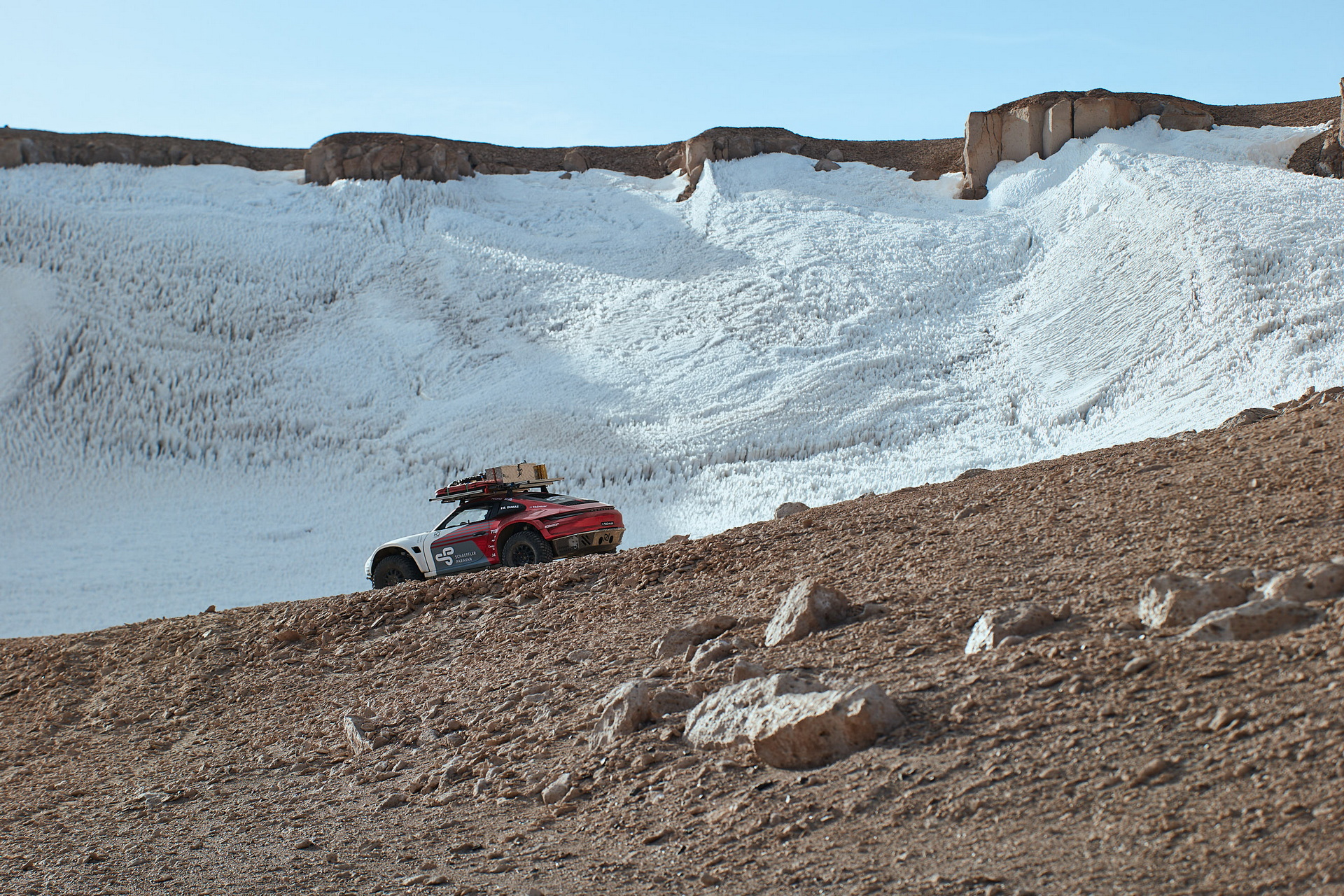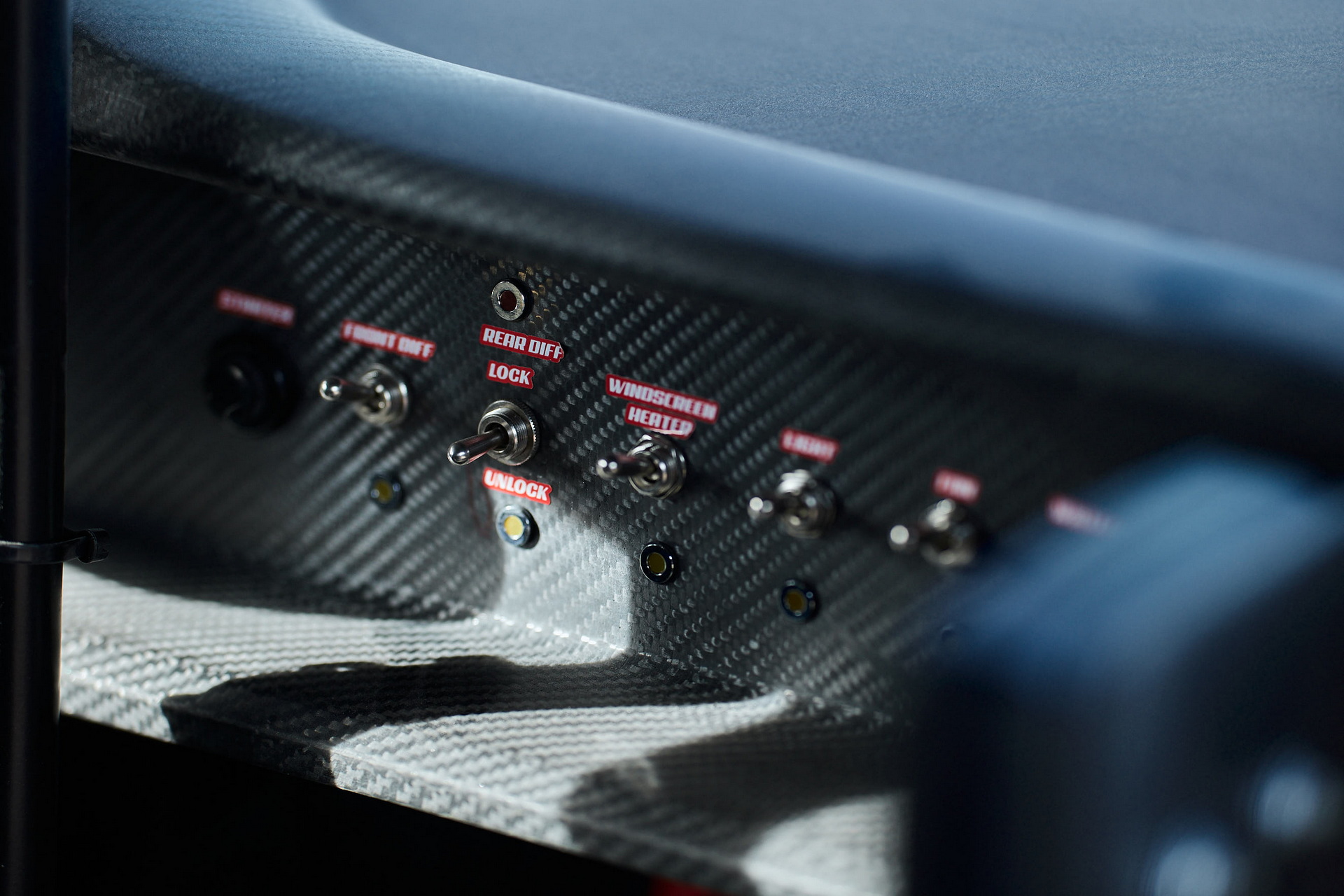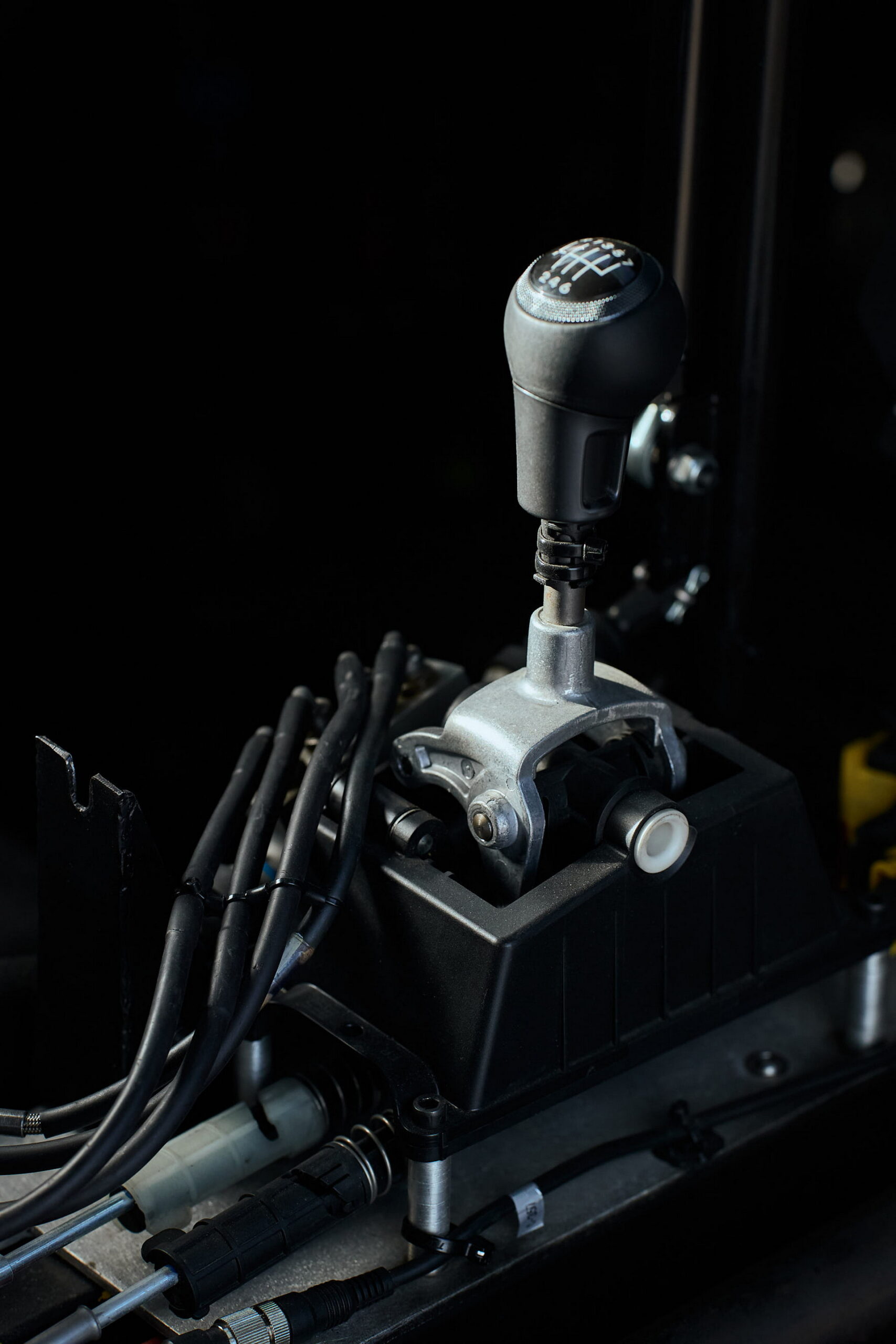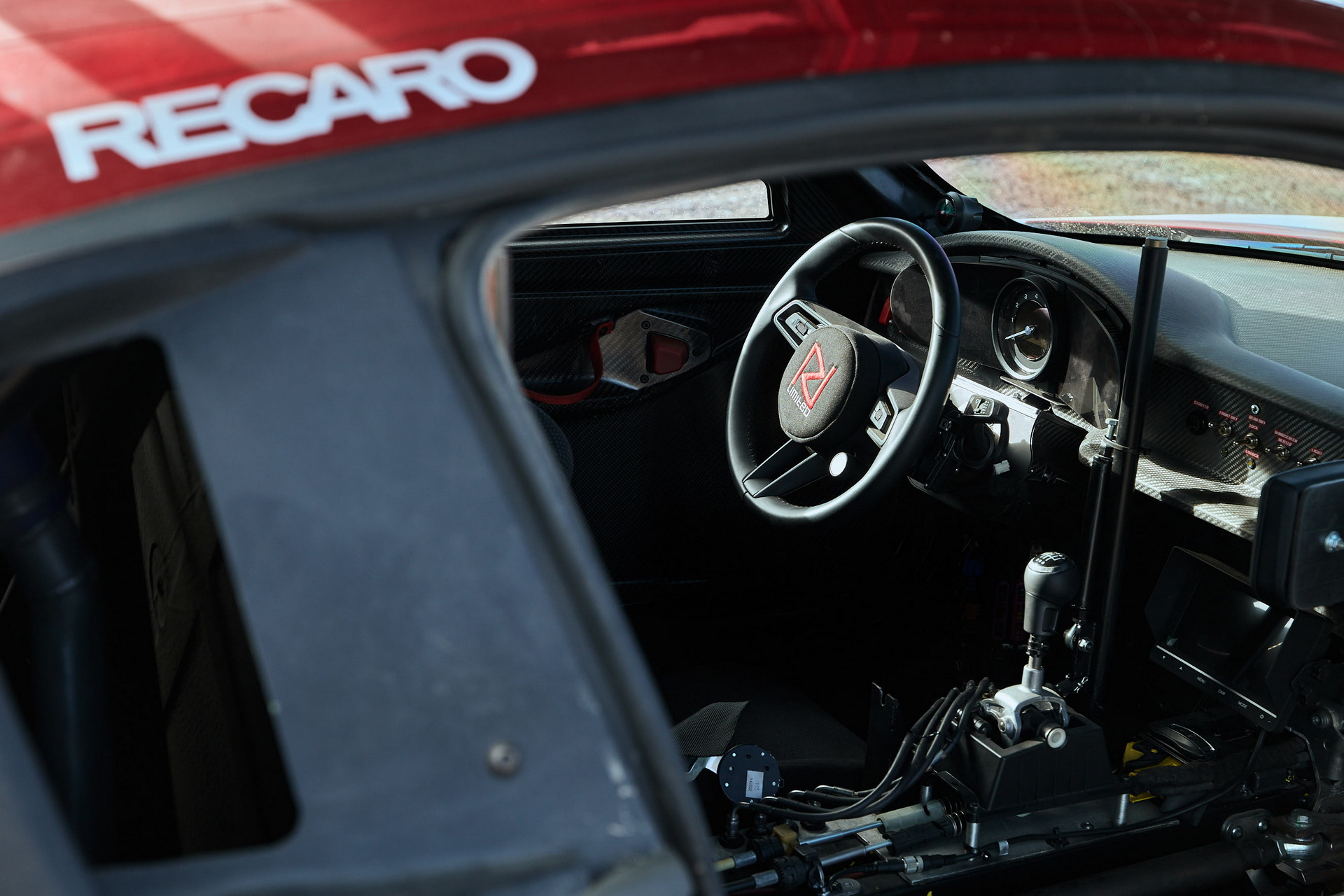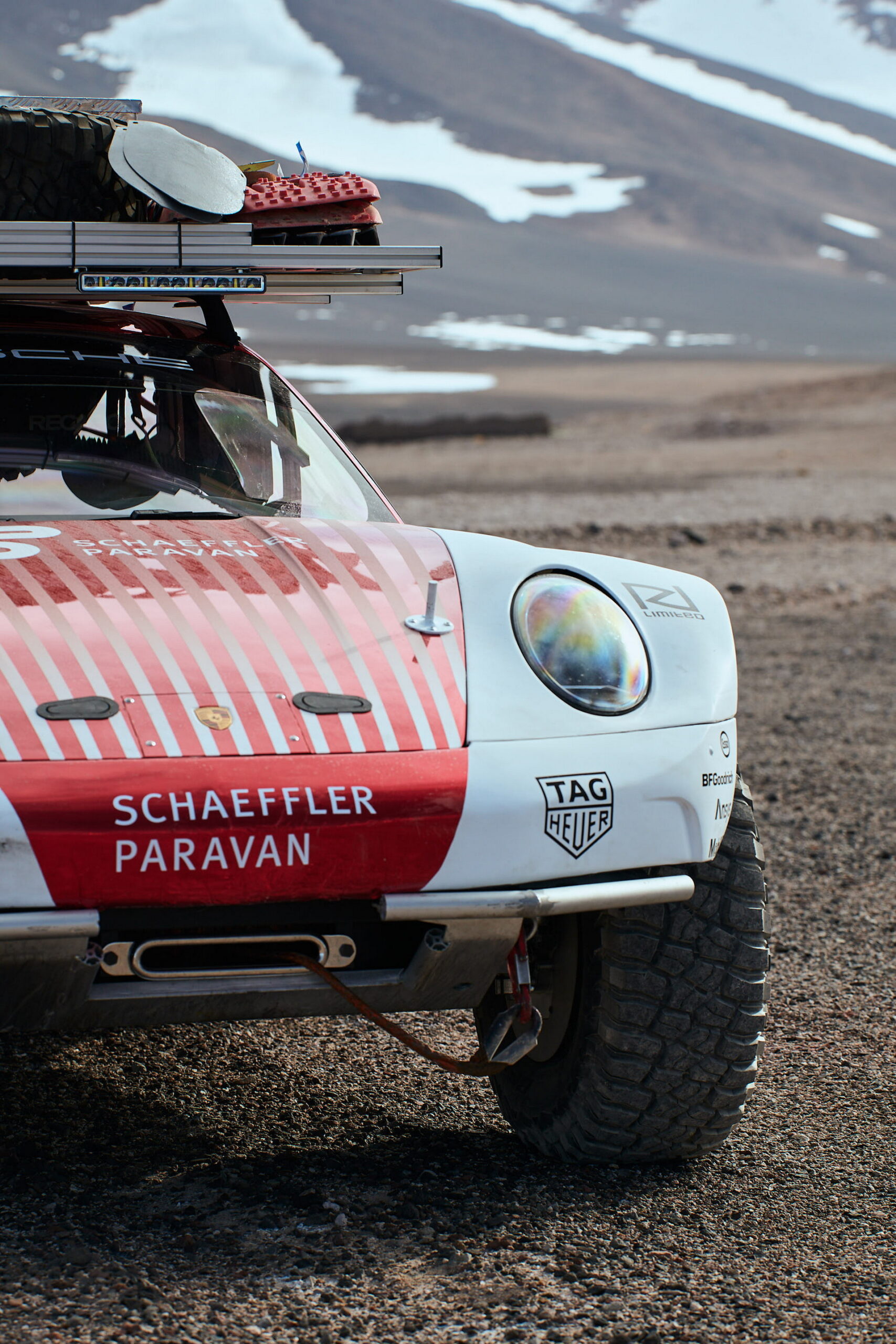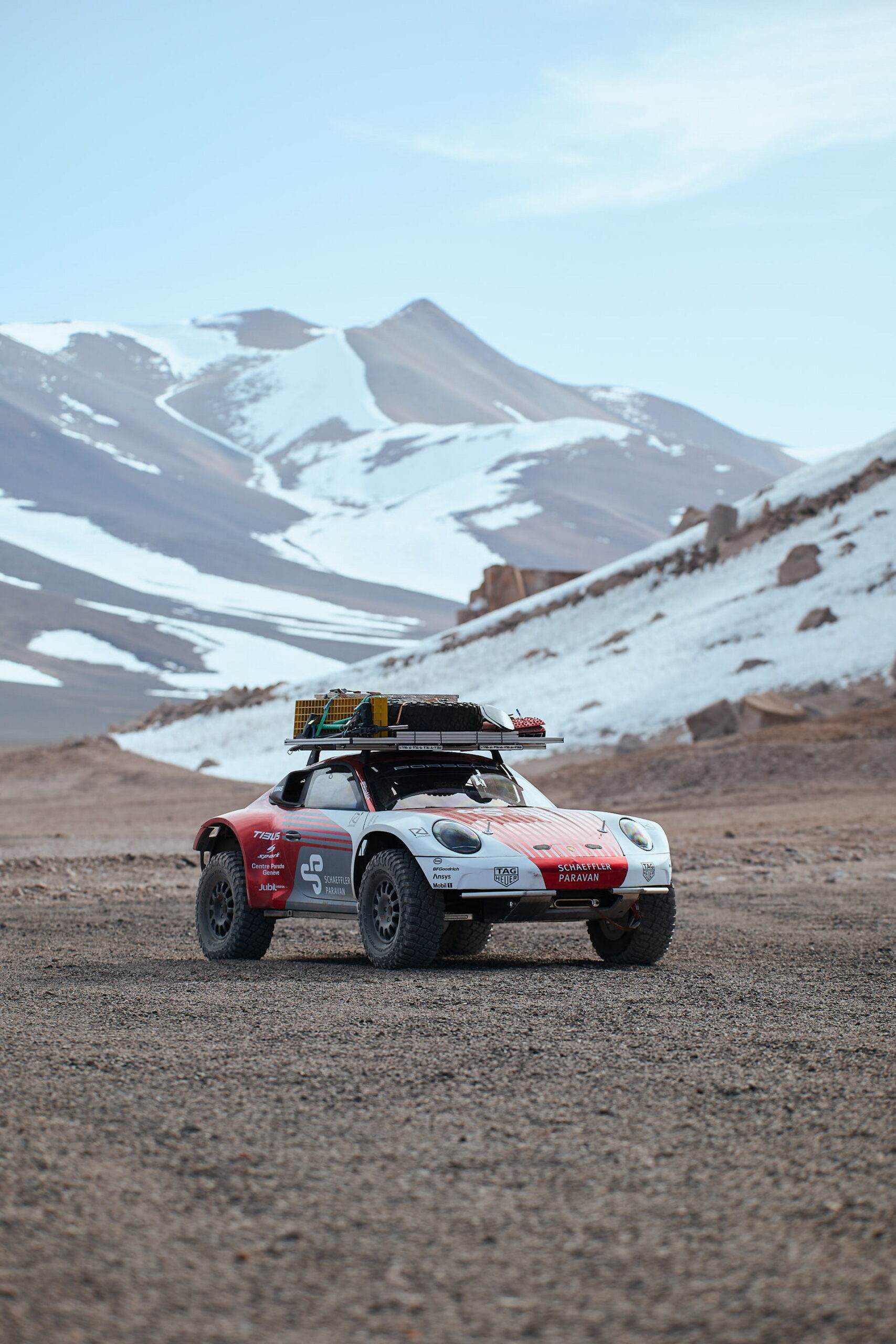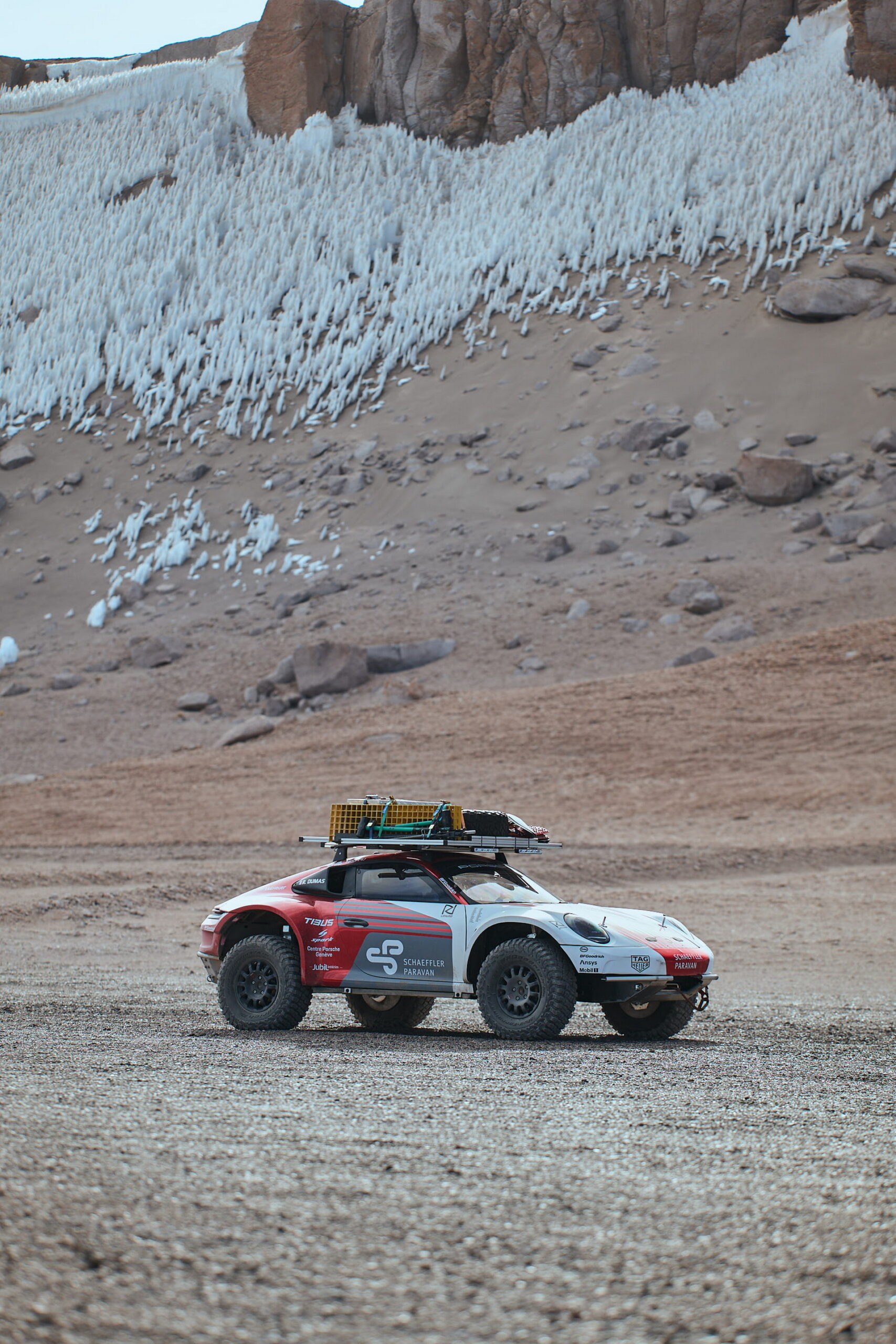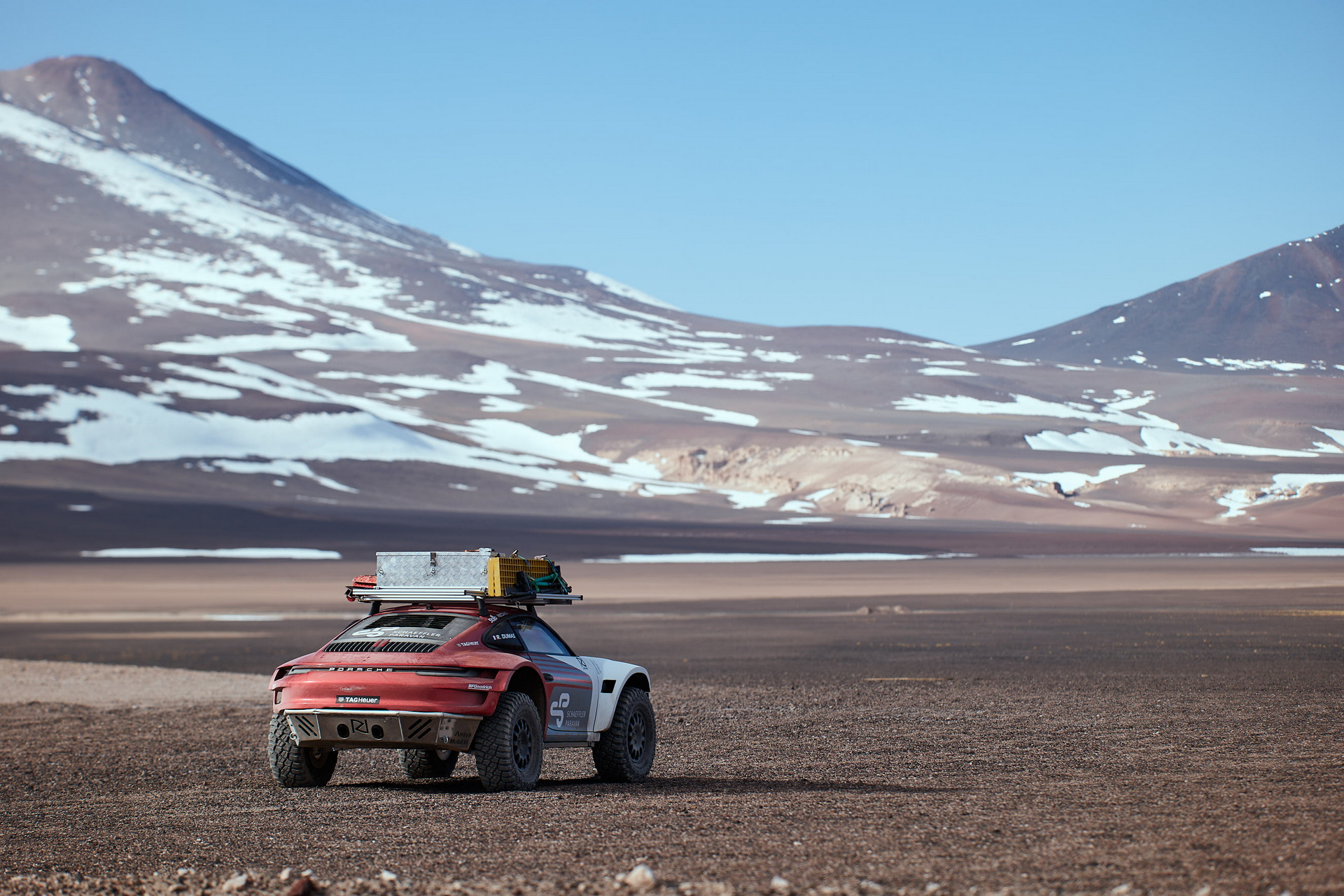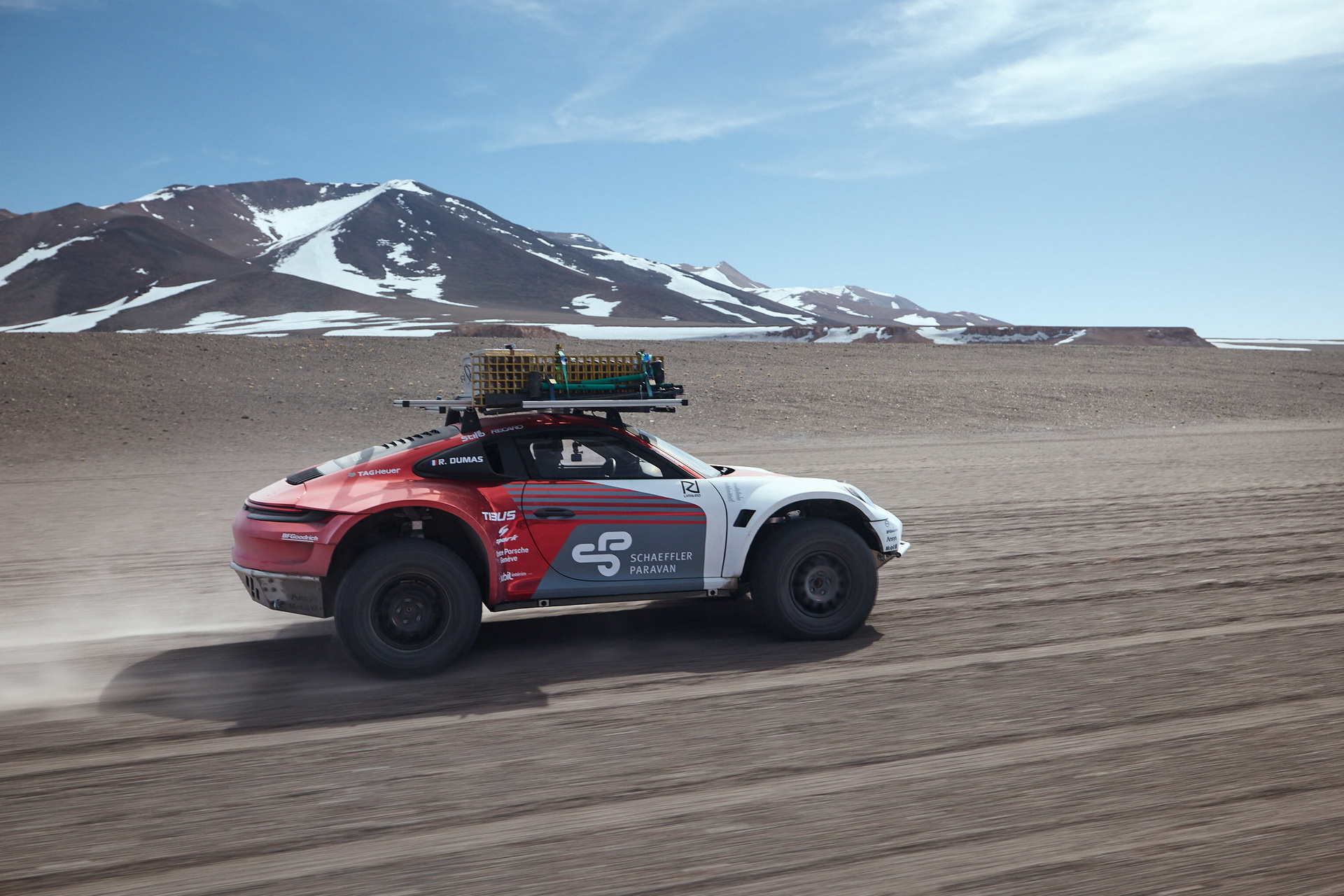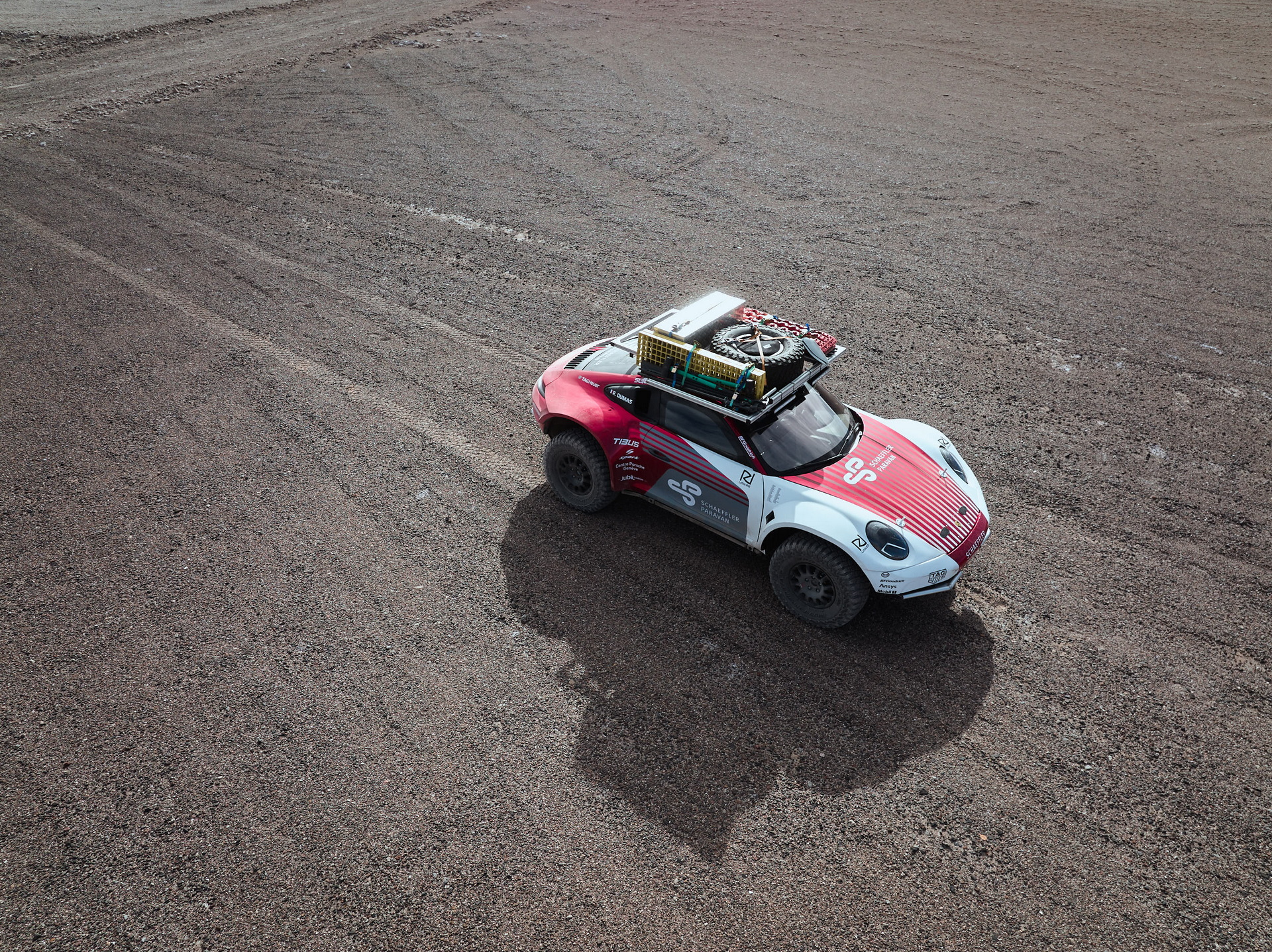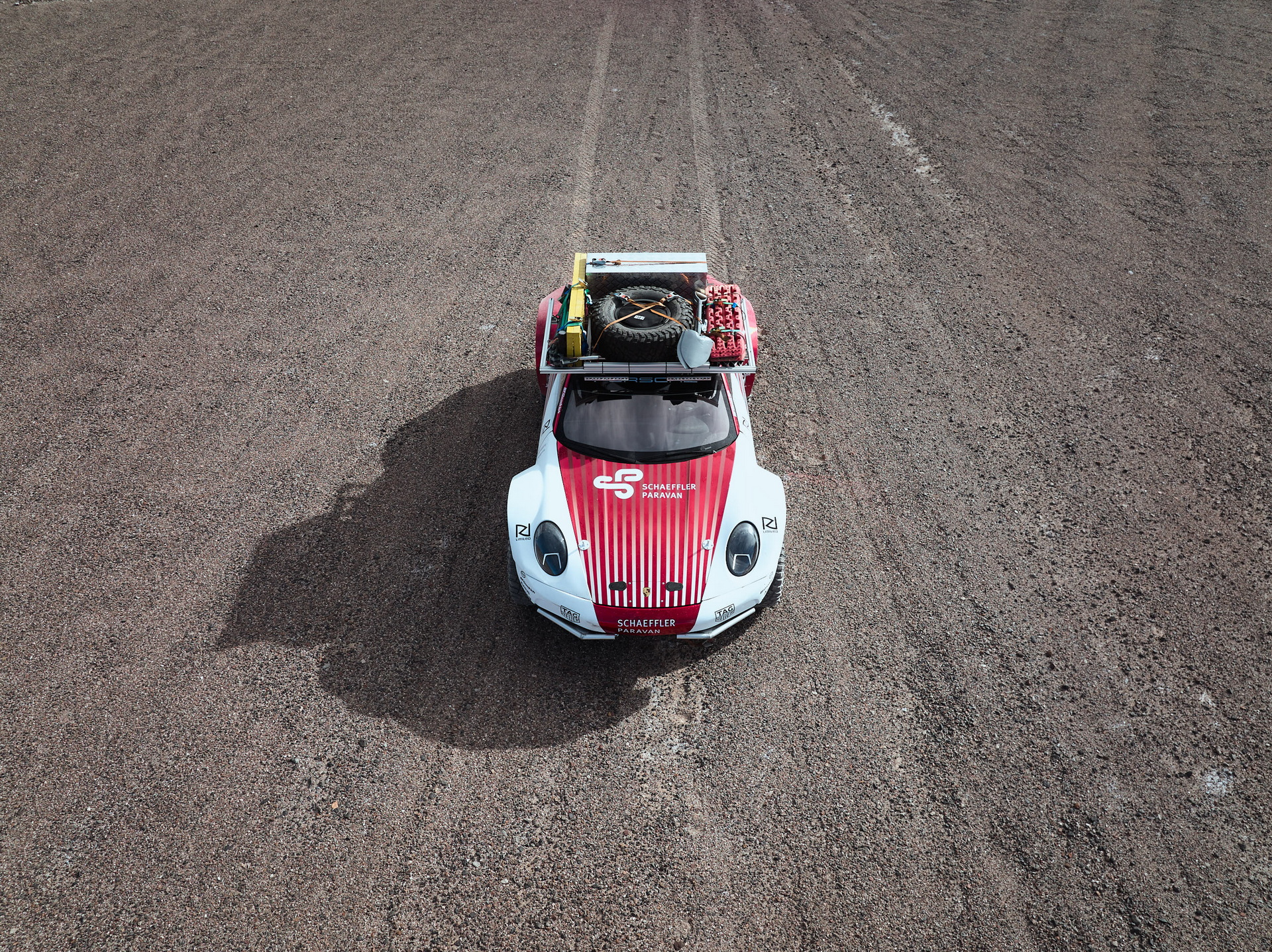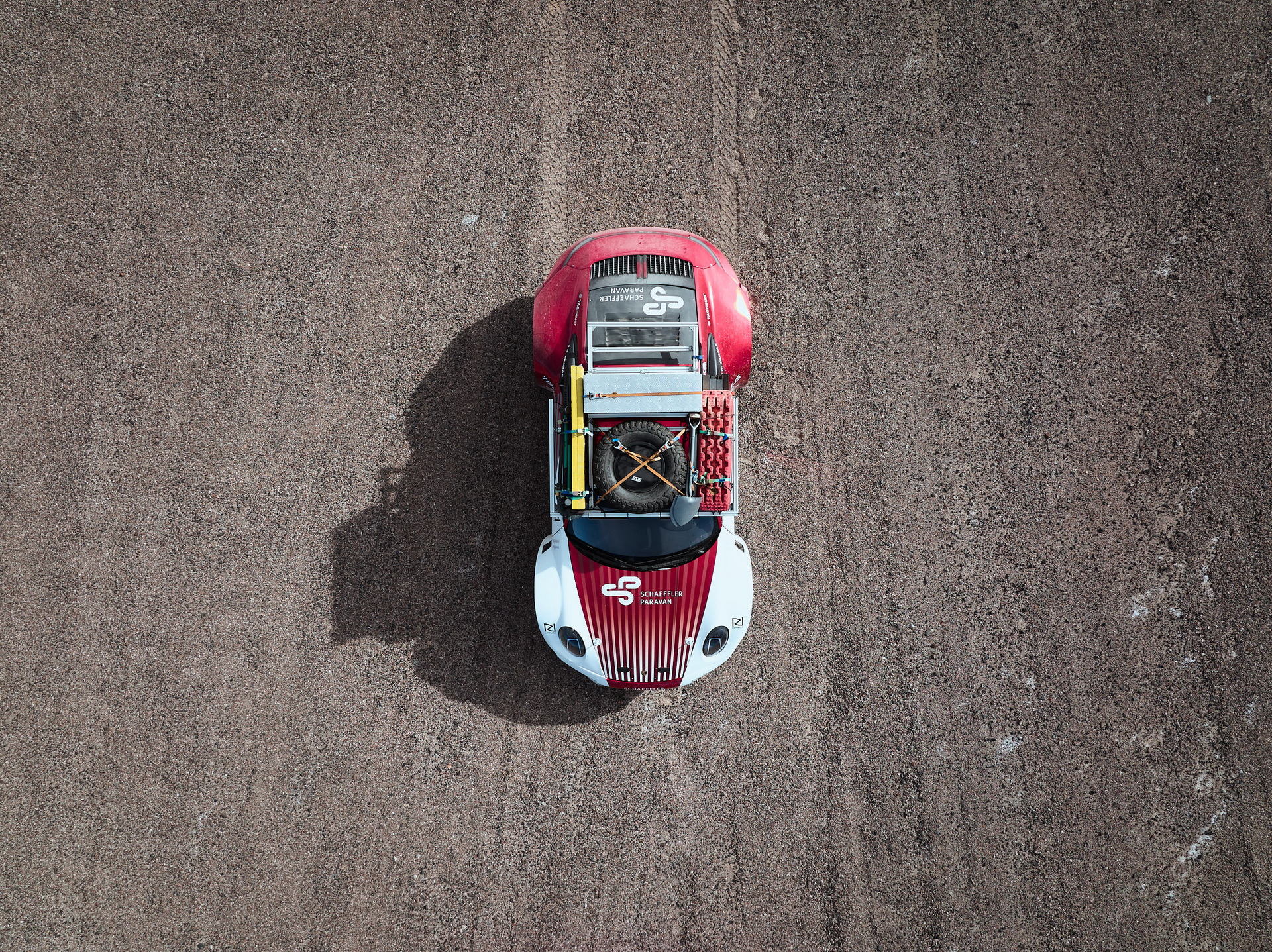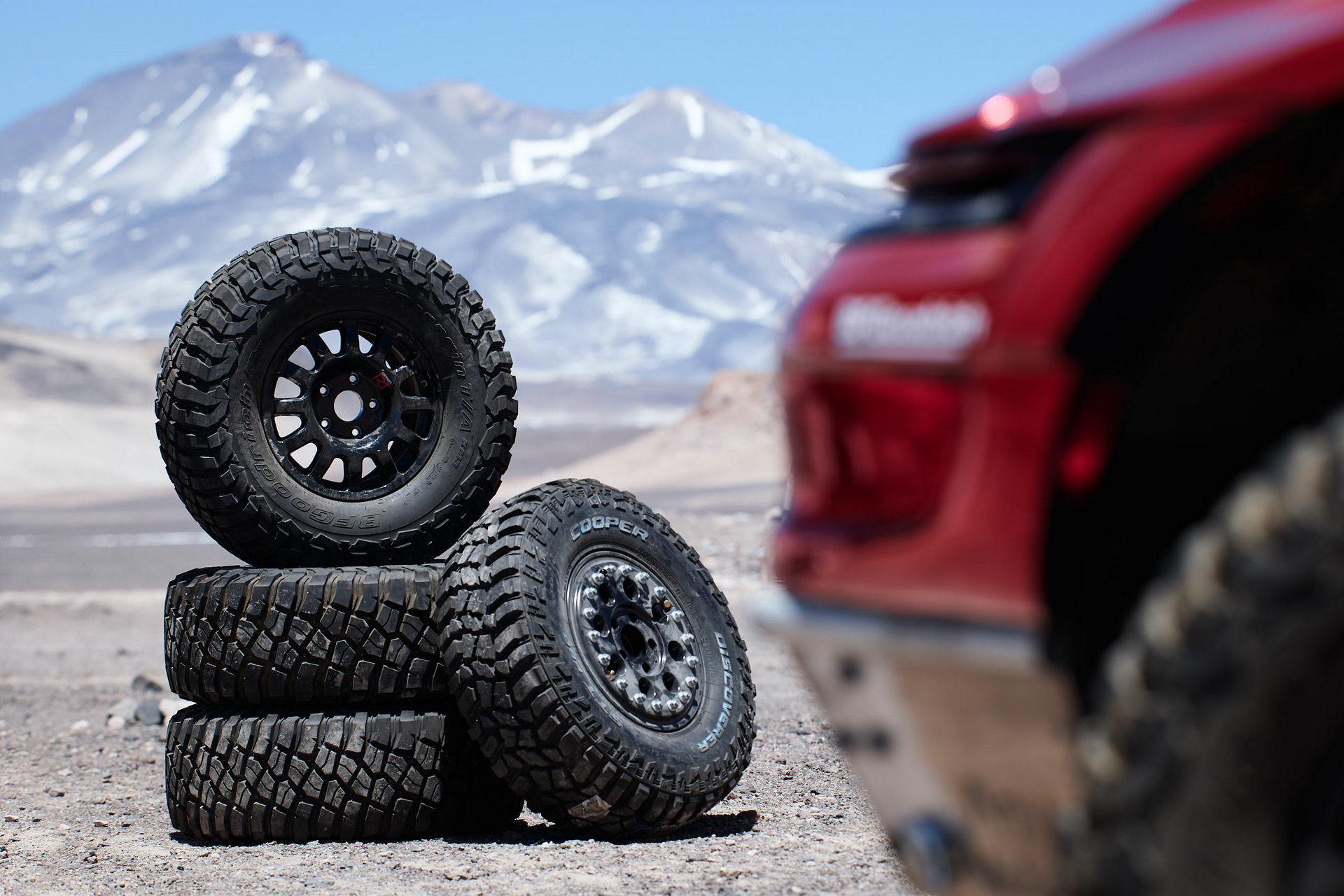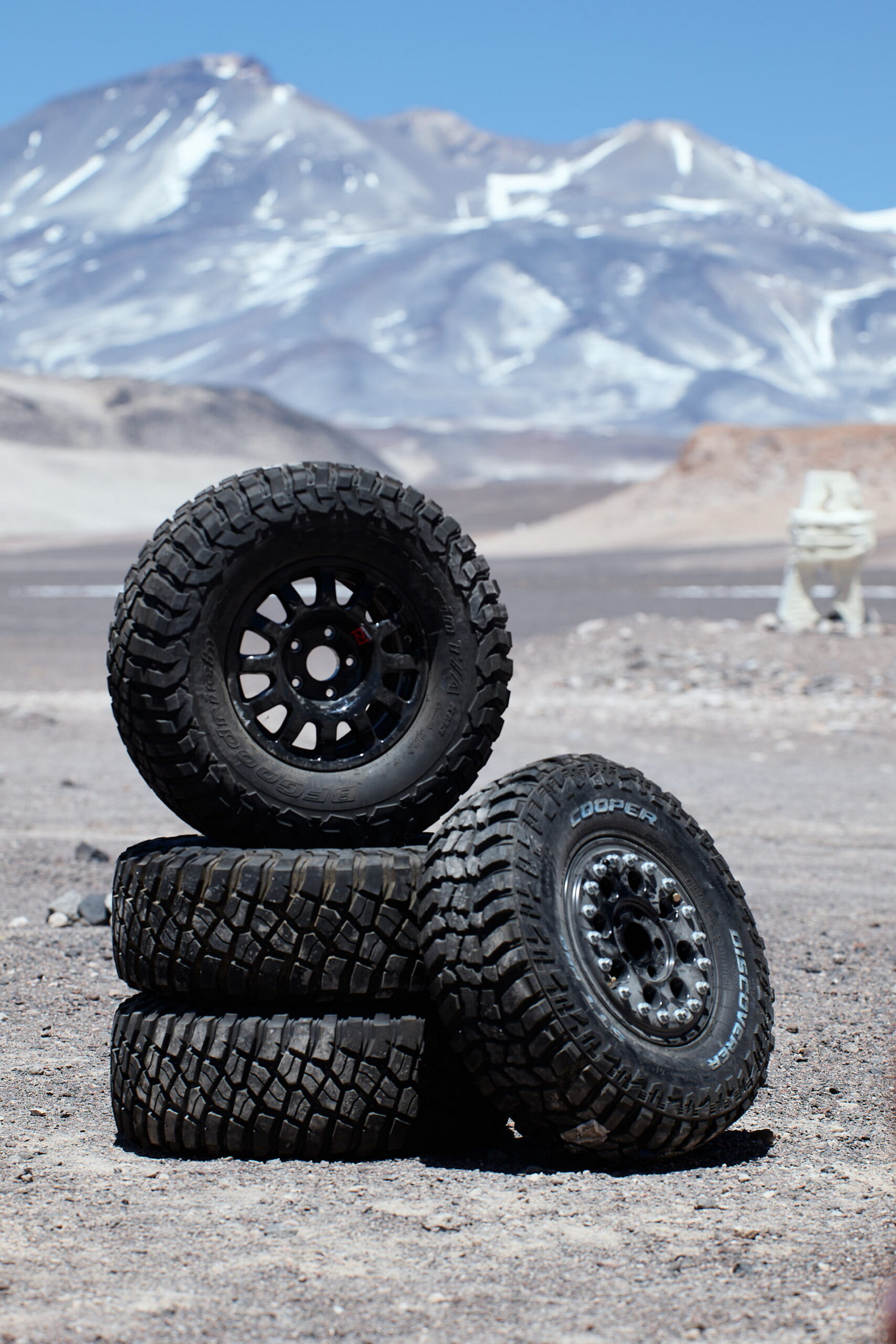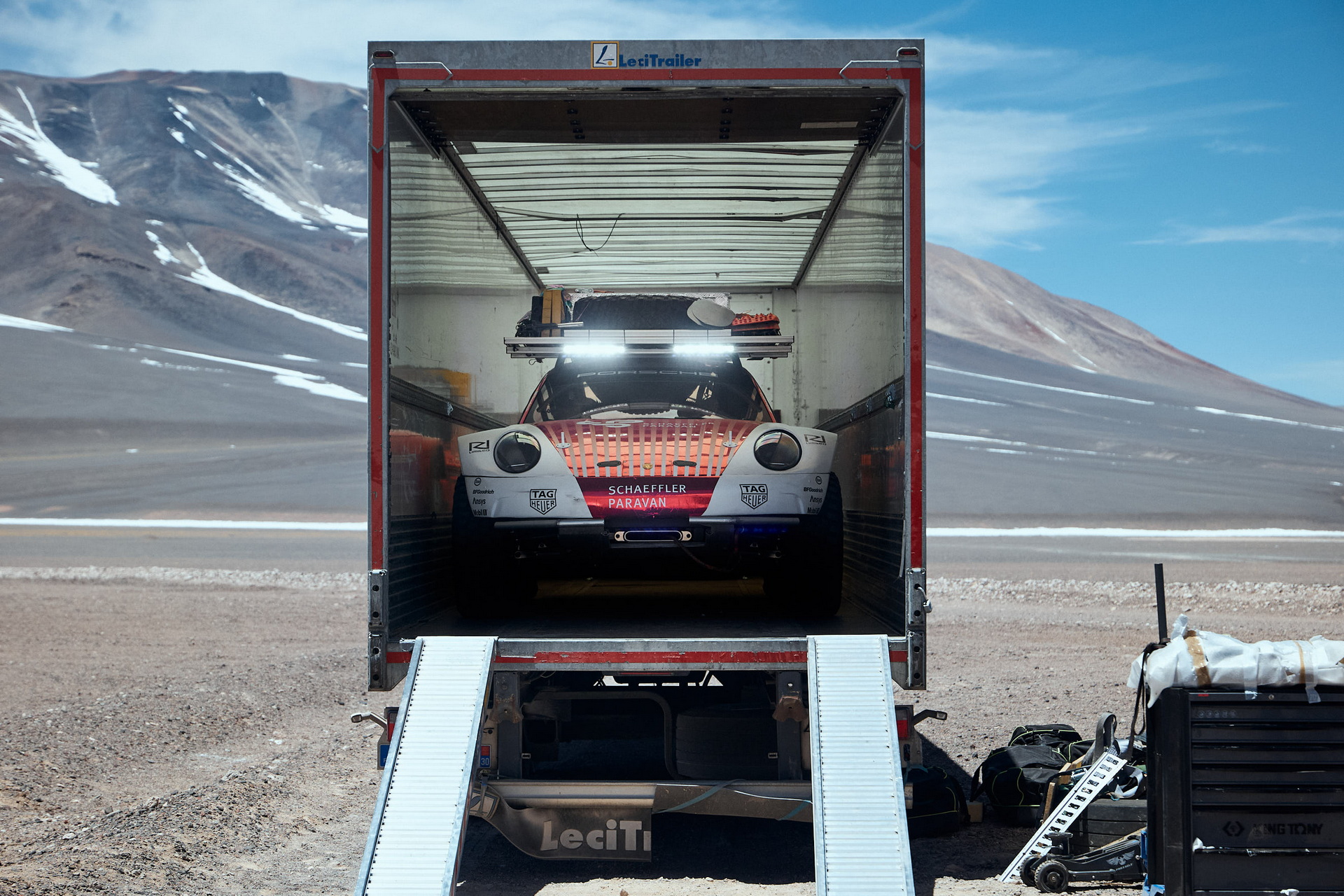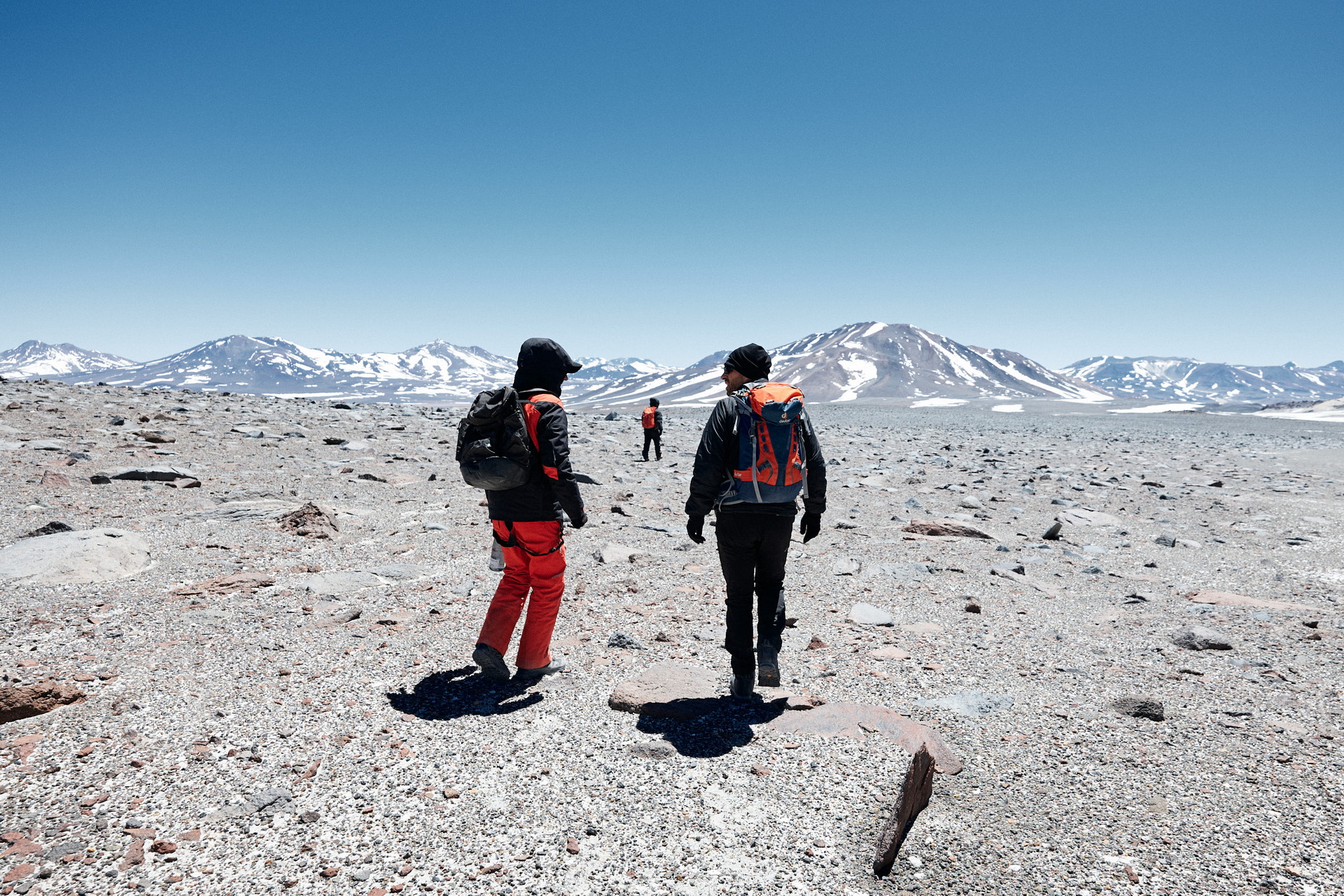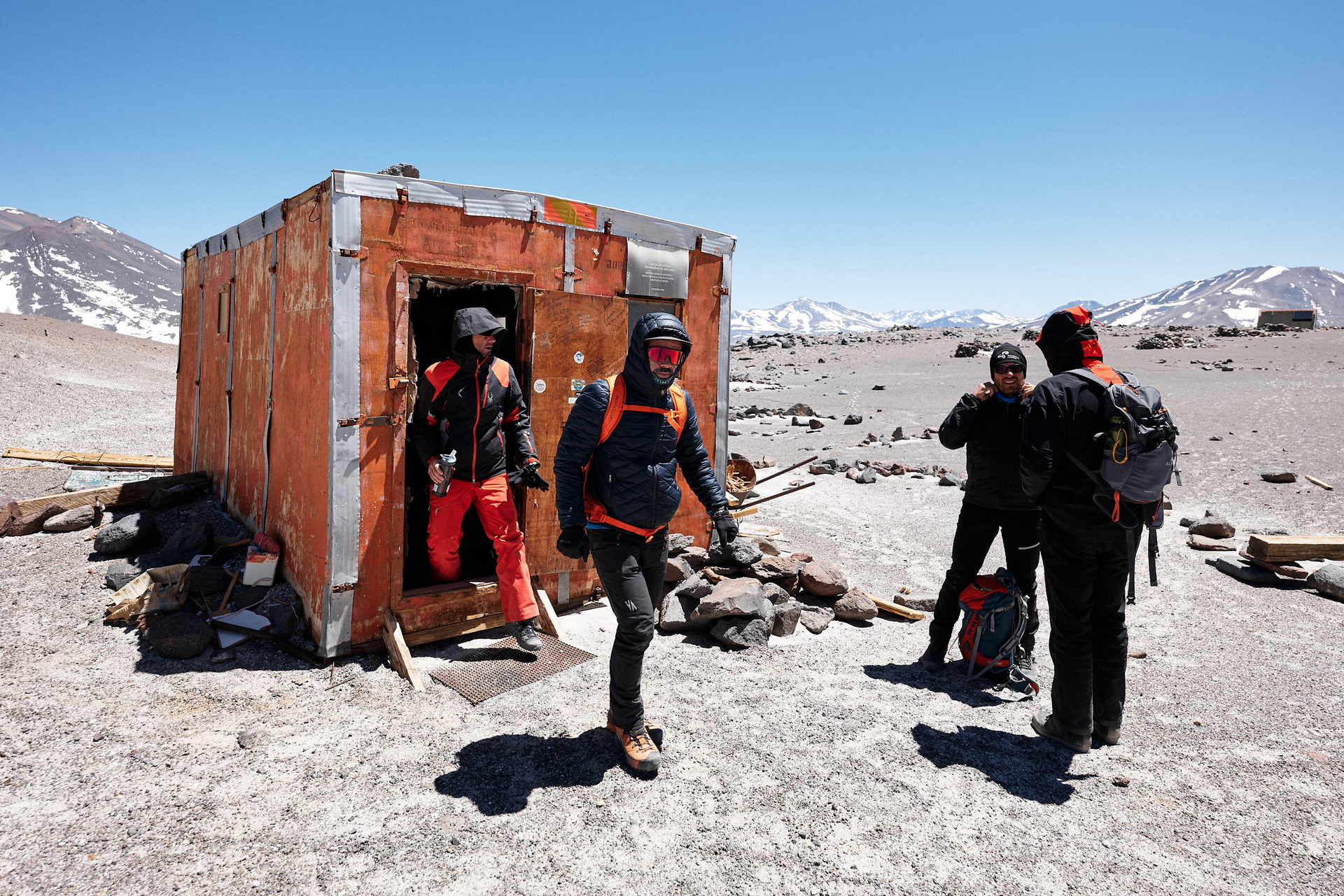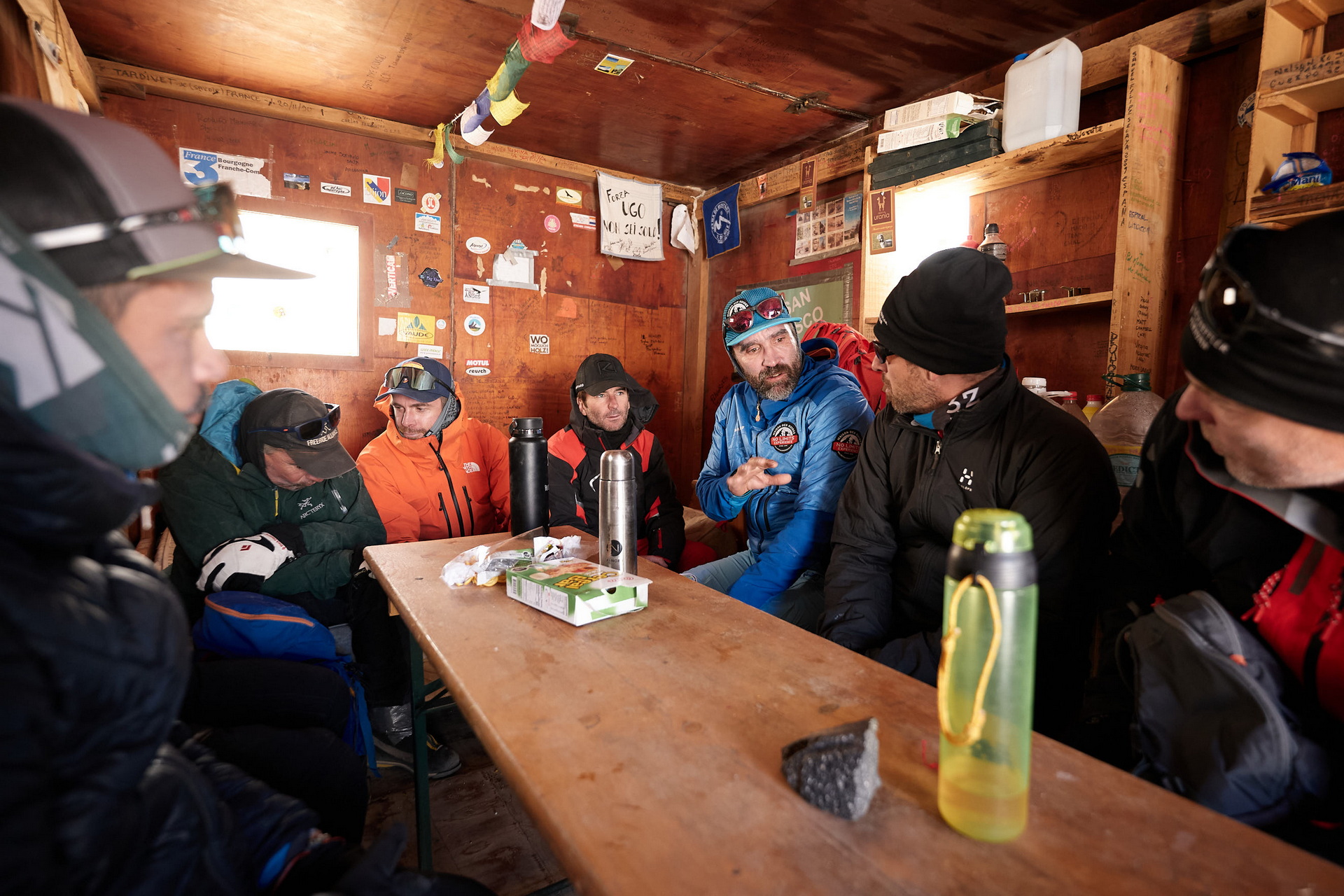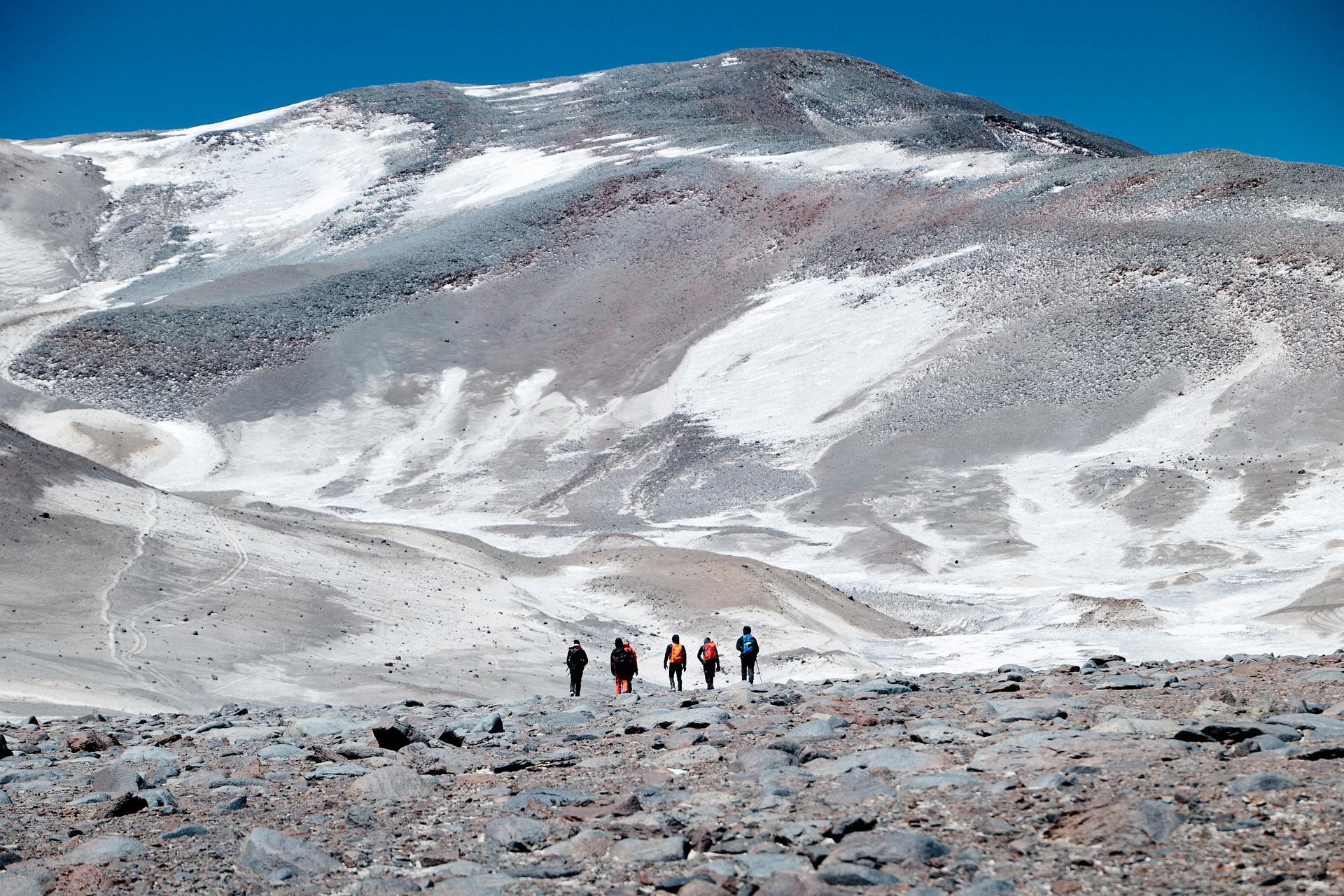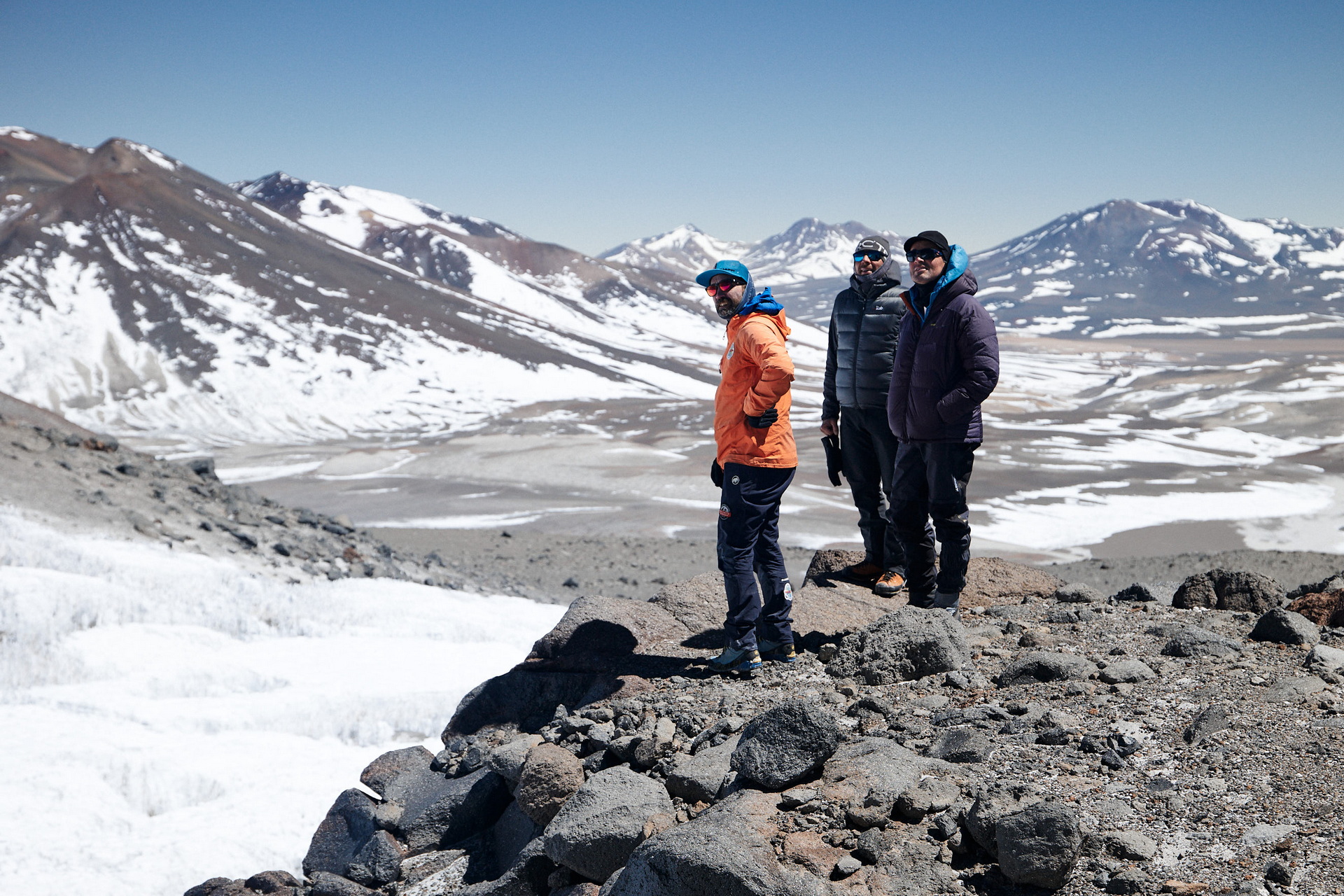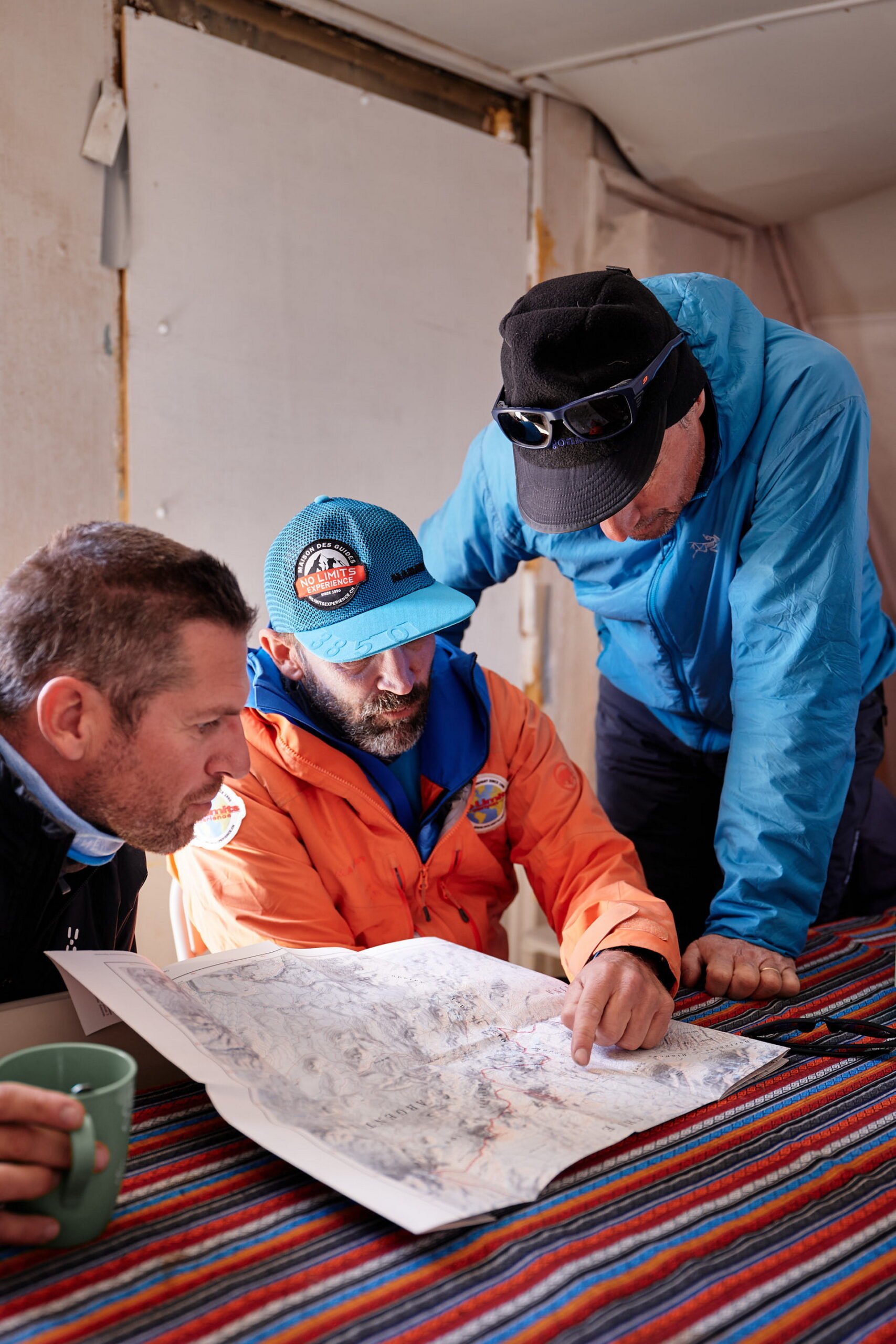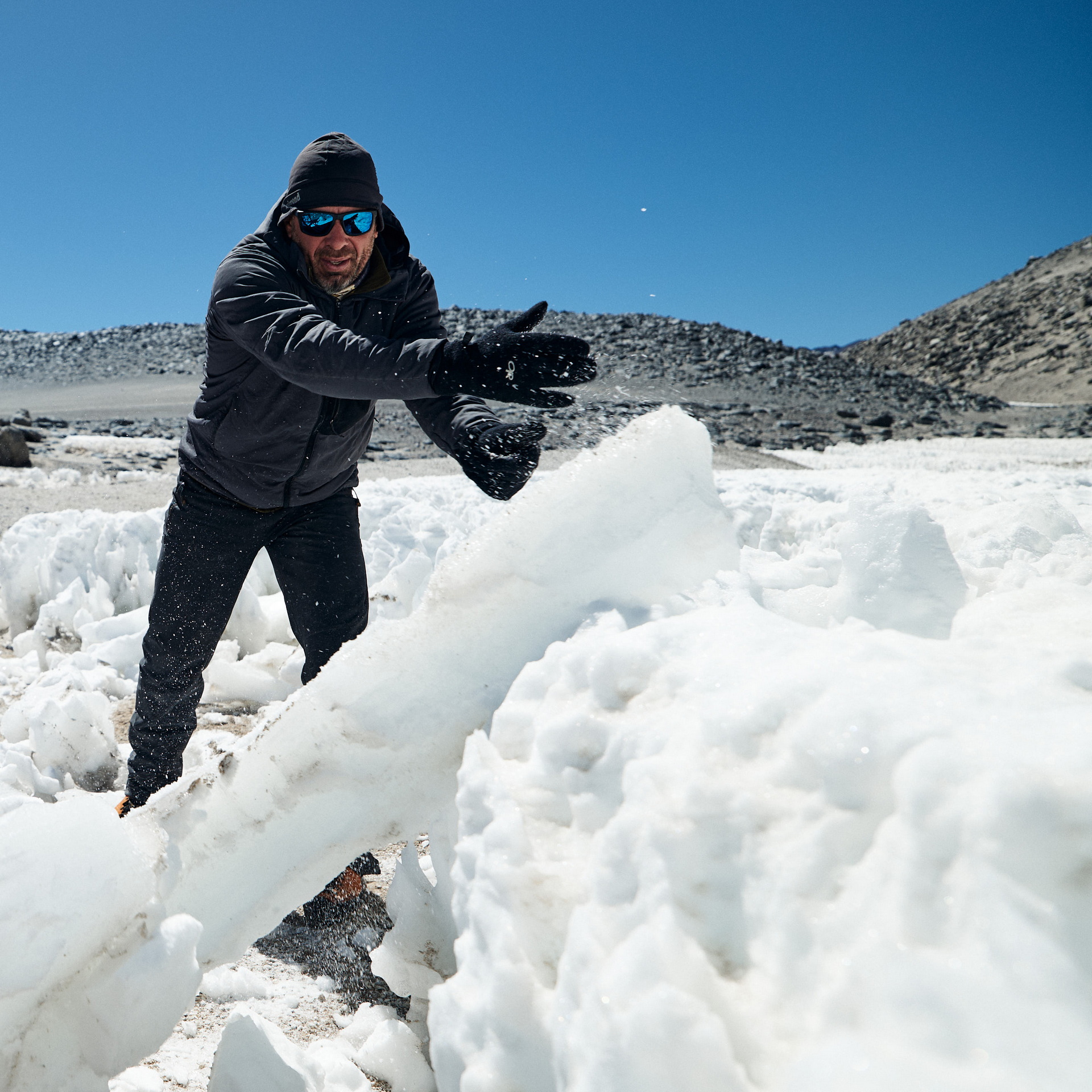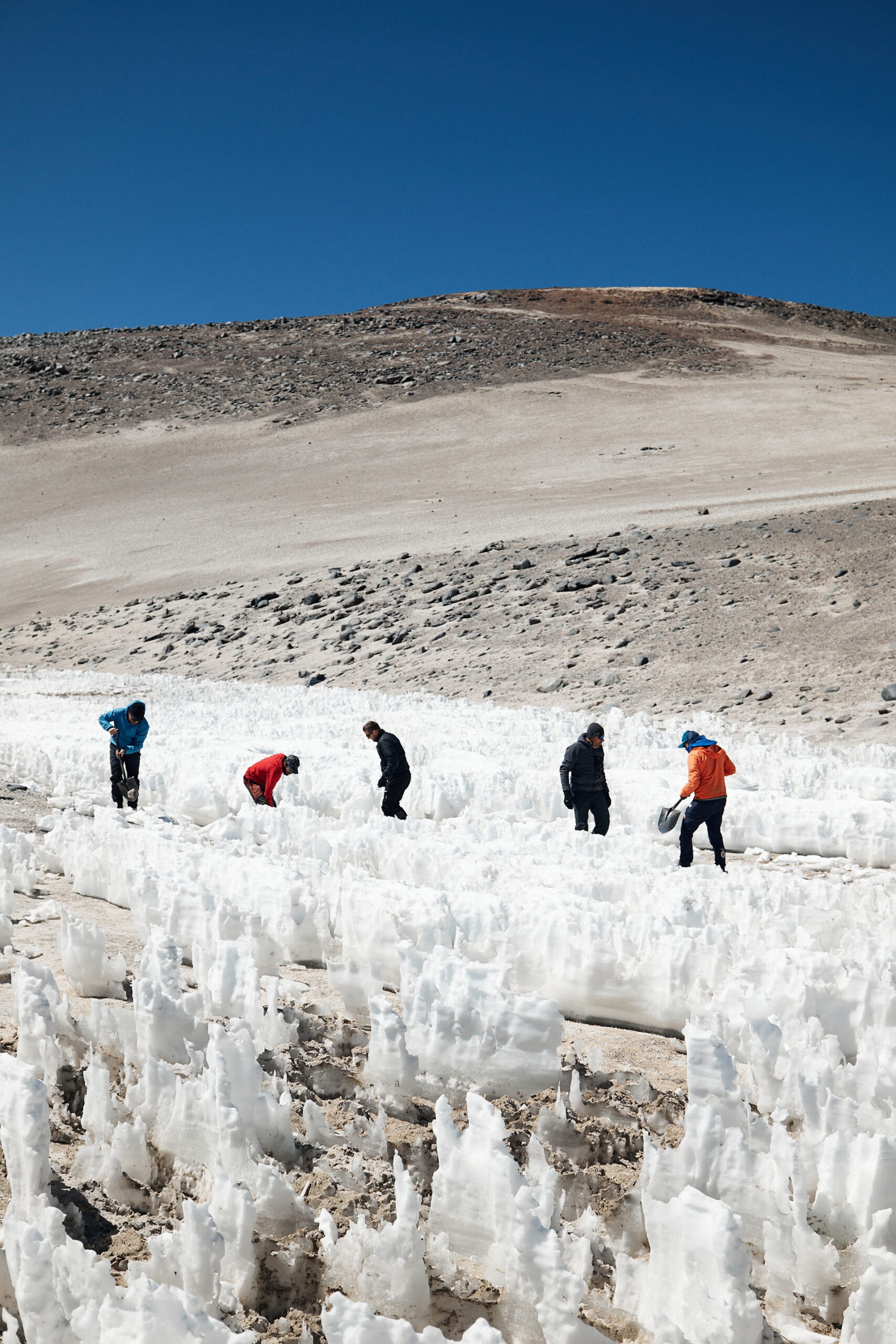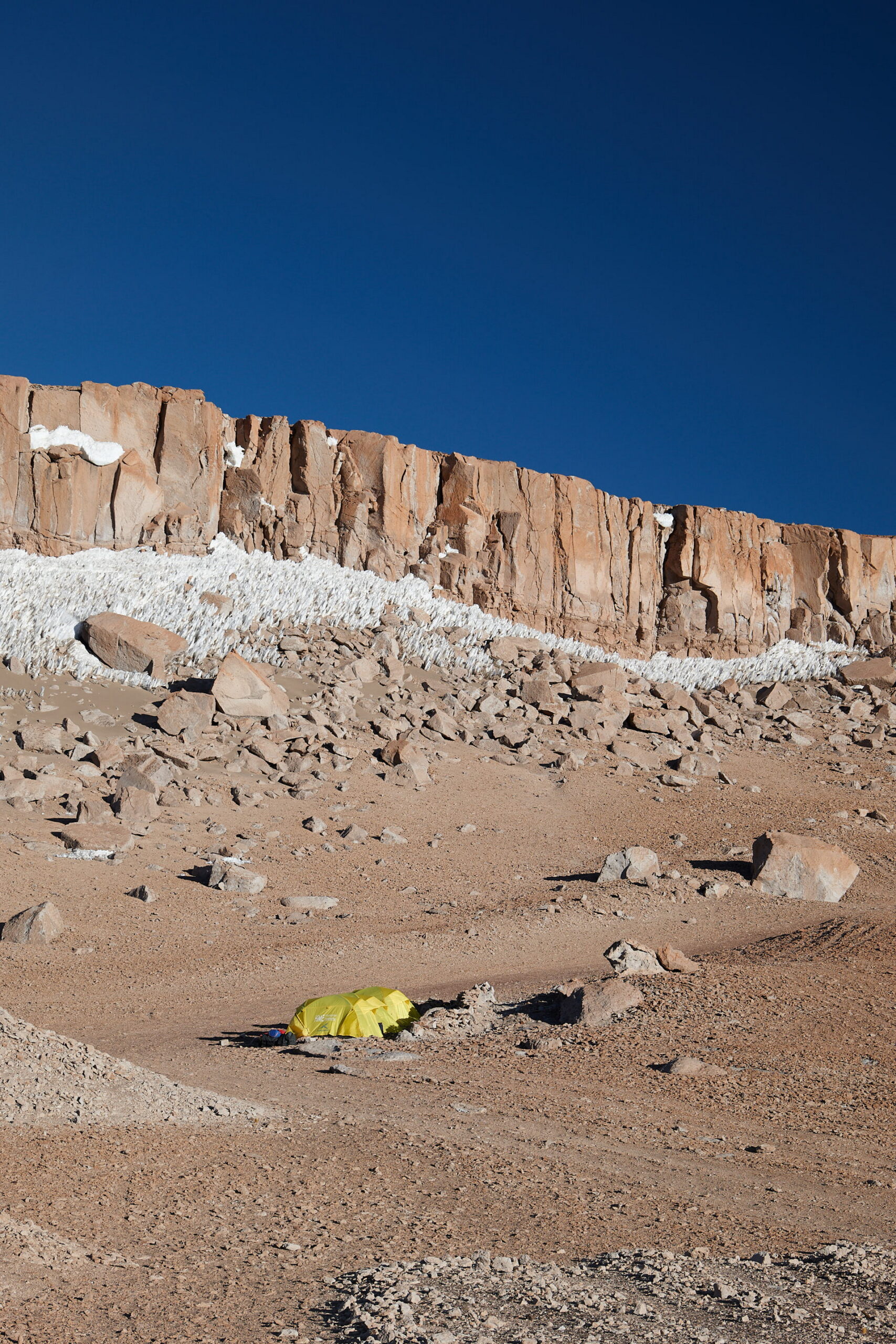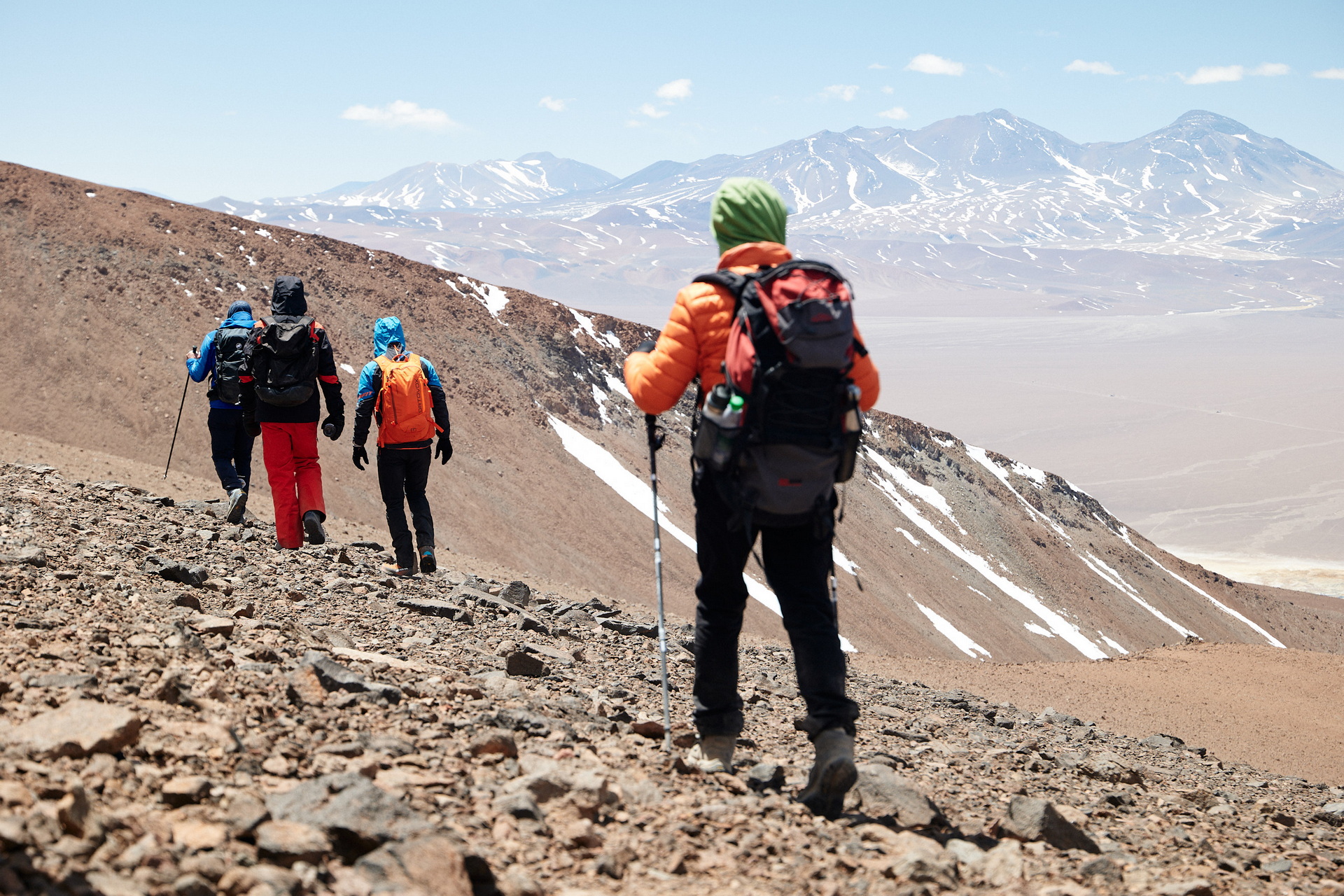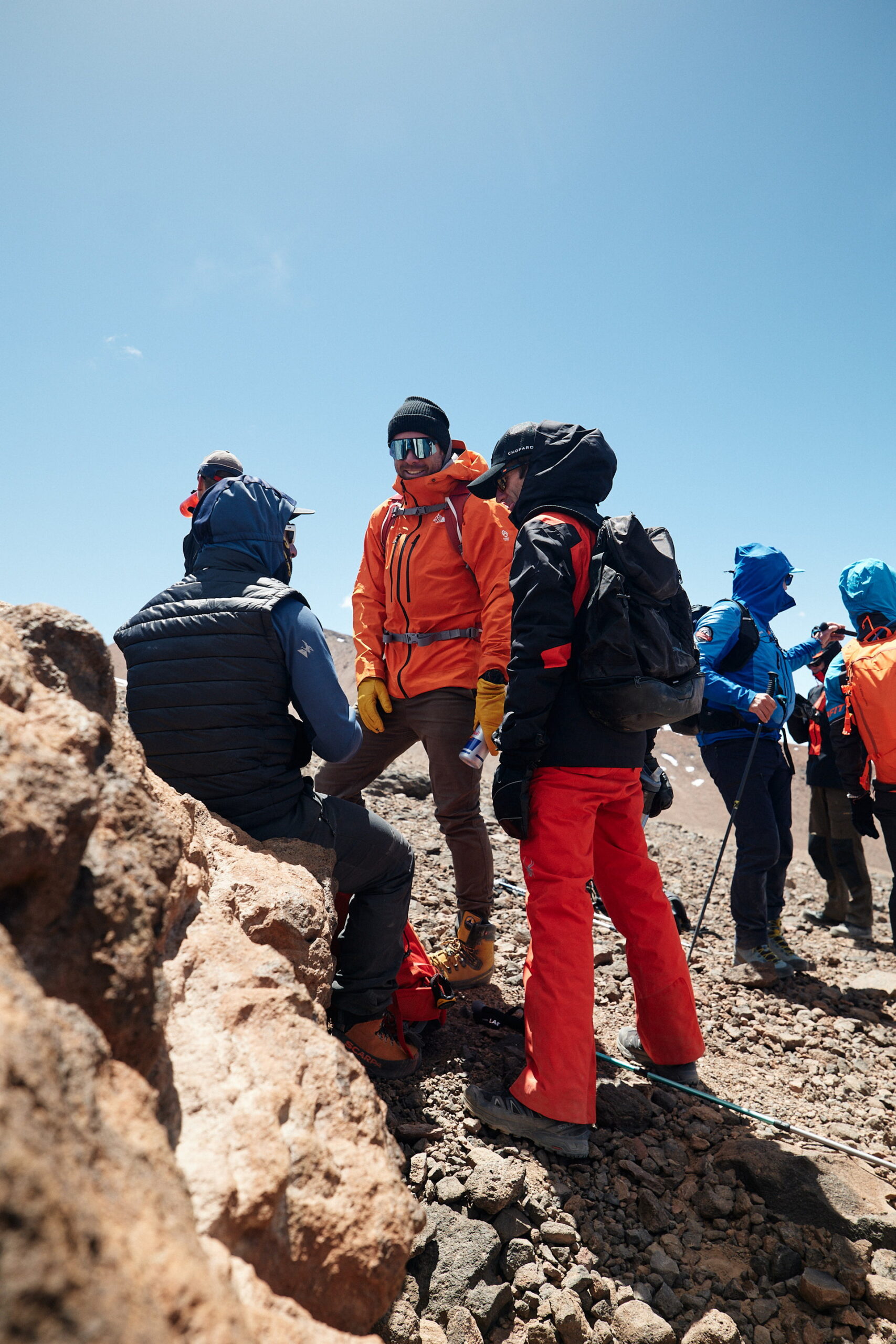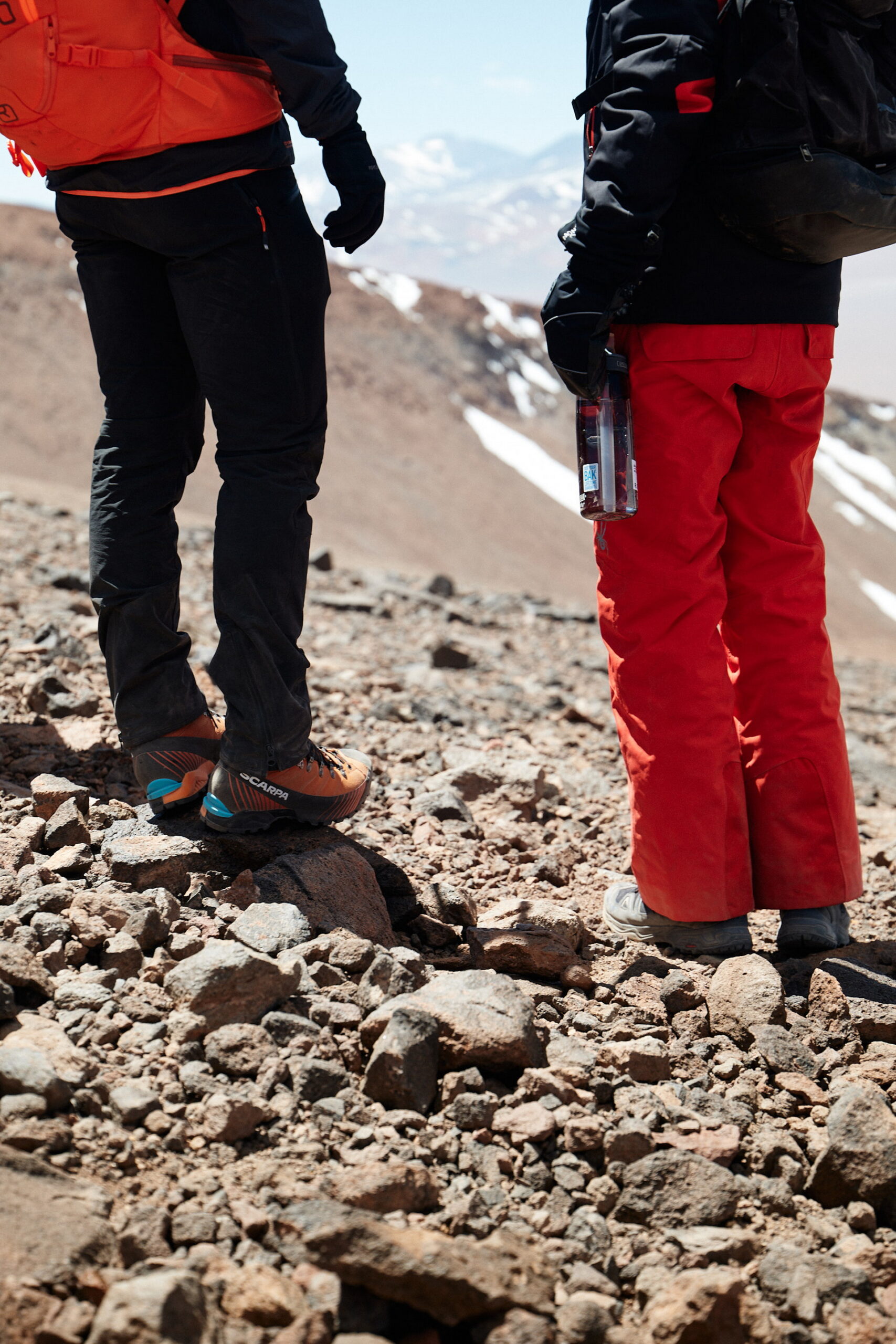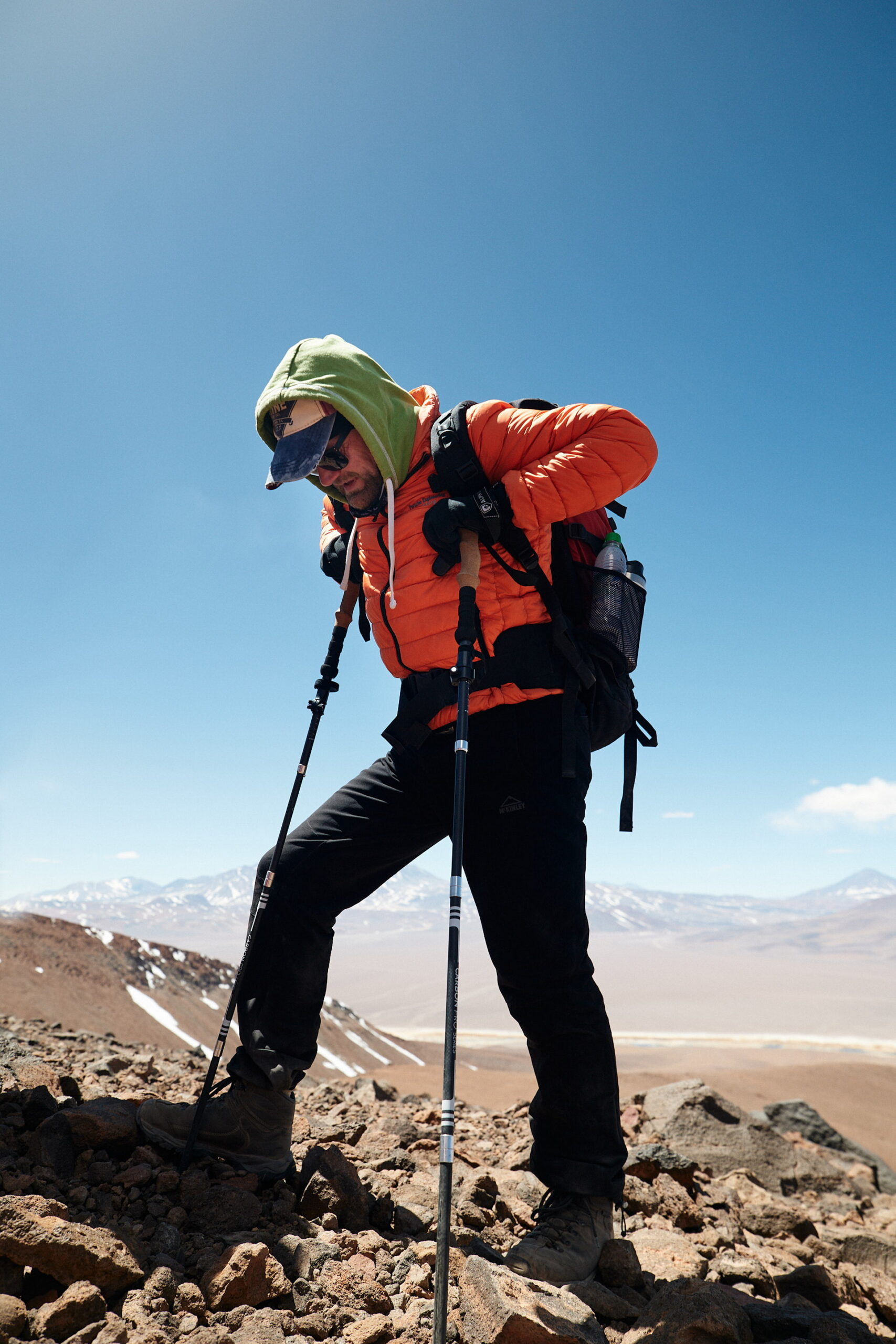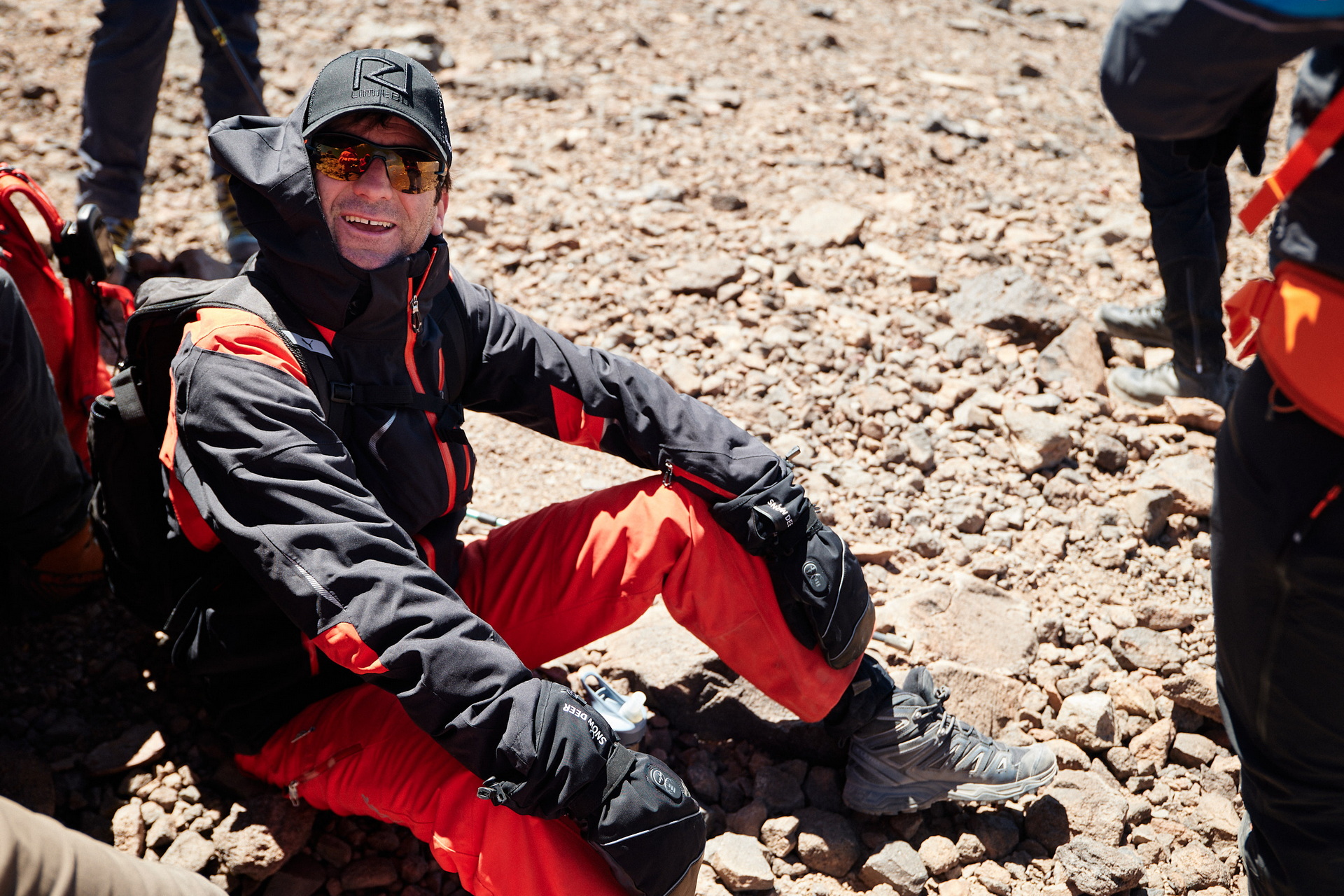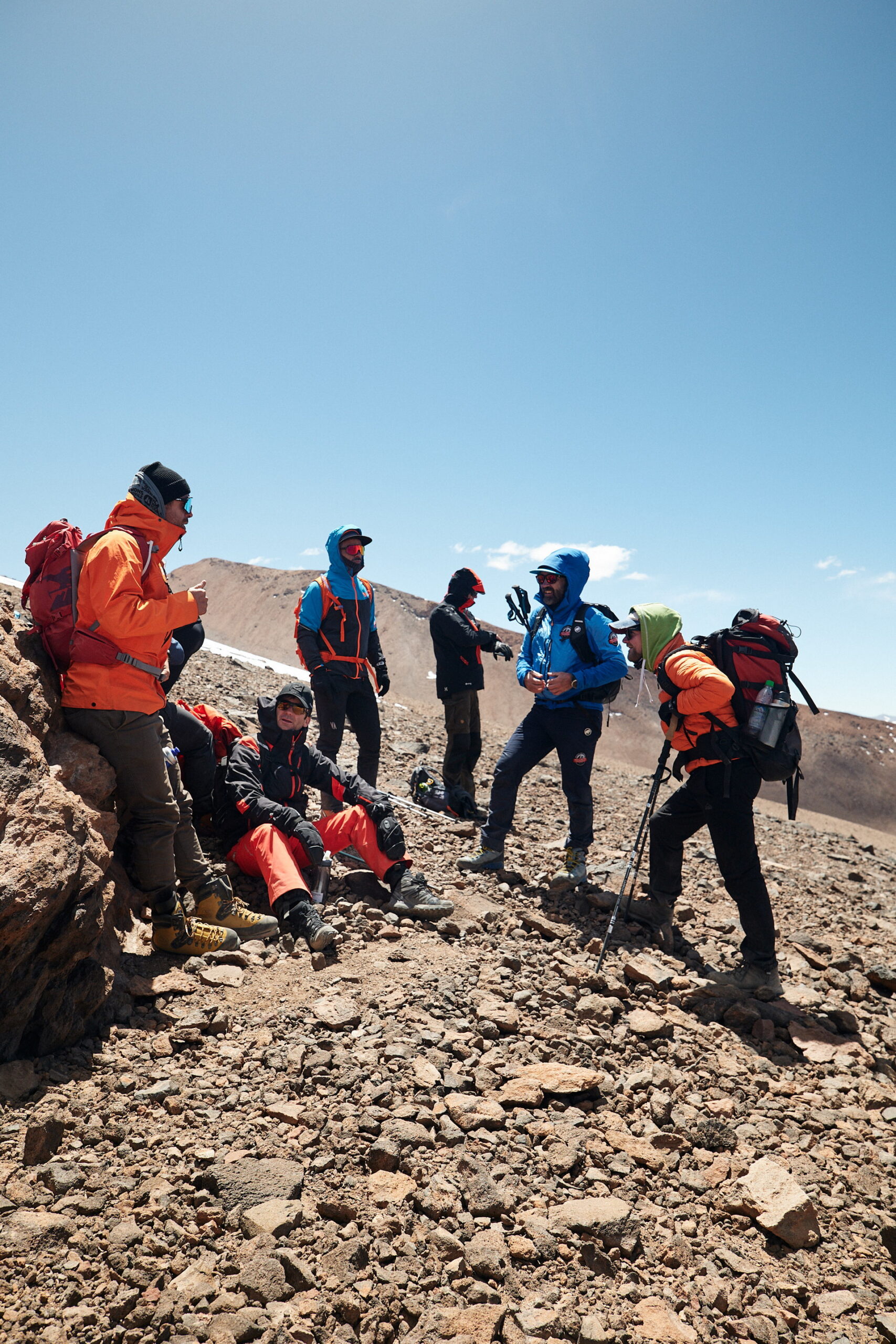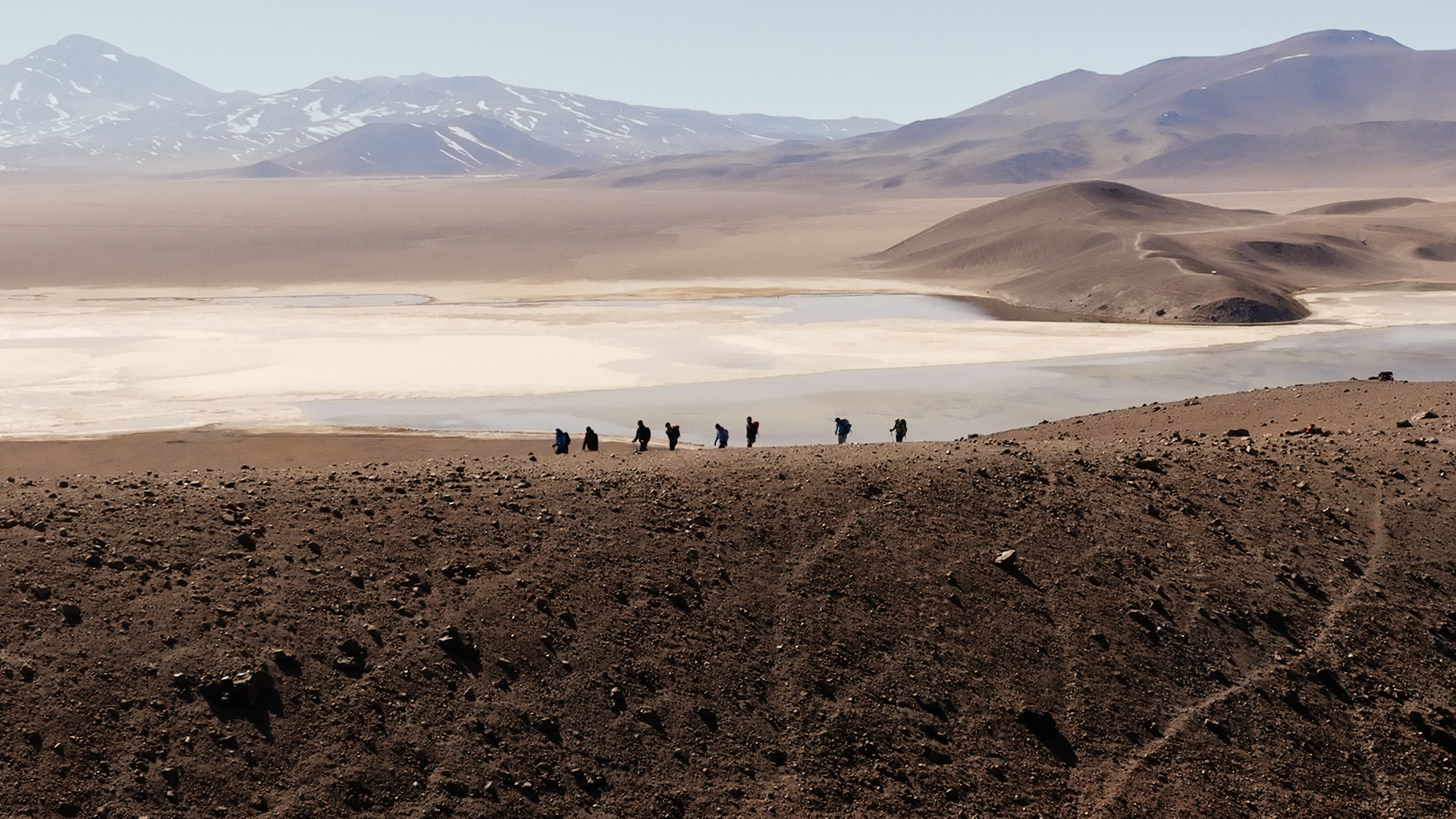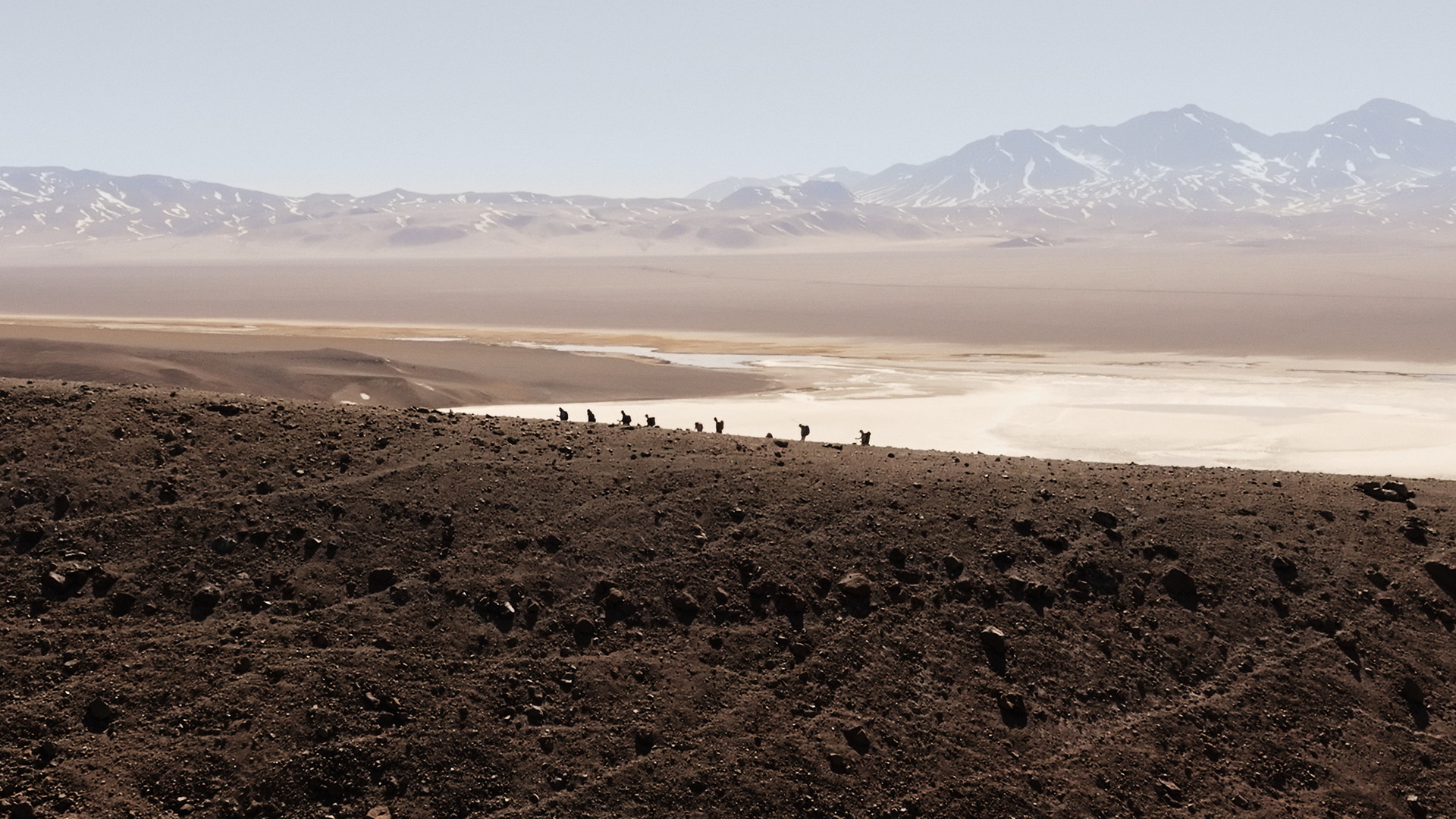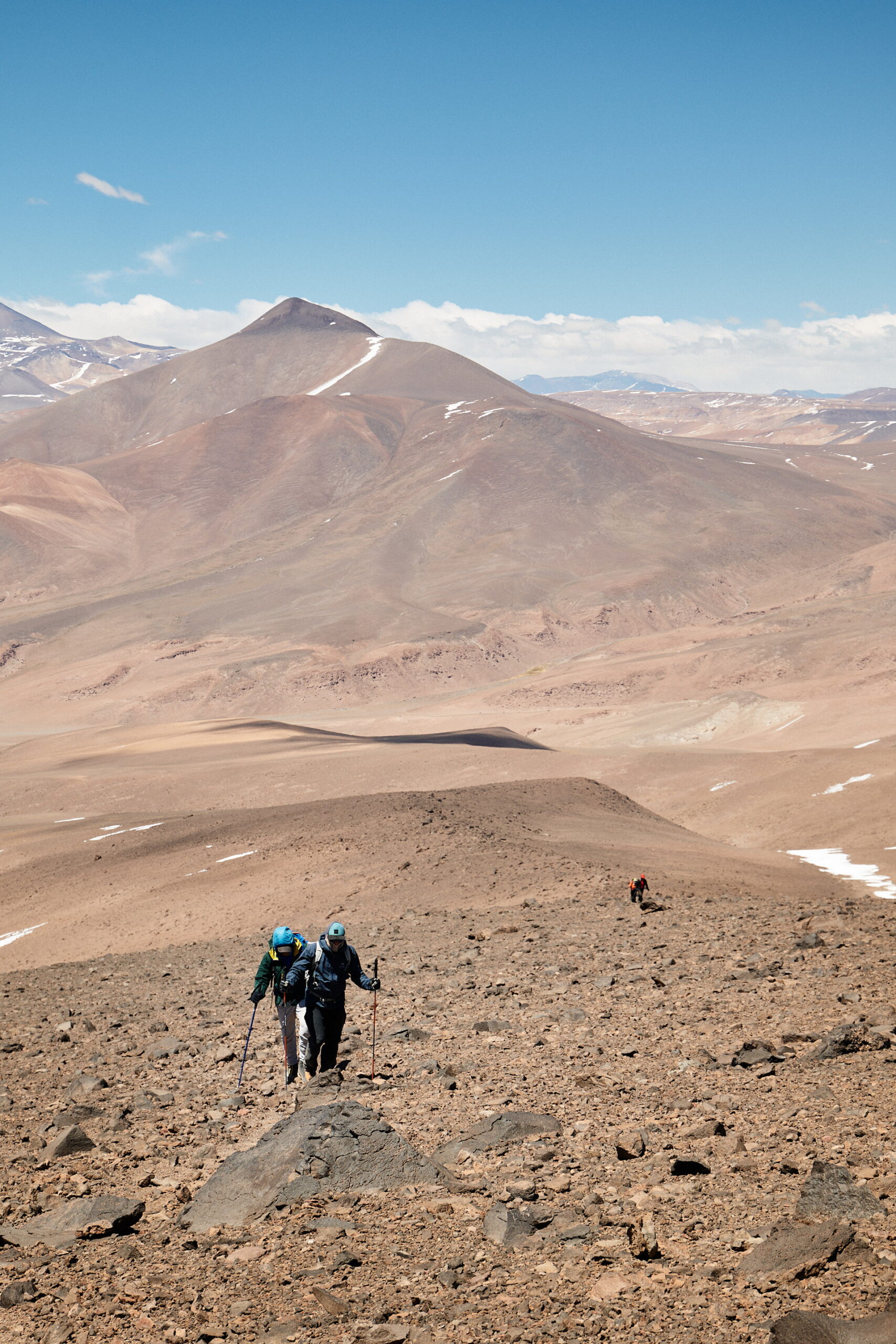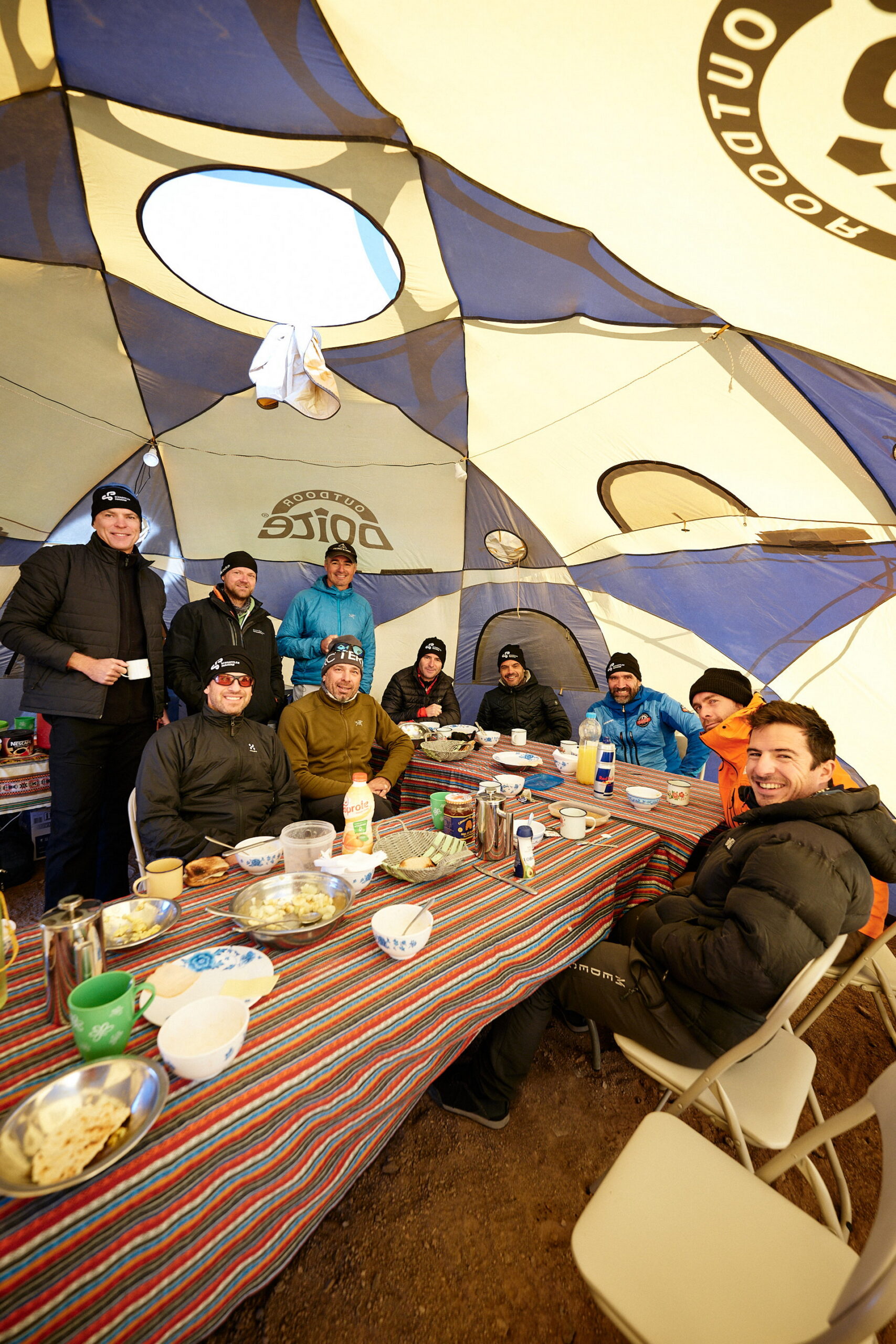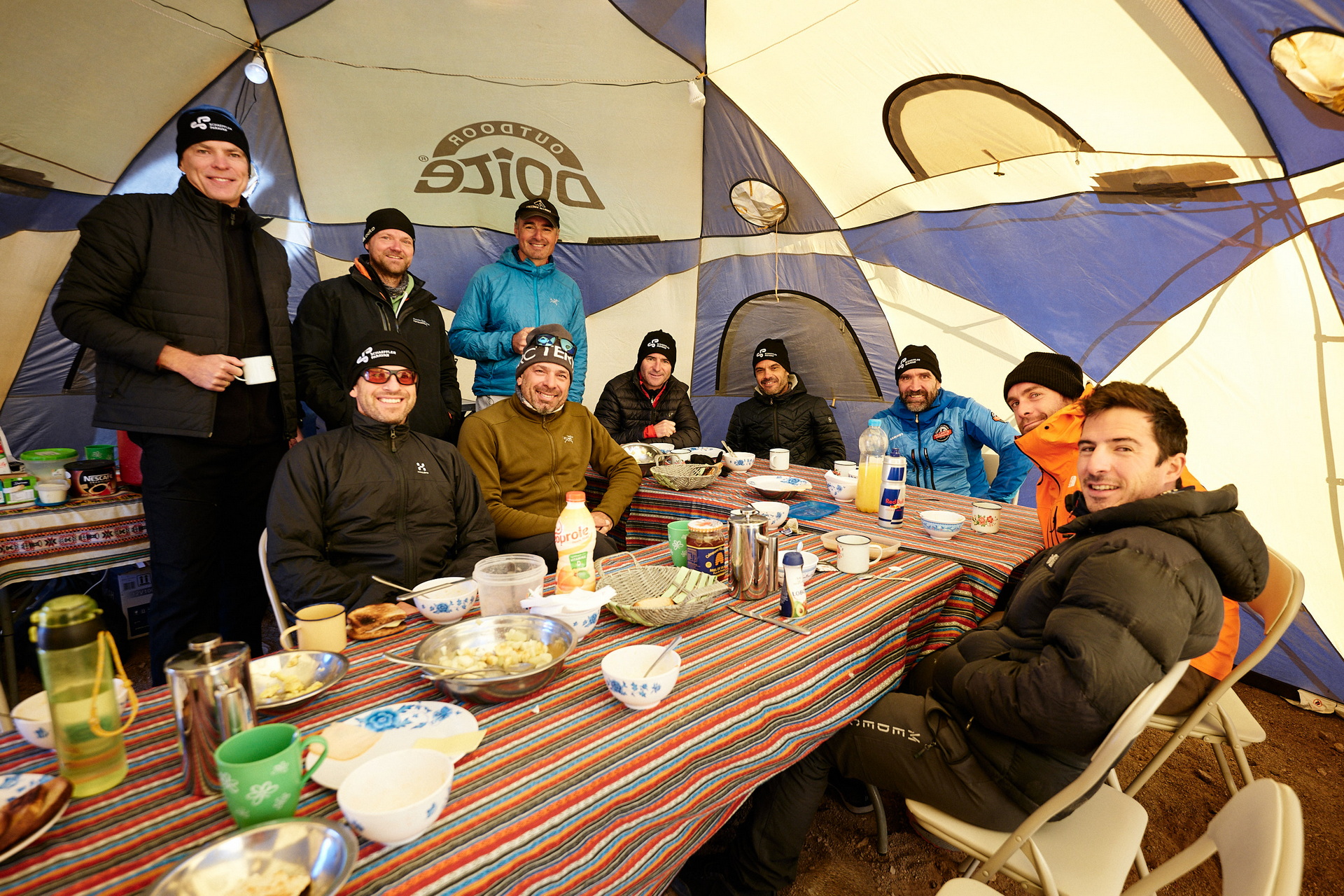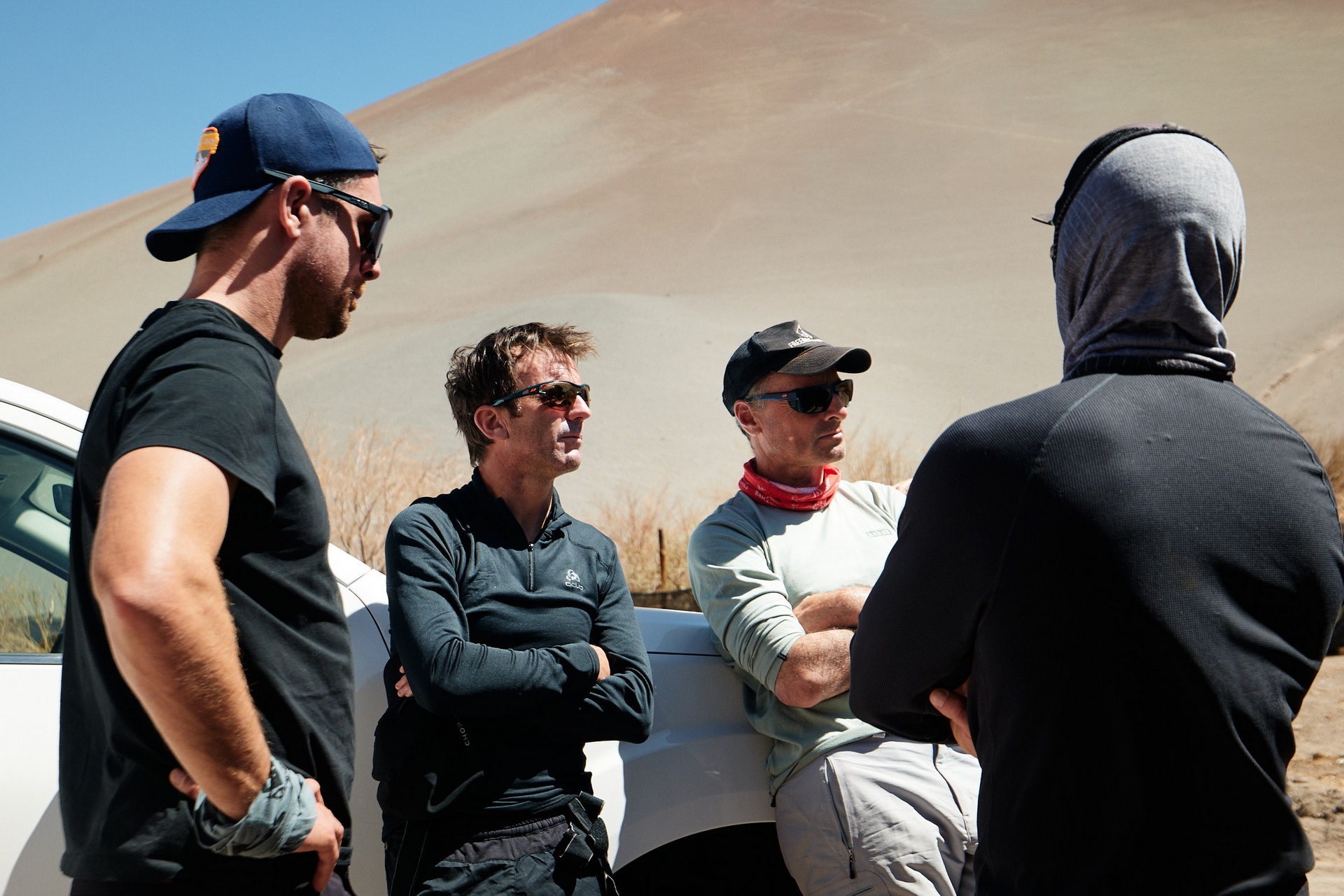Porsche has been testing a pair of 911 ‘Special Experimental Projects’ high on the slopes of the Ojos del Salado in Chile, the highest volcano on earth. The heavily modified off-roaders were able to reach a maximum altitude of 19,808 feet (6,007 meters) during their development.
The cars were tested by a team led by Le Mans winner and Pikes Peak record setter, Romain Dumas. The location was chosen as one of the toughest on earth, and the test only ended when walls of ice and snow prevented the team from going any farther up the volcano.
Read: Porsche May Pick “Dakar” Over “Safari” For Its High-Riding 911
“I guess the only machines anywhere in the world higher than us today were aircraft!” said Dumas after the test. “For the team and the car it was about learning—and right out of the box, the car was tough and nimble. We were hard on ourselves and really put it in the deep end for its first test, yet it felt at home.”
To make these special experimental prototypes, Porsche started with a pair of 911 Carrera 4S cars. Powered by the stock turbocharged flat-six, which makes 443 hp (330 kW/449 PS) at sea level, the cooling system was the moved higher to protect it during off-roading. Inside, the team added a roll cage, carbon fiber seats, and harnesses.
Portal Axles And Warp Connector
Portal axles and big all-terrain tires were added to give the car 350 mm (13.7 inches) of ground clearance. Lower gear ratios were added for more precise control at low speeds, and a special, lightweight Aramid fiber under body shield was added to protect it from the volcano’s jagged rocks.
In addition, the team fitted the cars with something thrillingly called a Porsche Warp-Connector, which was originally conceived for motorsports. The device forms a mechanical link between all four wheels to keep them constantly under load when the chassis is undergoing extreme articulation.
Along with the manual, switchable diff locks and an advanced steer-by-wire system contributed to great traction and control. To top it all off, a winch was added to the front of the 911 and the bodies were modified to make room for the 12-inch wide (310 mm) wheels and tires.
“It’s been magical to build a 911 like the world has never seen before—made possible by a small team of engineering enthusiasts,” said Michael Rösler, the director of the 911 model line. “The 911 has already been proven on the track and, of course, on the road. With this project, we’re shifting the focus to where there are no roads. Testing our theories means finding the harshest possible environments to see if they work—and on the highest volcano in the world, we succeeded.”
Read: Do These New Spy Shots Reveal The Porsche 911 Dakar’s Air Suspension?
Despite saying that the test was a success, Porsche doesn’t indicate what the project is building towards. While we have spied a number of off-road 911 prototypes on the road pointing to work on a roadgoing 911 Dakar model, these experimental vehicles were developed with the help of Romain Dumas Motorsport, have roll cages, and one is decorated with the same livery as the 963 LMDh racecar. It is noteworthy, though, that Porsche Motorsport does not appear to be running this program.
So, Does It Hint At A Production Car?
We reached out to Porsche and asked them whether the experimental 911s pointed towards a production model or technology that could be used in a future addition to the sports car’s range. Here’s what a spokesperson told us:
“In regards to your question regarding a potential production implication for the cars tested on the volcano, a direct copy will not be made for the road, and there are no plans to make the modifications used for the test available to our customers – but in the sense of creating a more adventurous 911; never say never.”
One way or another, the automaker is alluding to its rallying history and the famed 911 Dakar with it.
“Over 30 years ago, a team of Porsche engineers fitted four-wheel drive to a 911 to explore ‘what if?’ – and I’m proud that this natural curiosity and drive amongst engineers to explore the limits, to test new ideas and above all to inspire, is alive and well,” said Frank-Steffen Walliser, VP of complete vehicle architecture and characteristics at Porsche. “Projects like this one are vital to who we are at Porsche. As they began their journey, the team literally aimed sky-high. The first of what I hope will be many adventures.”








